Monday, March 23
-
GovMilSpace Opening Presentation - U.S. Space Force S2 Threat Brief + Opening Keynote
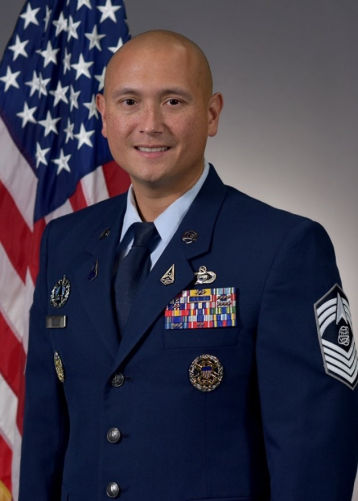 CMSgt Ron LerchSenior Enlisted Advisor (SEA) to the Deputy Chief of Space Operations for Intelligence (DCSO-I)U.S. Space ForceCMSgt Ron Lerch is the Senior Enlisted Advisor (SEA) to the Deputy Chief of Space Operations for Intelligence (DCSO-I), U.S. Space Force, Pentagon, VA. Chief Lerch serves as an advisor to the DCSO-I on all issues affecting the readiness of over 1,200 intelligence professionals throughout the service. Additionally, he advises on intelligence policy, oversight, and guidance of Space Force intelligence, surveillance and reconnaissance (ISR) capabilities. Chief Lerch entered the Air Force in July 2003 and graduated from Goodfellow AFB, TX as an intelligence operations apprentice in March 2004. His experience includes supporting low-observable programs, such as the B-2 stealth bomber and RQ-170 remotely piloted aircraft and working on the Nevada Test and Training Range. After transferring to the Space Force in 2020, he served as the Senior Enlisted Leader (SEL) to the Secretary of the Air Force, then the SEL of the 71st ISR Squadron, Peterson SFB, CO. Prior to his current assignment, he was the SEL for the Intelligence Directorate at Space Systems Command, Los Angeles AFB, CA. EDUCATION 2004 Intelligence Operations Analyst Course, Goodfellow AFB, TX (Distinguished Graduate) 2007 Airman Leadership School, Whiteman AFB, MO (John L. Levitow Award Recipient) 2012 Bachelor of Arts, Criminal Justice, Grantham University, MO (Summa Cum Laude) 2013 Non-Commissioned Officer Academy, Sheppard AFB, TX (Distinguished Graduate) 2019 Senior-Non-Commissioned Officer Academy, Gunter Annex, AL (Distinguished Graduate) ASSIGNMENTS 1. 2. 3. 4. 5. 6. 7. 8. 9. Mar 2004 - Nov 2008, NCOIC, Intel Ops, 509th Operations Support Squadron, Whiteman AFB, MO Dec 2008 - Dec 2013, Intel Flight Chief, 30th Reconnaissance Squadron, Tonopah Test Range, NV Jan 2014 - Dec 2018, SEL, Intel Analysis, HAF/A2, Pentagon, VA Jan 2018 - Jan 2019, Manager, Analysis and Training, 7AF/A2, Osan AB, Republic of Korea Feb 2019 - Oct 2019, Flight Chief, Mission Analysis Cell, Beale AFB, CA Oct 2019 - Jun 2021, SEL for the Secretary of the Air Force, Pentagon, VA Jun 2021 - Jul 2022, SEL, 71st ISRS, Peterson SFB, CO Jul 2022 - Jul 2024, SEL, SSC/S2, Los Angeles AFB, CA Jul 2024 - Present, SEA, Deputy CSO-I, Pentagon, VA MAJOR AWARDS AND DECORATIONS Legion of Merit Meritorious Service Medal with four oak leaf clusters Air Force Commendation Medal with three oak leaf clusters Joint Service Achievement Medal Air Force Achievement Medal with one oak leaf cluster OTHER ACHIEVEMENTS 2011, Presidential Unit Citation, Joint Task Force Neptune (Operation NEPTUNE'S SPEAR) 2017, National Intelligence Meritorious Unit Citation, National Joint Operations Intelligence Center EFFECTIVE DATES OF PROMOTION Airman, 29 Jul 2003 Airman 1st Class, 29 May 2004 Senior Airman, 29 Jan 2006 Staff Sergeant, 01 Aug 2007 Technical Sergeant, 01 Jul 2010 Master Sergeant, 01 Mar 2015 Senior Master Sergeant, 01 Jun 2020 Chief Master Sergeant, 01 Aug 2023
CMSgt Ron LerchSenior Enlisted Advisor (SEA) to the Deputy Chief of Space Operations for Intelligence (DCSO-I)U.S. Space ForceCMSgt Ron Lerch is the Senior Enlisted Advisor (SEA) to the Deputy Chief of Space Operations for Intelligence (DCSO-I), U.S. Space Force, Pentagon, VA. Chief Lerch serves as an advisor to the DCSO-I on all issues affecting the readiness of over 1,200 intelligence professionals throughout the service. Additionally, he advises on intelligence policy, oversight, and guidance of Space Force intelligence, surveillance and reconnaissance (ISR) capabilities. Chief Lerch entered the Air Force in July 2003 and graduated from Goodfellow AFB, TX as an intelligence operations apprentice in March 2004. His experience includes supporting low-observable programs, such as the B-2 stealth bomber and RQ-170 remotely piloted aircraft and working on the Nevada Test and Training Range. After transferring to the Space Force in 2020, he served as the Senior Enlisted Leader (SEL) to the Secretary of the Air Force, then the SEL of the 71st ISR Squadron, Peterson SFB, CO. Prior to his current assignment, he was the SEL for the Intelligence Directorate at Space Systems Command, Los Angeles AFB, CA. EDUCATION 2004 Intelligence Operations Analyst Course, Goodfellow AFB, TX (Distinguished Graduate) 2007 Airman Leadership School, Whiteman AFB, MO (John L. Levitow Award Recipient) 2012 Bachelor of Arts, Criminal Justice, Grantham University, MO (Summa Cum Laude) 2013 Non-Commissioned Officer Academy, Sheppard AFB, TX (Distinguished Graduate) 2019 Senior-Non-Commissioned Officer Academy, Gunter Annex, AL (Distinguished Graduate) ASSIGNMENTS 1. 2. 3. 4. 5. 6. 7. 8. 9. Mar 2004 - Nov 2008, NCOIC, Intel Ops, 509th Operations Support Squadron, Whiteman AFB, MO Dec 2008 - Dec 2013, Intel Flight Chief, 30th Reconnaissance Squadron, Tonopah Test Range, NV Jan 2014 - Dec 2018, SEL, Intel Analysis, HAF/A2, Pentagon, VA Jan 2018 - Jan 2019, Manager, Analysis and Training, 7AF/A2, Osan AB, Republic of Korea Feb 2019 - Oct 2019, Flight Chief, Mission Analysis Cell, Beale AFB, CA Oct 2019 - Jun 2021, SEL for the Secretary of the Air Force, Pentagon, VA Jun 2021 - Jul 2022, SEL, 71st ISRS, Peterson SFB, CO Jul 2022 - Jul 2024, SEL, SSC/S2, Los Angeles AFB, CA Jul 2024 - Present, SEA, Deputy CSO-I, Pentagon, VA MAJOR AWARDS AND DECORATIONS Legion of Merit Meritorious Service Medal with four oak leaf clusters Air Force Commendation Medal with three oak leaf clusters Joint Service Achievement Medal Air Force Achievement Medal with one oak leaf cluster OTHER ACHIEVEMENTS 2011, Presidential Unit Citation, Joint Task Force Neptune (Operation NEPTUNE'S SPEAR) 2017, National Intelligence Meritorious Unit Citation, National Joint Operations Intelligence Center EFFECTIVE DATES OF PROMOTION Airman, 29 Jul 2003 Airman 1st Class, 29 May 2004 Senior Airman, 29 Jan 2006 Staff Sergeant, 01 Aug 2007 Technical Sergeant, 01 Jul 2010 Master Sergeant, 01 Mar 2015 Senior Master Sergeant, 01 Jun 2020 Chief Master Sergeant, 01 Aug 2023 -
Finance Forum Opening Keynote: Unicorns, Orbits, Opportunity: SpaceTech at a Tipping Point
Our Finance Forum opening keynote presentation features Mark Boggett, CEO at Seraphim Space leading a deep dive into the evolving global SpaceTech landscape. Mark will offer attendees valuable insights into how private capital is shaping the future of the space industry. Key discussion points will include: Dual-Use innovation and defense applications; macro trends driving the SpaceTech investment case for entrepreneurs, governments, and corporates alike; insights into portfolio strategy, technology readiness, timing market entry, and how to assess long-term value in frontier technology investment. Attendees will also gain exclusive access to recent data and analysis from the Seraphim Space Index--recognized as the most comprehensive tracker of global investment trends in SpaceTech. This includes private funding trends, strategic M&A activity, and investor sentiment across key subsectors such as Earth observation, in-orbit servicing, and satellite communications. This presentation is ideal for attendees looking to understand where the next wave of SpaceTech investment is headed and how capital allocators are navigating this rapidly evolving market.
 Mark BoggettCEOSeraphim SpaceMark is the CEO and co-founder of Seraphim Space, an investment firm exclusively focused on SpaceTech domain globally. Seraphim launched the world's first Space VC fund in 2016. On top this, it now operates its Seraphim Space Accelerator and a space growth fund, listed on the London Stock Exchange. Across these three elements Seraphim has built a portfolio of well over 100 SpaceTech startups - the world's most prolific investor in the space domain.
Mark BoggettCEOSeraphim SpaceMark is the CEO and co-founder of Seraphim Space, an investment firm exclusively focused on SpaceTech domain globally. Seraphim launched the world's first Space VC fund in 2016. On top this, it now operates its Seraphim Space Accelerator and a space growth fund, listed on the London Stock Exchange. Across these three elements Seraphim has built a portfolio of well over 100 SpaceTech startups - the world's most prolific investor in the space domain. -
Integrated Sensors for National Missile Defense
Advanced sensors will be a key part of any effort to field an extensive national missile defense umbrella by late 2028. What are the best approaches to accelerate the Hypersonic and Ballistic Tracking Space Sensor (HBTSS) and other sensor layers?
U.S. Space Force SATCOM Evolving Technologies: User, Operator and Acquirer Perspectives
This session is part of U.S. Space Force's "Reverse Industry Day" agenda being held at SATELLITE x GovMilSpace. During this discussion, Space Force military leaders will share how and why they are partnering with industry in advancing key critical capabilities to support the future for Strategic Satellite Communications (SATCOM). Learn what is driving key critical capabilities and how Space Force plans to work with commercial industry - consolidating ideas, offerings, architectures, and technologies from various vendors - to support capabilities beyond 2035 and ensure preservation of the industrial base. This session is open only to SATELLITE and GovMilSpace conference pass holders. This session will be closed to press and Chatham House rules will be in place.
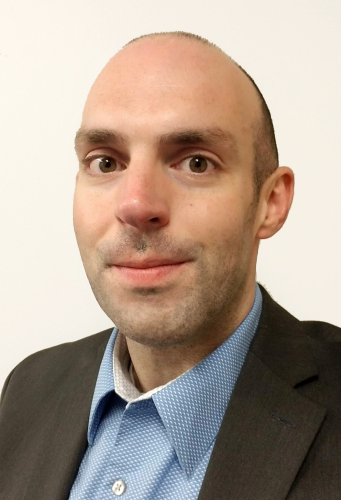 Moderator
Jeffrey HillExecutive ChairmanSATELLITE & GovMilSpaceJeff serves as the executive chairman of the annual SATELLITE conference and exhibition in Washington D.C., overseeing the creation of the conference program and emceeing the event. He is also the creator and producer of Via Satellite's On Orbit podcast and the host of Via Satellite's Future Space Economy and Technology Webcast Series. Over the course of his 15-plus year career, Jeff has become one of the most connected people in the space and satellite industry. He has interviewed hundreds of prominent space and technology leaders, as well as hundreds of policy makers, investors, influencers and executives from all over the world.
Moderator
Jeffrey HillExecutive ChairmanSATELLITE & GovMilSpaceJeff serves as the executive chairman of the annual SATELLITE conference and exhibition in Washington D.C., overseeing the creation of the conference program and emceeing the event. He is also the creator and producer of Via Satellite's On Orbit podcast and the host of Via Satellite's Future Space Economy and Technology Webcast Series. Over the course of his 15-plus year career, Jeff has become one of the most connected people in the space and satellite industry. He has interviewed hundreds of prominent space and technology leaders, as well as hundreds of policy makers, investors, influencers and executives from all over the world.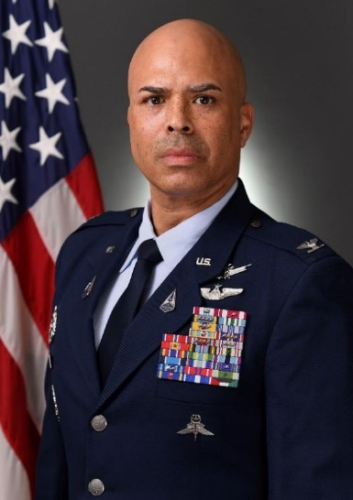 Colonel A.J. AshbyCommander, System Delta 88 (MILSATCOM)U.S. Space ForceColonel A.J. Ashby is the Commander for System Delta 88, Military Satellite Communications (MILSATCOM), Space Systems Command, Los Angeles Air Force Base, California. He leads more than 1,000 elite military and civilian space-minded warfighters and acquisition professionals. He is responsible for the innovation, acquisition, and deployment of our nation's most resilient and survivable joint and international partner Narrowband, Wideband, Protected Tactical, and Protected Strategic (Nuclear Command, Control and Communications) MILSATCOM weapon systems worth more than $24 billion. Colonel Ashby enlisted in the U.S. Air Force in 1990 and received his commission after completing Air Force Officer Training School in 2001. He transferred to the U.S. Space Force in 2021. Col Ashby served in numerous acquisition and operational leadership and Headquarter Staff assignments within the Department of the Air Force, Joint Staff, and National Reconnaissance Office. He is also an experienced Special Missions Unit operator with multiple global contingency and humanitarian deployments with 5,300 hours in a variety of aircraft with 133 combat missions. Prior to his current position he served as the System Program Director and Division Chief for Strategic SATCOM, Military Communications and Positioning, Navigation, and Timing Directorate, Space Systems Command, Los Angeles Air Force Base, California. EDUCATION: 1995 Airman Leadership School, Travis AFB, CA 1999 Associate of Applied Science, Aircrew Operations, Community College of the Air Force 2000 Bachelor of Science, Business Administration, University of Phoenix 2002 Aerospace Basic Course, Maxwell AFB, AL 2003 Advanced Project Management, Stanford University, Palo Alto CA 2007 Squadron Officer School, Maxwell AFB, AL 2007 Space Systems Operations, Naval Postgraduate School, Monterey CA 2007 Master of Business Administration, California State Polytechnic University, Pomona, CA 2013 Air Command and Staff College, Maxwell AFB, AL 2013 Master of Military Operational Art and Science, Air University, Maxwell AFB, AL 2016 Program Managers Course, Defense Systems Management College, Fort Belvoir, VA 2017 Air War College, Maxwell AFB, AL (Correspondence) 2020 SDE Blue Horizons CSAF Fellowship, USAF Center for Strategy and Technology, Maxwell AFB, AL 2020 Master of Airpower Strategy and Technology Integration, Air University, Maxwell AFB, AL 2020 Joint and Combined Warfighting School, Joint Forces Staff College, Norfolk, VA 2022 Artificial Intelligence and Machine Learning in Business, Massachusetts Institute of Technology, Cambridge, MA 2025 Executive Program Managers Course, Defense Systems Management College, Fort Belvoir, VA ASSIGNMENTS: 1. September 2001 - May 2002, Special Studies Analyst, Satellite and Launch Control Systems Program Office, Los Angeles AFB, CA 2. May 2002 - March 2003, Project Manager, Air Force Satellite Control Network, Satellite and Launch Control Systems Program Office, Los Angeles AFB, CA. 3. March 2003 - September 2003, Aerospace Fellow, The Aerospace Corporation, El Segundo, CA. 4. September 2003 - October 2004, Deputy Branch Chief, Air Force Satellite Control Network, Systems Architecture Engineering, Satellite and Launch Control Systems Program Office, Los Angeles AFB, CA. 5. October 2004 - August 2005, Executive Officer, Launch and Test Range Systems Group, Satellite and Launch Control Systems Program Office, Los Angeles AFB, CA. 6. August 2005 - July 2006, Education With Industry-Spacelift Education and Crossover Program, The Boeing Company, Integrated Defense Systems, with duty at Space Launch Complex-6, Vandenberg AFB CA. 7. July 2006 - July 2008, Flight Commander, Delta IV Launch Operations, 4th Space Launch Squadron, Vandenberg AFB, CA. 8. July 2008 - July 2009, Chief Standardization and Evaluation/Flight Commander, Launch Group Quality Assurance, 30th Launch Group, Vandenberg AFB, CA. 9. July 2009 - August 2010, Constellation Mission Director, Operations Division Seven, Overhead Collection Management Center, National Reconnaissance Office with duty at Headquarters, National Security Agency, Fort George G. Meade, MD. 10. August 2010 - August 2012, Squadron Operations Officer, Operations Division Seven, Overhead Collection Management Center, National Reconnaissance Office, with duty at Headquarters, National Security Agency, Fort George G. Meade, MD. 11. August 2012 - July 2013, Student, Air Command and Staff College, Maxwell AFB, AL 12. July 2013 - May 2014, Program Element Monitor, Global Positioning System and Nuclear Detonation and Detection System (GPS/NDS), Directorate of Space Programs, Assistant Secretary of the Air Force (Acquisitions) (SAF/AQS), Pentagon, Washington D.C. 13. May 2014 - April 2015, Executive Officer, Directorate of Space Programs, Assistant Secretary of the Air Force (Acquisition) (SAF/AQS), Pentagon, Washington D.C. 14. April 2015 - August 2016, Congressional Liaison Officer, Air Force Senate Liaison Office, Office of Legislative Liaison, Secretary of the Air Force, Pentagon, Washington D.C. 15. August 2016 - August 2019, Materiel Leader, Office of Space Launch, National Reconnaissance Office, Chantilly, VA. 16. August 2019 - July 2020, Blue Horizons CSAF Fellow, USAF Center for Strategy & Technology, Maxwell AFB, AL. 17. July 2020 - July 2022, Defense Resource Manager, Joint Staff (J8) Resources and Acquisition, Program and Budget Analysis Division, Pentagon, Washington, DC. 18. July 2022 - July 2023, Division Chief, Space Sensing and Nuclear Command, Control, and Communications, Office of the Assistant Secretary of the Air Force for Space Acquisition and Integration, Washington, D.C. 19. July 2023 - September 2025, System Program Director, Acquisition Delta, Strategic SATCOM Division, Space Systems Command, Los Angeles Air Force Base, CA. 20. September 2025 - Present, Commander, System Delta 88, Military Satellite Communications, Space Systems Command, Los Angeles Air Force Base, CA. SUMMARY OF JOINT ASSIGNMENTS 1. July 2020 - July 2022, Defense Resource Manager, Joint Chiefs of Staff, Headquarters Department of the Air Force, the Pentagon, Arlington, VA., as a Lieutenant Colonel 2. July 2022 - July 2023, Division Chief, Space Sensing and Nuclear Command, Control, and Communications, Office of the Assistant Secretary of the Air Force for Space Acquisition and Integration, Washington, D.C., as a Colonel MAJOR AWARDS AND DECORATIONS: Legion of Merit Defense Meritorious Service Medal with two Oak Leaf Clusters Meritorious Service Medal with two Oak Leaf Clusters Aerial Achievement Medal with four Oak Leaf Clusters Joint Service Commendation Medal Air Force Commendation Medal with three Oak Leaf Clusters Air Force Achievement Medal Joint Meritorious Unit Award one Oak Leaf Cluster Combat Readiness Medal with four Oak Leaf Clusters Air Force Good Conduct Medal with three Oak Leaf Clusters National Defense Service Medal with one Bronze Star Device Armed Forces Expeditionary Medal Southwest Asia Service Medal with one Bronze Star Device Global War on Terrorism Service Medal Armed Forces Service Medal Humanitarian Service Medal Nuclear Deterrence Operations Service Medal with two Oak Leaf Clusters NATO Medal (Kosovo) Kuwait Liberation Medal (Government of Kuwait) EFFECTIVE DATES OF PROMOTION: Second Lieutenant June 28, 2001 First Lieutenant June 28, 2003 Captain June 28, 2005 Major September 1, 2011 Lieutenant Colonel September 1, 2016 Colonel June 1, 2022 (Current as of September 2025)
Colonel A.J. AshbyCommander, System Delta 88 (MILSATCOM)U.S. Space ForceColonel A.J. Ashby is the Commander for System Delta 88, Military Satellite Communications (MILSATCOM), Space Systems Command, Los Angeles Air Force Base, California. He leads more than 1,000 elite military and civilian space-minded warfighters and acquisition professionals. He is responsible for the innovation, acquisition, and deployment of our nation's most resilient and survivable joint and international partner Narrowband, Wideband, Protected Tactical, and Protected Strategic (Nuclear Command, Control and Communications) MILSATCOM weapon systems worth more than $24 billion. Colonel Ashby enlisted in the U.S. Air Force in 1990 and received his commission after completing Air Force Officer Training School in 2001. He transferred to the U.S. Space Force in 2021. Col Ashby served in numerous acquisition and operational leadership and Headquarter Staff assignments within the Department of the Air Force, Joint Staff, and National Reconnaissance Office. He is also an experienced Special Missions Unit operator with multiple global contingency and humanitarian deployments with 5,300 hours in a variety of aircraft with 133 combat missions. Prior to his current position he served as the System Program Director and Division Chief for Strategic SATCOM, Military Communications and Positioning, Navigation, and Timing Directorate, Space Systems Command, Los Angeles Air Force Base, California. EDUCATION: 1995 Airman Leadership School, Travis AFB, CA 1999 Associate of Applied Science, Aircrew Operations, Community College of the Air Force 2000 Bachelor of Science, Business Administration, University of Phoenix 2002 Aerospace Basic Course, Maxwell AFB, AL 2003 Advanced Project Management, Stanford University, Palo Alto CA 2007 Squadron Officer School, Maxwell AFB, AL 2007 Space Systems Operations, Naval Postgraduate School, Monterey CA 2007 Master of Business Administration, California State Polytechnic University, Pomona, CA 2013 Air Command and Staff College, Maxwell AFB, AL 2013 Master of Military Operational Art and Science, Air University, Maxwell AFB, AL 2016 Program Managers Course, Defense Systems Management College, Fort Belvoir, VA 2017 Air War College, Maxwell AFB, AL (Correspondence) 2020 SDE Blue Horizons CSAF Fellowship, USAF Center for Strategy and Technology, Maxwell AFB, AL 2020 Master of Airpower Strategy and Technology Integration, Air University, Maxwell AFB, AL 2020 Joint and Combined Warfighting School, Joint Forces Staff College, Norfolk, VA 2022 Artificial Intelligence and Machine Learning in Business, Massachusetts Institute of Technology, Cambridge, MA 2025 Executive Program Managers Course, Defense Systems Management College, Fort Belvoir, VA ASSIGNMENTS: 1. September 2001 - May 2002, Special Studies Analyst, Satellite and Launch Control Systems Program Office, Los Angeles AFB, CA 2. May 2002 - March 2003, Project Manager, Air Force Satellite Control Network, Satellite and Launch Control Systems Program Office, Los Angeles AFB, CA. 3. March 2003 - September 2003, Aerospace Fellow, The Aerospace Corporation, El Segundo, CA. 4. September 2003 - October 2004, Deputy Branch Chief, Air Force Satellite Control Network, Systems Architecture Engineering, Satellite and Launch Control Systems Program Office, Los Angeles AFB, CA. 5. October 2004 - August 2005, Executive Officer, Launch and Test Range Systems Group, Satellite and Launch Control Systems Program Office, Los Angeles AFB, CA. 6. August 2005 - July 2006, Education With Industry-Spacelift Education and Crossover Program, The Boeing Company, Integrated Defense Systems, with duty at Space Launch Complex-6, Vandenberg AFB CA. 7. July 2006 - July 2008, Flight Commander, Delta IV Launch Operations, 4th Space Launch Squadron, Vandenberg AFB, CA. 8. July 2008 - July 2009, Chief Standardization and Evaluation/Flight Commander, Launch Group Quality Assurance, 30th Launch Group, Vandenberg AFB, CA. 9. July 2009 - August 2010, Constellation Mission Director, Operations Division Seven, Overhead Collection Management Center, National Reconnaissance Office with duty at Headquarters, National Security Agency, Fort George G. Meade, MD. 10. August 2010 - August 2012, Squadron Operations Officer, Operations Division Seven, Overhead Collection Management Center, National Reconnaissance Office, with duty at Headquarters, National Security Agency, Fort George G. Meade, MD. 11. August 2012 - July 2013, Student, Air Command and Staff College, Maxwell AFB, AL 12. July 2013 - May 2014, Program Element Monitor, Global Positioning System and Nuclear Detonation and Detection System (GPS/NDS), Directorate of Space Programs, Assistant Secretary of the Air Force (Acquisitions) (SAF/AQS), Pentagon, Washington D.C. 13. May 2014 - April 2015, Executive Officer, Directorate of Space Programs, Assistant Secretary of the Air Force (Acquisition) (SAF/AQS), Pentagon, Washington D.C. 14. April 2015 - August 2016, Congressional Liaison Officer, Air Force Senate Liaison Office, Office of Legislative Liaison, Secretary of the Air Force, Pentagon, Washington D.C. 15. August 2016 - August 2019, Materiel Leader, Office of Space Launch, National Reconnaissance Office, Chantilly, VA. 16. August 2019 - July 2020, Blue Horizons CSAF Fellow, USAF Center for Strategy & Technology, Maxwell AFB, AL. 17. July 2020 - July 2022, Defense Resource Manager, Joint Staff (J8) Resources and Acquisition, Program and Budget Analysis Division, Pentagon, Washington, DC. 18. July 2022 - July 2023, Division Chief, Space Sensing and Nuclear Command, Control, and Communications, Office of the Assistant Secretary of the Air Force for Space Acquisition and Integration, Washington, D.C. 19. July 2023 - September 2025, System Program Director, Acquisition Delta, Strategic SATCOM Division, Space Systems Command, Los Angeles Air Force Base, CA. 20. September 2025 - Present, Commander, System Delta 88, Military Satellite Communications, Space Systems Command, Los Angeles Air Force Base, CA. SUMMARY OF JOINT ASSIGNMENTS 1. July 2020 - July 2022, Defense Resource Manager, Joint Chiefs of Staff, Headquarters Department of the Air Force, the Pentagon, Arlington, VA., as a Lieutenant Colonel 2. July 2022 - July 2023, Division Chief, Space Sensing and Nuclear Command, Control, and Communications, Office of the Assistant Secretary of the Air Force for Space Acquisition and Integration, Washington, D.C., as a Colonel MAJOR AWARDS AND DECORATIONS: Legion of Merit Defense Meritorious Service Medal with two Oak Leaf Clusters Meritorious Service Medal with two Oak Leaf Clusters Aerial Achievement Medal with four Oak Leaf Clusters Joint Service Commendation Medal Air Force Commendation Medal with three Oak Leaf Clusters Air Force Achievement Medal Joint Meritorious Unit Award one Oak Leaf Cluster Combat Readiness Medal with four Oak Leaf Clusters Air Force Good Conduct Medal with three Oak Leaf Clusters National Defense Service Medal with one Bronze Star Device Armed Forces Expeditionary Medal Southwest Asia Service Medal with one Bronze Star Device Global War on Terrorism Service Medal Armed Forces Service Medal Humanitarian Service Medal Nuclear Deterrence Operations Service Medal with two Oak Leaf Clusters NATO Medal (Kosovo) Kuwait Liberation Medal (Government of Kuwait) EFFECTIVE DATES OF PROMOTION: Second Lieutenant June 28, 2001 First Lieutenant June 28, 2003 Captain June 28, 2005 Major September 1, 2011 Lieutenant Colonel September 1, 2016 Colonel June 1, 2022 (Current as of September 2025) Colonel Ryan RoseSystem Program Director for Strategic SATCOM, System Delta 88U.S. Space ForceColonel Ryan A. Rose is the System Program Director for Strategic SATCOM, System Delta 88, Space Systems Command, Los Angeles Air Force Base, California. She leads 300+ military, government civilians, and contractors in the development, acquisition, and deployment of our nation's most resilient and survivable nuclear command, control, and communications space and ground system architectures. Her $23B portfolio includes Evolved Strategic SATCOM and Enhanced Polar System Recapitalization. Colonel Rose entered the Air Force in 2003 after receiving a commission from the Reserve Officer Training Corps at Montana State University. She began her career at Vandenberg Air Force Base, where she performed duties on console as the Launch Readiness Monitor for the final flight of the Titan-IV rocket system. Next, she went to the National Reconnaissance Office and was a Mission Planning Crew Commander for over 1,000 satellite missions delivering over 70,000 intelligence products. Colonel Rose then served as a Program Manager in the Space Superiority Systems Directorate and led the development of nearly one million lines of code for a new highly-classified command and control system. Additionally, Colonel Rose served on a deployment to Afghanistan as a Government Technical Product Representative with the Defense Contract Management Agency where she was responsible for conducting oversight on $6 billion of government contracts across 16 forward operating bases. Colonel Rose went to Washington D.C. next were she served as a Program Element Monitor in the Pentagon, and was responsible for planning, programing and budgeting activities for the Air Force's Space Situational Awareness programs. She also served as a Congressional Liaison Officer where she was the liaison between the Air Force and Congress on Air Force programs, air and space weapons systems, and issues such as legislative and constituent inquiries. Colonel Rose's next assignment was as Materiel Leader and Chief of the Rocket Systems Launch Program and the Small Launch and Targets Division. In this role, she was responsible for leading an acquisition team of over 100 military, civilian and contractor in executing a $1 billion manifest providing rapid and responsive space and target launch services. Finally, Colonel Rose served as the Deputy Chief of the Tactical Satellite Communications Delta where she was responsible for fielding the next generation of tactical military satellite communication systems supporting the Space Force and the Department of Defense. She led a team of over 200 military, civilian and contractor personnel developing a $9 billion space portfolio. Colonel Rose transferred to the Space Force in 2021. EDUCATION/TRAINING 2003 Bachelor of Science in Business Management, Montana State University 2003 Air and Space Basic Course (In-residence), Maxwell AFB, Ala. 2004 Officer Space Professional Development, Vandenberg AFB, Calif. 2010 Squadron Officer School (In-residence), Maxwell AFB, Ala. 2013 Master of Science in Project Management, Embry-Riddle Aeronautical University 2013 Space 200, National Security Space Institute, Peterson AFB, Colo. 2014 Air Command and Staff College (Correspondence), Maxwell AFB, Ala. 2017 Space 300, National Security Space Institute, Peterson AFB, Colo. 2018 Program Manager's Course, Defense Systems Management College, Fort Belvoir, Va. 2021 Air War College (Correspondence), Maxwell AFB, Ala. BADGES Senior Space Operations Badge Master Acquisition Badge ASSIGNMENTS 1. June 2003 - January 2005, Launch Readiness Manager, 2nd Space Launch Squadron, Vandenberg AFB, Calif. 2. January 2005 - September 2006, Anomaly Resolution Chief, 30th Launch Support Squadron, Vandenberg AFB, Calif. 3. September 2006 - July 2008, Mission Planning Crew Commander, National Reconnaissance Office, Las Cruces, N.M. 4. July 2008 - June 2010, Chief of Plans and Programs, Flight Commander of Test and Integration, National Reconnaissance Office, Las Cruces, N.M. 5. June 2010 - June 2012, Program Manager, Advanced Capabilities Branch, Space Superiority Systems Directorate, Space and Missile Systems Center, Los Angeles AFB, Calif. 6. June 2012 - July 2014, Segment Lead, Future Capabilities Branch, Space Superiority Systems Directorate, Space and Missile Systems Center, Los Angeles AFB, Calif. 7. July 2014 - June 2016, Program Element Monitor, Space Situational Awareness and Space Control, Office of the Assistant Secretary of the Air Force for Acquisition, Headquarters U.S. Air Force, the Pentagon, Washington, D.C. 8. June 2016 - July 2018, Congressional Liaison Officer, House Liaison Office, Office of Legislative Liaison, Secretary of the Air Force, Washington, D.C. 9. July 2018 - July 2021, Materiel Leader, Rocket Systems Launch Program; Chief, Small Launch and Targets Division, Launch Enterprise Directorate, Space & Missile Systems Center, Kirtland AFB, N.M. 10. July 2021 - July 2023, Deputy Division Chief, Tactical Satellite Communications Delta, Space Systems Command, Los Angeles AFB, Calif. 11. July 2023 - July 2024, Executive Officer to the Commander, Space Systems Command, Los Angeles AFB, Calif. 12. July 2024 - Sep 2025, Deputy Directory, Military Communications and Positioning, Navigation, and Timing, Space Systems Command, Los Angeles AFB, Calif. 13. Sep 2025 - present, System Program Director, Evolved Strategic Satellite Communications, System Delta 88, Space Systems Command, Los Angeles AFB, Calif. MAJOR AWARDS AND DECORATIONS Meritorious Service Medal with 2 oak leaf clusters Joint Service Commendation Medal with oak leaf cluster Air Force Commendation Medal Joint Meritorious Unit Award Air Force Organizational Excellence Award with two oak leaf clusters Afghanistan Campaign Medal EFFECTIVE DATES OF PROMOTION Second Lieutenant May 28, 2003 First Lieutenant May 28, 2005 Captain May 28, 2007 Major October 1, 2013 Lieutenant Colonel May 1, 2018 Colonel June 1, 2024 (Current as of November 2025)
Colonel Ryan RoseSystem Program Director for Strategic SATCOM, System Delta 88U.S. Space ForceColonel Ryan A. Rose is the System Program Director for Strategic SATCOM, System Delta 88, Space Systems Command, Los Angeles Air Force Base, California. She leads 300+ military, government civilians, and contractors in the development, acquisition, and deployment of our nation's most resilient and survivable nuclear command, control, and communications space and ground system architectures. Her $23B portfolio includes Evolved Strategic SATCOM and Enhanced Polar System Recapitalization. Colonel Rose entered the Air Force in 2003 after receiving a commission from the Reserve Officer Training Corps at Montana State University. She began her career at Vandenberg Air Force Base, where she performed duties on console as the Launch Readiness Monitor for the final flight of the Titan-IV rocket system. Next, she went to the National Reconnaissance Office and was a Mission Planning Crew Commander for over 1,000 satellite missions delivering over 70,000 intelligence products. Colonel Rose then served as a Program Manager in the Space Superiority Systems Directorate and led the development of nearly one million lines of code for a new highly-classified command and control system. Additionally, Colonel Rose served on a deployment to Afghanistan as a Government Technical Product Representative with the Defense Contract Management Agency where she was responsible for conducting oversight on $6 billion of government contracts across 16 forward operating bases. Colonel Rose went to Washington D.C. next were she served as a Program Element Monitor in the Pentagon, and was responsible for planning, programing and budgeting activities for the Air Force's Space Situational Awareness programs. She also served as a Congressional Liaison Officer where she was the liaison between the Air Force and Congress on Air Force programs, air and space weapons systems, and issues such as legislative and constituent inquiries. Colonel Rose's next assignment was as Materiel Leader and Chief of the Rocket Systems Launch Program and the Small Launch and Targets Division. In this role, she was responsible for leading an acquisition team of over 100 military, civilian and contractor in executing a $1 billion manifest providing rapid and responsive space and target launch services. Finally, Colonel Rose served as the Deputy Chief of the Tactical Satellite Communications Delta where she was responsible for fielding the next generation of tactical military satellite communication systems supporting the Space Force and the Department of Defense. She led a team of over 200 military, civilian and contractor personnel developing a $9 billion space portfolio. Colonel Rose transferred to the Space Force in 2021. EDUCATION/TRAINING 2003 Bachelor of Science in Business Management, Montana State University 2003 Air and Space Basic Course (In-residence), Maxwell AFB, Ala. 2004 Officer Space Professional Development, Vandenberg AFB, Calif. 2010 Squadron Officer School (In-residence), Maxwell AFB, Ala. 2013 Master of Science in Project Management, Embry-Riddle Aeronautical University 2013 Space 200, National Security Space Institute, Peterson AFB, Colo. 2014 Air Command and Staff College (Correspondence), Maxwell AFB, Ala. 2017 Space 300, National Security Space Institute, Peterson AFB, Colo. 2018 Program Manager's Course, Defense Systems Management College, Fort Belvoir, Va. 2021 Air War College (Correspondence), Maxwell AFB, Ala. BADGES Senior Space Operations Badge Master Acquisition Badge ASSIGNMENTS 1. June 2003 - January 2005, Launch Readiness Manager, 2nd Space Launch Squadron, Vandenberg AFB, Calif. 2. January 2005 - September 2006, Anomaly Resolution Chief, 30th Launch Support Squadron, Vandenberg AFB, Calif. 3. September 2006 - July 2008, Mission Planning Crew Commander, National Reconnaissance Office, Las Cruces, N.M. 4. July 2008 - June 2010, Chief of Plans and Programs, Flight Commander of Test and Integration, National Reconnaissance Office, Las Cruces, N.M. 5. June 2010 - June 2012, Program Manager, Advanced Capabilities Branch, Space Superiority Systems Directorate, Space and Missile Systems Center, Los Angeles AFB, Calif. 6. June 2012 - July 2014, Segment Lead, Future Capabilities Branch, Space Superiority Systems Directorate, Space and Missile Systems Center, Los Angeles AFB, Calif. 7. July 2014 - June 2016, Program Element Monitor, Space Situational Awareness and Space Control, Office of the Assistant Secretary of the Air Force for Acquisition, Headquarters U.S. Air Force, the Pentagon, Washington, D.C. 8. June 2016 - July 2018, Congressional Liaison Officer, House Liaison Office, Office of Legislative Liaison, Secretary of the Air Force, Washington, D.C. 9. July 2018 - July 2021, Materiel Leader, Rocket Systems Launch Program; Chief, Small Launch and Targets Division, Launch Enterprise Directorate, Space & Missile Systems Center, Kirtland AFB, N.M. 10. July 2021 - July 2023, Deputy Division Chief, Tactical Satellite Communications Delta, Space Systems Command, Los Angeles AFB, Calif. 11. July 2023 - July 2024, Executive Officer to the Commander, Space Systems Command, Los Angeles AFB, Calif. 12. July 2024 - Sep 2025, Deputy Directory, Military Communications and Positioning, Navigation, and Timing, Space Systems Command, Los Angeles AFB, Calif. 13. Sep 2025 - present, System Program Director, Evolved Strategic Satellite Communications, System Delta 88, Space Systems Command, Los Angeles AFB, Calif. MAJOR AWARDS AND DECORATIONS Meritorious Service Medal with 2 oak leaf clusters Joint Service Commendation Medal with oak leaf cluster Air Force Commendation Medal Joint Meritorious Unit Award Air Force Organizational Excellence Award with two oak leaf clusters Afghanistan Campaign Medal EFFECTIVE DATES OF PROMOTION Second Lieutenant May 28, 2003 First Lieutenant May 28, 2005 Captain May 28, 2007 Major October 1, 2013 Lieutenant Colonel May 1, 2018 Colonel June 1, 2024 (Current as of November 2025)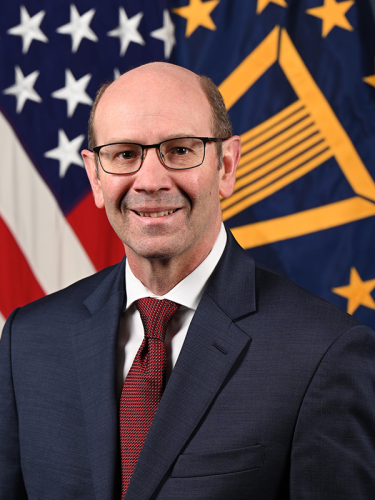 Dr. Todd SriverDirector of Nuclear Command, Control, and Communications (NC3)Office of the Under Secretary of Defense for Acquisition and Sustainment (OUSD(A&S))Dr. Todd Sriver is the Director of Nuclear Command, Control, and Communications (NC3), within the Office of the Under Secretary of Defense for Acquisition and Sustainment (OUSD(A&S)). In this position, he is responsible for the comprehensive development of NC3 plans, directives, and management standards and recommends resource allocations and direction for the programs, projects, and systems within the NC3 portfolio. Dr. Sriver leads the analysis of the NC3 portfolio to achieve mission and program outcomes (cost, schedule, performance, risk, and security); establishes and maintains the portfolio system of systems risk management plan to identify, mitigate, and track enterprise risks; establishes enterprise security construct to monitor and report on cyber and supply chain risks, issues, and mitigation plans; and develops mission focused future capability plans to inform NC3 modernization investment decisions. Dr. Sriver partners with U.S. Strategic Command to address acquisition, resource, and policy challenges to inform operational risk assessment and ensure the modernization of a secure, effective, and resilient NC3 system for the nation's nuclear deterrent. Dr. Sriver was commissioned as a second lieutenant in the U.S. Air Force and served in uniform for 27 years, retiring as a Colonel. His last seven years focused on NC3, culminating as Chief of the NC3 Division, Deputy Chief of Staff for Strategic Deterrence and Nuclear Integration, Headquarters United States Air Force, where he was responsible for NC3 plans and policies and integrating NC3 governance, sustainment, modernization, and recapitalization efforts to ensure Air Force NC3 capabilities. Before that, he served on the Joint Staff in the Deputy Directorate for Nuclear, Homeland Defense, and Current Operations, where he served as Deputy Chief for the National Military Command System Operations Division and led two NC3 studies. During his Air Force career, Dr. Sriver commanded a Manpower Requirements Squadron, and served in various roles at the Squadron, Center, Major Command, Air Staff, and Joint Staff levels. Prior to joining the Office of the Secretary of Defense as a member of the Senior Executive Service, Dr. Sriver worked for the MITRE Corporation as a NC3 Principal Systems Engineer. While at MITRE, his efforts focused on next generation NC3, integration of NC3 with Joint All-Domain Command and Control (JADC2), and support to the Joint Staff, USSTRATCOM NC3 Enterprise Center, and military services with NC3 missions. Dr. Sriver hails from South Bend, Indiana and attended Purdue University, earning a B.S. in Aeronautical and Astronautical Engineering. He also holds a M.S. and Ph.D. in Operations Research from the Air Force Institute of Technology, as well as a M.S. in National Resource Strategy from the Eisenhower School for National Security and Resource Strategy, National Defense University. He has published one journal article, two peer reviewed conference papers, and co-authored a book chapter in the 2007 edition of Methods for Conducting Military Operational Analysis.
Dr. Todd SriverDirector of Nuclear Command, Control, and Communications (NC3)Office of the Under Secretary of Defense for Acquisition and Sustainment (OUSD(A&S))Dr. Todd Sriver is the Director of Nuclear Command, Control, and Communications (NC3), within the Office of the Under Secretary of Defense for Acquisition and Sustainment (OUSD(A&S)). In this position, he is responsible for the comprehensive development of NC3 plans, directives, and management standards and recommends resource allocations and direction for the programs, projects, and systems within the NC3 portfolio. Dr. Sriver leads the analysis of the NC3 portfolio to achieve mission and program outcomes (cost, schedule, performance, risk, and security); establishes and maintains the portfolio system of systems risk management plan to identify, mitigate, and track enterprise risks; establishes enterprise security construct to monitor and report on cyber and supply chain risks, issues, and mitigation plans; and develops mission focused future capability plans to inform NC3 modernization investment decisions. Dr. Sriver partners with U.S. Strategic Command to address acquisition, resource, and policy challenges to inform operational risk assessment and ensure the modernization of a secure, effective, and resilient NC3 system for the nation's nuclear deterrent. Dr. Sriver was commissioned as a second lieutenant in the U.S. Air Force and served in uniform for 27 years, retiring as a Colonel. His last seven years focused on NC3, culminating as Chief of the NC3 Division, Deputy Chief of Staff for Strategic Deterrence and Nuclear Integration, Headquarters United States Air Force, where he was responsible for NC3 plans and policies and integrating NC3 governance, sustainment, modernization, and recapitalization efforts to ensure Air Force NC3 capabilities. Before that, he served on the Joint Staff in the Deputy Directorate for Nuclear, Homeland Defense, and Current Operations, where he served as Deputy Chief for the National Military Command System Operations Division and led two NC3 studies. During his Air Force career, Dr. Sriver commanded a Manpower Requirements Squadron, and served in various roles at the Squadron, Center, Major Command, Air Staff, and Joint Staff levels. Prior to joining the Office of the Secretary of Defense as a member of the Senior Executive Service, Dr. Sriver worked for the MITRE Corporation as a NC3 Principal Systems Engineer. While at MITRE, his efforts focused on next generation NC3, integration of NC3 with Joint All-Domain Command and Control (JADC2), and support to the Joint Staff, USSTRATCOM NC3 Enterprise Center, and military services with NC3 missions. Dr. Sriver hails from South Bend, Indiana and attended Purdue University, earning a B.S. in Aeronautical and Astronautical Engineering. He also holds a M.S. and Ph.D. in Operations Research from the Air Force Institute of Technology, as well as a M.S. in National Resource Strategy from the Eisenhower School for National Security and Resource Strategy, National Defense University. He has published one journal article, two peer reviewed conference papers, and co-authored a book chapter in the 2007 edition of Methods for Conducting Military Operational Analysis.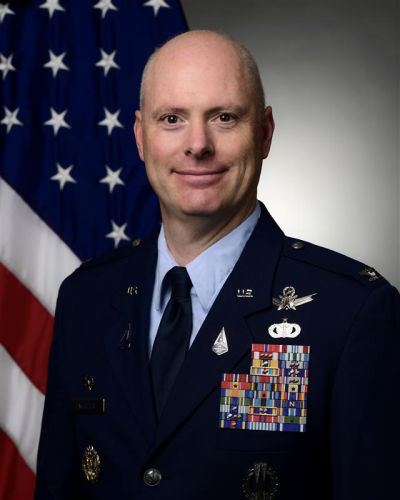 Colonel Jeffrey WeislerCommander of Space Delta 8U.S. Space ForceColonel Jeff Weisler is the Commander of Space Delta 8. He is responsible for the Department of Defense (DoD) Military Satellite Communications System (MILSATCOM) and is the focal point for U.S. protected and assured SATCOM. As Commander his team executes command and control of the nation's MILSATCOM constellation, develops and trains space warfighters, and delivers joint force capabilities through 24/7 crew operations. Additionally, Delta 8 generates, presents, and sustains a $55B+ SATCOM portfolio with units and Guardians stationed around the world supporting eleven combatant commands and numerous Allies. He previously served as the Electromagnetic Warfare Mission Area Team Chief, Commander's Action Group (CAG) Director for SpOC, and is a graduate of Joint Warfighter Strategy course at the Air War College, Maxwell AFB. He is the former Commander of the 21st Operations Support Squadron located at then Peterson AFB. He led over 180 plus U.S. and Canadian Air Force military, DoD civilian and contractor personnel responsible for supporting 21 operational units and nearly 2,000 space operators distributed across nine countries. Colonel Weisler was commissioned in 2001 as a distinguished graduate of the United States Air Force Officer Training School following a successful enlisted career culminating as the personal security officer to the Air Force Vice Chief of Staff. Career highlights include deployment commander for the first operational space electromagnetic warfare unit in Northern Syria. Additionally, he served as the Advanced Program Chief in Seoul, Korea, advising the United States Forces Korea (USFK) Commander on special technical operations in support of Pacific Command (PACOM)/USFK priorities. He has served in a variety of air and space operations and staff assignments, including tours in the Pentagon on the Chief of Staff of the Air Force (CSAF) Briefing Team and as a Military Assistant to the DoD Executive Agent for Space Director. He also was the executive officer to the wing commander of the largest space wing in the Air Force. Additionally, Col Weisler has served as an Intercontinental Ballistic Missile (ICBM) Squadron Assistant Director of Operations, Squadron Flight Commander, Combat Crew Commander, and ICBM instructor. He has also completed multiple deployments to include those to Syria, Korea, Iraq, Afghanistan, Saudi Arabia, and Cuba. EDUCATION 2001 Bachelor of Arts, Business Administration & Management, National Louis University, Ill. 2003 Aerospace Basic Course, Maxwell Air Force Base, Ala. 2008 Master of Science, Aerospace Science and Technology, Embry Riddle Aeronautical University, Fla. 2008 Squadron Officer School, Maxwell AFB, Ala. 2011 Air Command and Staff College, Maxwell AFB, Ala., by correspondence 2015 Command and General Staff College, Fort Leavenworth, Kan. 2016 Air War College, Maxwell AFB, Ala., by correspondence 2020 Air War College, Joint Warfighter Strategy Seminar, Maxwell AFB, Ala. ASSIGNMENTS 1. August 1993 - November 1998, Enlisted Security Forces Law Enforcement, Fairchild Air Force Base, Wash. 2. November 1998 - October 2001, Personal Security Officer to the Vice Chief of Staff of the Air Force, Pentagon, Washington, D.C. 3. September 2001 - September 2007, Assistant Director of Operations/Flight Commander, 12th Missile Squadron, Malmstrom AFB, Mont. 4. September 2007 - September 2008, Senior Instructor, 4th Space Operations Squadron, 50th Space Wing, Schriever AFB, Colo. 5. September 2008 - October 2009, Operations Integration Flight Commander, 4th Space Operations Squadron, 50th Space Wing, Schriever AFB, Colo. 6. October 2009 - October 2010, Executive Officer, 50th Space Wing, Schriever AFB, Colo. 7. October 2010 - July 2011, Deputy Chief of Staff, 50th Space Wing, Schriever AFB, Colo. 8. July 2011 - July 2012, CSAF Operations Briefer, HQ USAF, Pentagon, Washington D.C. 9. July 2-12 - June 2013, Military Assistant/Executive Officer, Secretary of the Air Force, Space, HQ USAF, Pentagon, Washington D.C. 10. July 2013 - June 2015, Chief, USFK Advanced Programs, US Army Garrison Yongsan, Republic of Korea 11. June 2015 - June 2016, Student, Command and General Staff College, Fort Leavenworth, Kan. 12. June 2016 - February 2017, Operations Officer, 4th Space Squadron, Peterson AFB, Colo. 13. February 20217 - May 2017, Commander, 17th Expeditionary Space Control Squadron, Northern Syria 14. May 2017 - June 2019, Commander, 21st Operations Support Squadron, Peterson AFB, Colo. 15. June 2019 - May 2020, Student Air War College, Joint Warfighter Strategic Studies, Maxwell AFB, Ala. 16. June 2020 - July 2022, CAG Director, Space Operations Command, Peterson SFB, Colo. 17. July 2022 - June 2024, Chief, Electromagnetic Warfare Mission Area Team, SpOC, Peterson SFB, Colo. 18. June 2024 - present, Commander, Space Delta 8, Schriever SFB, Colo. MAJOR AWARDS AND DECORATIONS Bronze Star Medal Defense Meritorious Service Medal Meritorious Service Medal five oak leaf clusters Joint Service Commendation Medal Air Force Commendation Service Medal with five oak leaf clusters Air Force Achievement Medal with two oak leaf clusters Combat Readiness Medal Armed Forces Expeditionary Medal Iraq Campaign Medal Operation Inherent Resolve Campaign Medal Global War on Terrorism Expeditionary Medal Global War on Terrorism Service Medal Korean Defense Service Medal Humanitarian Service Medal Nuclear Deterrence Operations Service Medal OTHER ACHIEVEMENTS 2001 Distinguished Graduate, Air Force Officer Training School 2003 Outstanding Contributor, Aerospace Basic Course 2008 Distinguished Graduate and CSAF Flight, Squadron Officer School 2015 Commandant's List, Command and General Staff College (DG Equivalent) 2002 JWSS Graduate, Air War College EFFECTIVE DATES OF PROMOTION Second Lieutenant December 20, 2001 First Lieutenant December 20, 2003 Captain December 1, 2005 Major December 1, 2011 Lieutenant Colonel November 1, 2016 Colonel May 1, 2022 (Current as of November 2025)
Colonel Jeffrey WeislerCommander of Space Delta 8U.S. Space ForceColonel Jeff Weisler is the Commander of Space Delta 8. He is responsible for the Department of Defense (DoD) Military Satellite Communications System (MILSATCOM) and is the focal point for U.S. protected and assured SATCOM. As Commander his team executes command and control of the nation's MILSATCOM constellation, develops and trains space warfighters, and delivers joint force capabilities through 24/7 crew operations. Additionally, Delta 8 generates, presents, and sustains a $55B+ SATCOM portfolio with units and Guardians stationed around the world supporting eleven combatant commands and numerous Allies. He previously served as the Electromagnetic Warfare Mission Area Team Chief, Commander's Action Group (CAG) Director for SpOC, and is a graduate of Joint Warfighter Strategy course at the Air War College, Maxwell AFB. He is the former Commander of the 21st Operations Support Squadron located at then Peterson AFB. He led over 180 plus U.S. and Canadian Air Force military, DoD civilian and contractor personnel responsible for supporting 21 operational units and nearly 2,000 space operators distributed across nine countries. Colonel Weisler was commissioned in 2001 as a distinguished graduate of the United States Air Force Officer Training School following a successful enlisted career culminating as the personal security officer to the Air Force Vice Chief of Staff. Career highlights include deployment commander for the first operational space electromagnetic warfare unit in Northern Syria. Additionally, he served as the Advanced Program Chief in Seoul, Korea, advising the United States Forces Korea (USFK) Commander on special technical operations in support of Pacific Command (PACOM)/USFK priorities. He has served in a variety of air and space operations and staff assignments, including tours in the Pentagon on the Chief of Staff of the Air Force (CSAF) Briefing Team and as a Military Assistant to the DoD Executive Agent for Space Director. He also was the executive officer to the wing commander of the largest space wing in the Air Force. Additionally, Col Weisler has served as an Intercontinental Ballistic Missile (ICBM) Squadron Assistant Director of Operations, Squadron Flight Commander, Combat Crew Commander, and ICBM instructor. He has also completed multiple deployments to include those to Syria, Korea, Iraq, Afghanistan, Saudi Arabia, and Cuba. EDUCATION 2001 Bachelor of Arts, Business Administration & Management, National Louis University, Ill. 2003 Aerospace Basic Course, Maxwell Air Force Base, Ala. 2008 Master of Science, Aerospace Science and Technology, Embry Riddle Aeronautical University, Fla. 2008 Squadron Officer School, Maxwell AFB, Ala. 2011 Air Command and Staff College, Maxwell AFB, Ala., by correspondence 2015 Command and General Staff College, Fort Leavenworth, Kan. 2016 Air War College, Maxwell AFB, Ala., by correspondence 2020 Air War College, Joint Warfighter Strategy Seminar, Maxwell AFB, Ala. ASSIGNMENTS 1. August 1993 - November 1998, Enlisted Security Forces Law Enforcement, Fairchild Air Force Base, Wash. 2. November 1998 - October 2001, Personal Security Officer to the Vice Chief of Staff of the Air Force, Pentagon, Washington, D.C. 3. September 2001 - September 2007, Assistant Director of Operations/Flight Commander, 12th Missile Squadron, Malmstrom AFB, Mont. 4. September 2007 - September 2008, Senior Instructor, 4th Space Operations Squadron, 50th Space Wing, Schriever AFB, Colo. 5. September 2008 - October 2009, Operations Integration Flight Commander, 4th Space Operations Squadron, 50th Space Wing, Schriever AFB, Colo. 6. October 2009 - October 2010, Executive Officer, 50th Space Wing, Schriever AFB, Colo. 7. October 2010 - July 2011, Deputy Chief of Staff, 50th Space Wing, Schriever AFB, Colo. 8. July 2011 - July 2012, CSAF Operations Briefer, HQ USAF, Pentagon, Washington D.C. 9. July 2-12 - June 2013, Military Assistant/Executive Officer, Secretary of the Air Force, Space, HQ USAF, Pentagon, Washington D.C. 10. July 2013 - June 2015, Chief, USFK Advanced Programs, US Army Garrison Yongsan, Republic of Korea 11. June 2015 - June 2016, Student, Command and General Staff College, Fort Leavenworth, Kan. 12. June 2016 - February 2017, Operations Officer, 4th Space Squadron, Peterson AFB, Colo. 13. February 20217 - May 2017, Commander, 17th Expeditionary Space Control Squadron, Northern Syria 14. May 2017 - June 2019, Commander, 21st Operations Support Squadron, Peterson AFB, Colo. 15. June 2019 - May 2020, Student Air War College, Joint Warfighter Strategic Studies, Maxwell AFB, Ala. 16. June 2020 - July 2022, CAG Director, Space Operations Command, Peterson SFB, Colo. 17. July 2022 - June 2024, Chief, Electromagnetic Warfare Mission Area Team, SpOC, Peterson SFB, Colo. 18. June 2024 - present, Commander, Space Delta 8, Schriever SFB, Colo. MAJOR AWARDS AND DECORATIONS Bronze Star Medal Defense Meritorious Service Medal Meritorious Service Medal five oak leaf clusters Joint Service Commendation Medal Air Force Commendation Service Medal with five oak leaf clusters Air Force Achievement Medal with two oak leaf clusters Combat Readiness Medal Armed Forces Expeditionary Medal Iraq Campaign Medal Operation Inherent Resolve Campaign Medal Global War on Terrorism Expeditionary Medal Global War on Terrorism Service Medal Korean Defense Service Medal Humanitarian Service Medal Nuclear Deterrence Operations Service Medal OTHER ACHIEVEMENTS 2001 Distinguished Graduate, Air Force Officer Training School 2003 Outstanding Contributor, Aerospace Basic Course 2008 Distinguished Graduate and CSAF Flight, Squadron Officer School 2015 Commandant's List, Command and General Staff College (DG Equivalent) 2002 JWSS Graduate, Air War College EFFECTIVE DATES OF PROMOTION Second Lieutenant December 20, 2001 First Lieutenant December 20, 2003 Captain December 1, 2005 Major December 1, 2011 Lieutenant Colonel November 1, 2016 Colonel May 1, 2022 (Current as of November 2025)Building the Foundation: Terrestrial Infrastructure Financing for Space (Finance Forum)
During this talk, we'll learn from experts that have successfully navigated public-private partnerships in aviation infrastructure (airports, air traffic control systems) and discover strategies that could help the space industry leaders build spaceports and ground stations: airport authority executives, infrastructure finance experts, and government built major ground facilities.
 Michael J. DymentManaging PartnerNEXA Capital Partners
Michael J. DymentManaging PartnerNEXA Capital PartnersNavigating the Shift to Software-Defined Space Missions
Getting to orbit should be faster, more predictable, and less costly than it is today. Yet complex procurement cycles, endless non-recurring engineering (NRE), and mismatched components still bog down projects and inflate budgets. There's a better approach: fly first, build second. High-fidelity mission simulation lets you design and test complete spacecraft configurations--bus, payload, power requirements, comms links, and more--before hardware is purchased or built. Engineers can validate subsystem performance, model orbital dynamics, and identify design gaps long before integration, eliminating costly surprises before ever purchasing the first component. This session will also examine the risks of custom-built flight software, which can create complexity and distract teams from mission objectives, versus deploying modular, proven off-the-shelf systems that work seamlessly with a wide range of hardware and mission designs. Attendees will learn practical strategies to design faster, buy smarter, and reach orbit with confidence--accelerating timelines and freeing teams to focus on mission outcomes, not integration headaches.
 John TrionfoPresident, Defense SolutionsAntarisJohn is the President of Defense Solutions and the Chief Growth Officer at Antaris. He is responsible for the company's go-to-market strategy and for guiding Antaris's engineering efforts to develop and implement new products and capabilities. He has served as the Principal Investigator on three USSF projects focused on developing TrueTwin simulations to support various missions for the USSF and the SDA. All programs exceeded delivery specifications and were completed ahead of schedule. Prior to joining Antaris, John was the COO of SMALLab Learning, where he oversaw the implementation of 3D interactive learning spaces in K-12 schools worldwide. He also served as the VP of Market Development at TARGUSinfo (acquired by Neustar in 2011), leading efforts to launch new data and analytics products for the telecommunications, e-commerce, and U.S. government sectors. John previously held leadership roles at Emultek, where he managed projects delivering simulation and training systems for platforms including the Apache AH-64D attack helicopter, Patriot Missile System, B-1B, and the Boeing 737. Additionally, he held leadership positions at Cygnus Solutions and Red Hat, where he helped drive the creation of the open-source software ecosystem.
John TrionfoPresident, Defense SolutionsAntarisJohn is the President of Defense Solutions and the Chief Growth Officer at Antaris. He is responsible for the company's go-to-market strategy and for guiding Antaris's engineering efforts to develop and implement new products and capabilities. He has served as the Principal Investigator on three USSF projects focused on developing TrueTwin simulations to support various missions for the USSF and the SDA. All programs exceeded delivery specifications and were completed ahead of schedule. Prior to joining Antaris, John was the COO of SMALLab Learning, where he oversaw the implementation of 3D interactive learning spaces in K-12 schools worldwide. He also served as the VP of Market Development at TARGUSinfo (acquired by Neustar in 2011), leading efforts to launch new data and analytics products for the telecommunications, e-commerce, and U.S. government sectors. John previously held leadership roles at Emultek, where he managed projects delivering simulation and training systems for platforms including the Apache AH-64D attack helicopter, Patriot Missile System, B-1B, and the Boeing 737. Additionally, he held leadership positions at Cygnus Solutions and Red Hat, where he helped drive the creation of the open-source software ecosystem. -
Rethinking the Device in 6G: Architecture, Constraints, the Case for Disruption
Proposed 6G changes place unprecedented demands on the handset device: high-gain, multi-band RF performance, support for non-terrestrial networks (NTN), robust waveform adaptability and edge processing. Yet mainstream handheld devices, such as smartphones, are increasingly compromised in exactly these areas. Modern handsets suffer from degraded RF performance due to antenna miniaturization, dense integration, and coexistence trade-offs. The result is a widening gap between what 6G networks will require and what conventional device architectures can deliver (designing all handsets for the 1-5% of scenarios that require NTN-grade RF is technically disproportionate and architecturally inefficient). This talk argues for a shift toward a modular, role-based device ecosystem. It examines the technical challenges of integrating NTN, 6G compliant radios, Doppler-tolerant PHYs, and intelligent scheduling into consumer-constrained platforms. Emerging alternatives, such as vehicular relays, wearable RF nodes, and disaggregated PHY runtimes, offer more viable paths to meeting 6G's performance targets. These changes signal a deeper architectural disruption. The tightly integrated chipset/handset pipeline is not well suited to the flexibility and diversity 6G demands. Instead, we anticipate a more fragmented device landscape, composed of interoperable roles, optimized for context and capability. Without this transition, 6G risks reinforcing the limitations of legacy assumptions, rather than delivering on its promise of true ubiquity.
 Paul TindallConsultantTTP plcPaul Tindall is a Senior Consultant in TTP's Deep Tech business unit in the Satellite and Space group, specialising in Non-Terrestrial Networks. Prior to this Paul was the R&D Director at Sepura, developing critical communications products for use in Public Safety. He was R&D director at Viavi, developing 5G Network assurance products. At U-Blox/Cognovo he was the Software Architect, creating a novel Software Defined Modem (SDM) Platform for the latest generation of Wireless User Equipment using Model Driven Development techniques. He was the Technical Director and Uber-Architect at TTPCom SW Business Unit where he developed wireless technology for 13 years. Paul also worked in the Defence industry on a variety of MOD Defence projects. Paul has a 1st class honours degree from the Royal Military College of Science and is a Fellow of the British Computer Society (BCS).
Paul TindallConsultantTTP plcPaul Tindall is a Senior Consultant in TTP's Deep Tech business unit in the Satellite and Space group, specialising in Non-Terrestrial Networks. Prior to this Paul was the R&D Director at Sepura, developing critical communications products for use in Public Safety. He was R&D director at Viavi, developing 5G Network assurance products. At U-Blox/Cognovo he was the Software Architect, creating a novel Software Defined Modem (SDM) Platform for the latest generation of Wireless User Equipment using Model Driven Development techniques. He was the Technical Director and Uber-Architect at TTPCom SW Business Unit where he developed wireless technology for 13 years. Paul also worked in the Defence industry on a variety of MOD Defence projects. Paul has a 1st class honours degree from the Royal Military College of Science and is a Fellow of the British Computer Society (BCS). -
Illuminating the U.S. Space Force
The U.S. Space Force was established in 2019 to bolster the nation's focus on space as a warfighting domain. Yet the service still relies on the Air Force for civilian leadership, and consists of various field commands and other commands. What does it mean for space to be a warfighting domain? And what are the roles and responsibilities of the service's various commands in carrying out its mission?
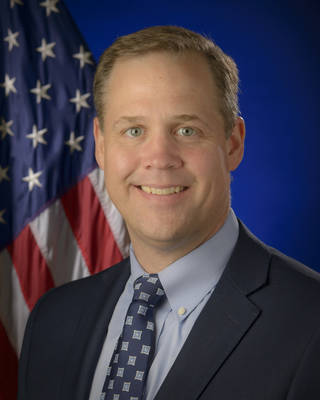 Moderator
Jim BridenstineFormer NASA Administrator and Managing Partner of The Artemis GroupThe Artemis GroupJim Bridenstine is a Senior Advisor at Acorn Growth Companies, an Oklahoma City based private equity company that invests exclusively in aerospace, defense, and intelligence. Before joining Acorn, Jim served as the 13th Administrator of NASA, where he was responsible for managing NASA's 70,000-person workforce and $23 billion annual budget. Under his leadership, NASA reestablished an American human spaceflight program, which was lost after the retirement of the Space Shuttles in 2011. He also created NASA's Artemis program to establish the first permanent presence on the Moon with commercial and international partners and enable a path to Mars. Before being appointed as NASA Administrator, Jim served in the United States House of Representatives from Oklahoma's First Congressional District from 2013 to 2018. He was a member of the House Armed Services Committee and the House Science, Space, and Technology Committee where he chaired the Subcommittee on the Environment. Prior to Congress, Jim served as a pilot in the United States Navy acquiring 1900 flight hours and 333 landings on an aircraft carrier. He flew combat missions in Afghanistan (2002) and Iraq (2003) off the USS Abraham Lincoln, where he earned an Air Medal and Navy Commendation Medal with Combat "V". Originally an E-2C Hawkeye pilot, he transitioned to the F-18 Hornet and flew as an aggressor (Red Air) at the Naval Strike and Air Warfare Center, the parent command to TOPGUN. Jim serves on the Board of Directors for Viasat, Inc., the Board of Trustees of the Aerospace Corporation, and he Chairs the Board of Advisors for Voyager Space. Jim earned a triple major from Rice University in Economics, Business, and Psychology and an MBA from Cornell University. He lives in Tulsa with his wife Michelle and three children: Walker (15), Sarah (13), and Grant (9).
Moderator
Jim BridenstineFormer NASA Administrator and Managing Partner of The Artemis GroupThe Artemis GroupJim Bridenstine is a Senior Advisor at Acorn Growth Companies, an Oklahoma City based private equity company that invests exclusively in aerospace, defense, and intelligence. Before joining Acorn, Jim served as the 13th Administrator of NASA, where he was responsible for managing NASA's 70,000-person workforce and $23 billion annual budget. Under his leadership, NASA reestablished an American human spaceflight program, which was lost after the retirement of the Space Shuttles in 2011. He also created NASA's Artemis program to establish the first permanent presence on the Moon with commercial and international partners and enable a path to Mars. Before being appointed as NASA Administrator, Jim served in the United States House of Representatives from Oklahoma's First Congressional District from 2013 to 2018. He was a member of the House Armed Services Committee and the House Science, Space, and Technology Committee where he chaired the Subcommittee on the Environment. Prior to Congress, Jim served as a pilot in the United States Navy acquiring 1900 flight hours and 333 landings on an aircraft carrier. He flew combat missions in Afghanistan (2002) and Iraq (2003) off the USS Abraham Lincoln, where he earned an Air Medal and Navy Commendation Medal with Combat "V". Originally an E-2C Hawkeye pilot, he transitioned to the F-18 Hornet and flew as an aggressor (Red Air) at the Naval Strike and Air Warfare Center, the parent command to TOPGUN. Jim serves on the Board of Directors for Viasat, Inc., the Board of Trustees of the Aerospace Corporation, and he Chairs the Board of Advisors for Voyager Space. Jim earned a triple major from Rice University in Economics, Business, and Psychology and an MBA from Cornell University. He lives in Tulsa with his wife Michelle and three children: Walker (15), Sarah (13), and Grant (9).Money Mechanics: Tax, Credit, and Capital Strategies (Finance Forum)
5G-GOVSATCOM: Seamless Handover Between TN and NTN Within the EU-GOVSATCOM Program
5G non-terrestrial networks (5G-NTN) satellite networks will soon be able to handle all types of applications and provide service to a massive number of users. In this complex and dynamic network ecosystem, and end-to-end adaptation of 5G-NTN towards the EU-GOVSATCOM services, requirements and use cases is of capital importance to efficiently deploy European governmental satellite services. To enable such a vision, 5G-GOVSATCOM targets the development and evaluation in a natural user environment of different key enabling technologies that aim to provide full integration of 5G-NTN in the EU-GOVSATCOM framework. In the radio technologies domain, 5G-GOVSATCOM targets the development of necessary adaptions and enhancements of radio access procedures to attend to geostationary mobile terminals in the exclusive governmental X-band. Furthermore, the integration of 5G-NTN user equipment with an antenna operationally focused on on-the-move and on-the-pause scenarios are planned. In parallel, in the inter-networking segments, 5G-GOVSATCOM aims to provide a seamless handover between terrestrial networks and NTN via a smart gateway while enhancing core-network functionalities. Finally, all project developments are planned to be first validated in a controlled lab with satellite connectivity and, subsequently, experimentally tested in close collaboration with final users. These latter tests will constitute the first 5G-NTN trials with final users devoted to i) ubiquitous telemedicine in maritime areas and ii) crisis management connectivity bubble.
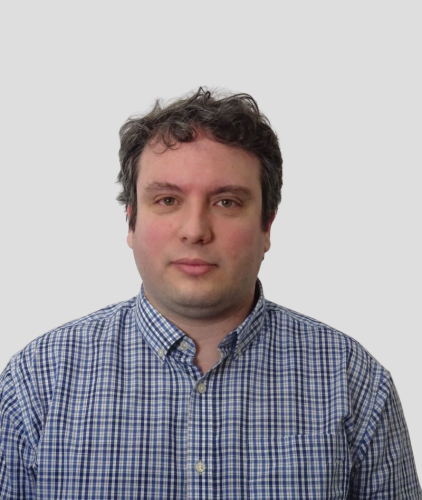 Dr. Miguel Angel VazquezHead of Space and Resilient Communications and SystemsCentre Tecnologic de Telecomunicacions de CatalunyaDr. Miguel Ángel Vázquez leads the Space and Resilient Communications and Systems (SRCom) unit at CTTC, focusing on xG NTN, tactical communications and optical/quantum communications. He has spearheaded major European projects such as 5G-GOVSATCOM and 5G-HUB, working closely with leading industry partners. With a track record of 50+ publications, he drives innovation at the interface of space and terrestrial networks, positioning CTTC as a key technology provider for the NewSpace and defense markets.
Dr. Miguel Angel VazquezHead of Space and Resilient Communications and SystemsCentre Tecnologic de Telecomunicacions de CatalunyaDr. Miguel Ángel Vázquez leads the Space and Resilient Communications and Systems (SRCom) unit at CTTC, focusing on xG NTN, tactical communications and optical/quantum communications. He has spearheaded major European projects such as 5G-GOVSATCOM and 5G-HUB, working closely with leading industry partners. With a track record of 50+ publications, he drives innovation at the interface of space and terrestrial networks, positioning CTTC as a key technology provider for the NewSpace and defense markets. -
Satellite: Enabling Enterprise & The AI-Powered Network of the Future
There was a time when copper ISDN lines were the reliable backup, and broadband was the last resort. LTE was once dismissed as well, for either being too expensive or for not providing adequate performance. Now, we're seeing history repeat--this time with satellite connectivity. But the narrative is changing fast. Satellite is emerging not just as a viable alternative, but as a critical foundation for next-generation connectivity. As players like Starlink, Amazon, and others compete in a new-era space race to expand satellite coverage, enterprise demands are also evolving. The rise of AI-driven applications is creating unprecedented needs for high-availability bandwidth--anytime, anywhere. Satellite is uniquely positioned to support these demands, reaching areas where traditional connectivity solutions fall short. Further, satellite is rapidly closing the gap in solutions for both performance and reliability. Not only does it work well for tough-to-reach places, but similar to 5G, it's evolving into a suitable enterprise connectivity option. This session will explore real-world use cases from organizations such as DB Schenker, Pernod Ricard, and CF Industries--companies that began with satellite as a backup solution but are now leveraging it as a primary component of their global network architecture. Join us as we unpack the strategic role of satellite in building future-ready, AI-optimized networks. Our panel will dive into the "how" behind deploying secure, scalable satellite-first architectures that support distributed users and AI-powered operations across the globe.
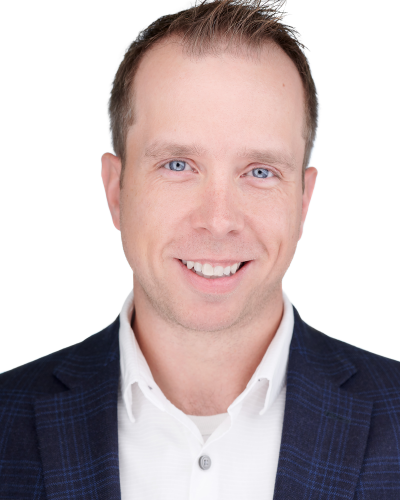 Jason PennellSr. Solutions Architect, Global Solutions & ImplementationAdvantage Communications Group (Advantage)Jason is a technology advocate with a passion for how innovation reshapes the way we work, communicate, and grow. At Advantage, he collaborates with business leaders and IT professionals worldwide to design and implement technology strategies that drive meaningful business outcomes. With a focus on aligning solutions with organizational goals, Jason helps clients navigate complexity and unlock the full potential of their technology investments.
Jason PennellSr. Solutions Architect, Global Solutions & ImplementationAdvantage Communications Group (Advantage)Jason is a technology advocate with a passion for how innovation reshapes the way we work, communicate, and grow. At Advantage, he collaborates with business leaders and IT professionals worldwide to design and implement technology strategies that drive meaningful business outcomes. With a focus on aligning solutions with organizational goals, Jason helps clients navigate complexity and unlock the full potential of their technology investments. Steve RomeCRO, Co-FounderAdvantage Communications Group (Advantage)A passionate leader gifted at architecting, sourcing, and managing communication technology solutions. Armed with an MBA in Finance, Marketing, and International Business from one of the most prestigious schools in the US, Steve co-founded Advantage Communications Group 20 years ago to help businesses realize success through optimizing their telecom and technology services lifecycle. Steve leads the Strategic Sales team at Advantage and has shaped how over one thousand organizations worldwide buy and manage their communications technology. Steve serves on several industry leading carrier advisory boards including ATT, Comcast, Verizon, and Zayo.
Steve RomeCRO, Co-FounderAdvantage Communications Group (Advantage)A passionate leader gifted at architecting, sourcing, and managing communication technology solutions. Armed with an MBA in Finance, Marketing, and International Business from one of the most prestigious schools in the US, Steve co-founded Advantage Communications Group 20 years ago to help businesses realize success through optimizing their telecom and technology services lifecycle. Steve leads the Strategic Sales team at Advantage and has shaped how over one thousand organizations worldwide buy and manage their communications technology. Steve serves on several industry leading carrier advisory boards including ATT, Comcast, Verizon, and Zayo. -
Maintaining Mission-Critical Communications in the Harshest Locations
Government agencies and militaries around the world rely on mission-critical remote communications solutions to stay connected at home and abroad in the most challenging environments and locations around the globe. Portable and transportable terminals are essential for satellite communications in various scenarios, especially when traditional network infrastructure is unavailable or unreliable. This session explores the critical role of portable and transportable terminals in meeting the unique and dynamic needs of modern military organizations. Discussion topics include: advancements in portable and transportable terminal technologies; ensuring high-bandwidth, low-latency connectivity in challenging conditions; deployability and scalability of terminals for diverse operational needs; and tailoring communication solutions for tactical and strategic operations. This session will also include case studies, sharing real-world applications that illustrate how portable and transportable terminals are being implemented to enhance the capabilities of defense and military forces.
 Nicole RobinsonPresident, Gilat DataPathGilat DataPathNicole Robinson serves as President of Gilat DataPath. She brings extensive leadership experience in satellite communications, government solutions, and business growth. Previously, Nicole served as Chief Growth Officer at Comtech Telecommunications Corp. and as President of Ursa Space Systems. She also held the position of Senior Vice President, Global Government, at SES Satellites, overseeing strategic government initiatives. Earlier in her career, Nicole worked at General Dynamics as the Strategic Communications Lead for the U.S. Standing Joint Force Headquarters (SJFHQ) and managed communications for the National Museum of the U.S. Army at SUPRA Corporation. Nicole holds a Bachelor of Science in Communications from Radford University, an MBA in Business Administration and Management from Liberty University, and a Master of Computer Applications. She also completed the Senior Executives in National and International Security program at Harvard Kennedy School.
Nicole RobinsonPresident, Gilat DataPathGilat DataPathNicole Robinson serves as President of Gilat DataPath. She brings extensive leadership experience in satellite communications, government solutions, and business growth. Previously, Nicole served as Chief Growth Officer at Comtech Telecommunications Corp. and as President of Ursa Space Systems. She also held the position of Senior Vice President, Global Government, at SES Satellites, overseeing strategic government initiatives. Earlier in her career, Nicole worked at General Dynamics as the Strategic Communications Lead for the U.S. Standing Joint Force Headquarters (SJFHQ) and managed communications for the National Museum of the U.S. Army at SUPRA Corporation. Nicole holds a Bachelor of Science in Communications from Radford University, an MBA in Business Administration and Management from Liberty University, and a Master of Computer Applications. She also completed the Senior Executives in National and International Security program at Harvard Kennedy School.The Future of the Space Development Agency
What does the future hold for the Space Development Agency, as the latter interfaces with Space Systems Command and the Missile Defense Agency to move cutting edge communications and sensor systems into the field? What are the prospects for proliferated low Earth orbit systems, e.g. Tranche 2 of the Proliferated Warfighter Space Architecture?
Speaking Wall Street: Investor Relations for the Space Economy (Finance Forum)
This session will focus on bridging the communication gap between space companies and financial markets. Learn how to translate technical achievements into business metrics, managing expectations around long development cycles, and communicating regulatory risks from a range of industry thought leaders - including institutional investors, new space companies, and IR professionals from the dot com days.
Targeted, Jammed, Spoofed... Now What?
From military vessels operating in remote seas to organizations providing financial services, many industries rely heavily on GPS to synchronize their timing and location data. However, the rise in GPS/GNSS threats such as jamming, spoofing, and interference, can lead to devastating impacts to infrastructure stability, operations, and asset safety. This presentation will share how GPS/GNSS interruption isn't limited to the military and will explain the potential consequences of vulnerabilities on commercial organizations as well. It will stress the importance of integrating a robust secondary assured positioning, navigation, and timing (APNT) strategy to ensure operational security and business continuity. It will also explain what steps need to be taken to enhance resilience for the future.
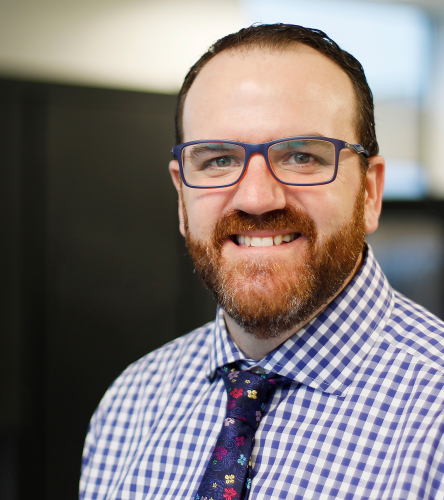 Robert GilletteDirector of Assured Positioning Navigation and TimingNAL ResearchRobert Gillette is the Director of Assured Positioning Navigation and Timing (APNT) solutions at NAL Research, leveraging more than two decades of expertise in program management and business development for the U.S. Department of Defense and foreign partners. Robert's approach is grounded in implementing solutions that impact customer mission success in contested environments. In his role, he spearheads NAL's APNT business area, drawing upon his extensive experience in satellite communications, signal intelligence/electronic intelligence, software defined radio development, and APNT. A graduate of the US Navy's Nuclear Power School, he pursued engineering studies at Auburn University and earned an MBA from the University of Utah.
Robert GilletteDirector of Assured Positioning Navigation and TimingNAL ResearchRobert Gillette is the Director of Assured Positioning Navigation and Timing (APNT) solutions at NAL Research, leveraging more than two decades of expertise in program management and business development for the U.S. Department of Defense and foreign partners. Robert's approach is grounded in implementing solutions that impact customer mission success in contested environments. In his role, he spearheads NAL's APNT business area, drawing upon his extensive experience in satellite communications, signal intelligence/electronic intelligence, software defined radio development, and APNT. A graduate of the US Navy's Nuclear Power School, he pursued engineering studies at Auburn University and earned an MBA from the University of Utah. -
Laser Precise Navigation: Integrating Optical Communications with PNT Systems
The presentation aims to provide a comprehensive overview of the principles, benefits, challenges, and future potential of Free-Space Optical Communications (FSO) technology in enhancing the accuracy, security, and reliability of Position, Navigation, and Timing (PNT) systems. Participants will gain valuable insights into the technology's current applications and future trends, supported by case scenarios and innovative solutions. In theory, the integration of FSO could revolutionize the accuracy, reliability and security of PNT systems. Government and private partnerships are starting to study and research this concept and believe that FSO technology can enhance accuracy of PNT without the additional cost required for building up the ground infrastructure needed to support the tens of thousands of satellites that are set to be launched in the coming years. In addition, the use of FSO would be more affordable and more reliable because ranging and synchronization of the laser system will be used from satellite to satellite. This workshop will introduce participants to the fundamental principles of FSO and its advantages over the current terrestrial infrastructure. Objectives: • To explore the critical role of PNT systems in various sectors and the limitations of current technologies. • Limitations of current PNT technologies: signal vulnerabilities and coverage gaps. • To demonstrate how FSO can complement and enhance PNT systems. • To present real-world use cases of FSO in PNT systems. This workshop focuses on innovative technologies and their applications in navigation systems.
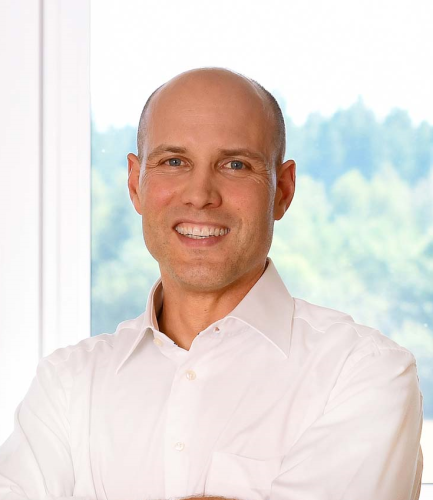 Joachim HorwathChief Technology OfficerMynaricBeing the co-founder of Mynaric and holding the CTO position since 2009, Joachim Horwath combines more than 20 years of experience in laser communications and has led the company's technical direction since its inception. In addition to necessary technical control, Joachim and his team perform important pioneering work on future technologies to ensure Mynaric's leadership in industrializing laser communications in the years to come.
Joachim HorwathChief Technology OfficerMynaricBeing the co-founder of Mynaric and holding the CTO position since 2009, Joachim Horwath combines more than 20 years of experience in laser communications and has led the company's technical direction since its inception. In addition to necessary technical control, Joachim and his team perform important pioneering work on future technologies to ensure Mynaric's leadership in industrializing laser communications in the years to come. -
Transitioning from Startup to Scale-Up
Learn how technology investments can drive the transition from startup operations to scale-up operations. Panelists from the automotive industry and other heavy equipment sectors discuss how they invested in robotics and manufacturing to transform their industries. The discussion will include investment financing, how to gauge transition, and what these industries will bring to space.
 Danil SubkhankulovManaging DirectorCerberus Capital Management
Danil SubkhankulovManaging DirectorCerberus Capital ManagementDeploying AI/ML for Tactical Edge RF Awareness
This session focuses on the operational deployment of compact AI/ML models into a cognitive system to support RF awareness in tactical and space environments. Eric Mason will provide an overview of the cognitive system that drives HawkEye 360's (HE360) mission-critical analytics, ensuring EMSO effectiveness in a congested RF environment. The focus will be on training, deployment, and monitoring of edge ML/AI processing in a low SWaP system with limited ground connectivity. He will discuss the impact of the mission in a changing electromagnetic environment and how limitations on hardware impact both system design choices. Potential Key Talking Points: • Cognitive RF systems to optimize Tasking, Collection, Processing, Exploitation, Dissemination (TCPED) processes • Designing ML models for RF characterization with limited processing and memory for edge applications • Managing dynamic signal environments via continual model tuning • Role of lightweight inference pipelines in tactical RF missions (e.g., maritime domain awareness, border monitoring) • How space-based RF data combined with AI accelerates decision timelines in EMSO missions
 Eric Mason, Ph.D.Director, Data ScienceHawkEye 360Dr. Eric Mason is an expert in Radio Frequency Machine Learning with over eight years of experience advancing RF sensing technologies across government laboratories, academia, and commercial space. As Director of Data Science at HawkEye 360, he leads the development of AI-driven algorithms that power next-generation RF signals intelligence from space--enabling greater situational awareness in congested and contested electromagnetic environments. Prior to joining HawkEye 360, Dr. Mason served as a Research Scientist at the U.S. Naval Research Laboratory, where he led multiple funded programs focused on RF machine learning, geolocation, and radar signal processing. He has authored over 20 peer-reviewed papers and book chapters and has delivered more than 25 technical presentations at conferences, program reviews, and symposia. Dr. Mason holds a Ph.D. in Electrical Engineering from Rensselaer Polytechnic Institute and a B.S. in Electrical Engineering from Manhattan College. His expertise spans applied mathematics, signal processing, optimization, and AI/ML, with practical experience deploying models in Python using TensorFlow, PyTorch, and scikit-learn.
Eric Mason, Ph.D.Director, Data ScienceHawkEye 360Dr. Eric Mason is an expert in Radio Frequency Machine Learning with over eight years of experience advancing RF sensing technologies across government laboratories, academia, and commercial space. As Director of Data Science at HawkEye 360, he leads the development of AI-driven algorithms that power next-generation RF signals intelligence from space--enabling greater situational awareness in congested and contested electromagnetic environments. Prior to joining HawkEye 360, Dr. Mason served as a Research Scientist at the U.S. Naval Research Laboratory, where he led multiple funded programs focused on RF machine learning, geolocation, and radar signal processing. He has authored over 20 peer-reviewed papers and book chapters and has delivered more than 25 technical presentations at conferences, program reviews, and symposia. Dr. Mason holds a Ph.D. in Electrical Engineering from Rensselaer Polytechnic Institute and a B.S. in Electrical Engineering from Manhattan College. His expertise spans applied mathematics, signal processing, optimization, and AI/ML, with practical experience deploying models in Python using TensorFlow, PyTorch, and scikit-learn.VIP Session: Accelerating Commercial Integration in National Security Space Architectures
The Pentagon has established organizational, financial, and contractual pathways that will accelerate commercial integration into military operations throughout the spectrum of conflict. Multiple elements of the Intelligence Community, US Space Command, and the US Space Force have created structures and resources for applying commercial solutions to national security problems. This structural foundation will enable a future where national security space mission sets will continue to grow beyond SATCOM, to include space domain awareness, multi phenomenology sensing, and satellite control. This panel will evaluate this complex challenge and address how it can be overcome. Speakers will debate the continued challenges around policy, resources, and technical integration. Finally, the panel will define "commercial" and "integration" in a manner that will deliver a pathway toward successful commercial integration in national security space architectures.
-
Integrating on Hard Problems to Secure America's Space Dominance
Opportunities and threats in space are evolving rapidly. Building resilient and responsive architectures, while working at the frontier of technology, is necessary for each sector of government and commercial space to keep up. Outpacing adversaries and their capabilities is a national imperative. Solving emergent hard problems demands deep technical expertise, fresh innovation from established and emerging commercial space companies, and seamless collaboration across the nation's space enterprise. In this presentation by Aerospace's Dr. Debra Emmons, attendees will learn about a new, successful framework for integration and collaboration across industries and government agencies. Elements of this framework include: defining and anticipating threats to inform effective planning through tools like wargaming and data analysis; Navigating design trades and venture proposals across a vast solution space to identify the art of the possible; Leveraging AI/ML and multimodel sensing and data fusion; Managing missions and data at the speed of conflict; and more.
 Dr. Debra EmmonsVice President and CTOThe Aerospace CorporationDr. Debra L. Emmons is vice president and chief technology officer (CTO) at The Aerospace Corporation. In this role, she is responsible for providing vital leadership for determining and executing the company's technology strategy and investments. Emmons leads four offices: eLab, responsible for setting the technical investment strategy and priorities; xLab, responsible for developing, building, and operating prototypes; Commercial Space Futures (CSF) office, responsible for driving the harnessing of commercial solutions for government missions to advance U.S. space; and the new Solution Accelerator, responsible for delivering independent and innovative solutions with speed and national impact. She also manages the company's $60M+ internal research and development program and the Aerospace Technical Fellows program, with the company's top engineers and scientists. Emmons most recently served as chairperson of the CTO Roundtable with federally funded research and development centers (FFRDCs) and university affiliated research centers (UARCs) to develop and maintain relationships with government and other defense-related research laboratories to identify technology priorities, future requirements, and emerging opportunities. Previously, Emmons was vice president of special studies at Aerospace, responsible for promoting the use of corporate and government resources through horizontal and cross-program integrated planning and engineering. Prior to that, she served as general manager of Aerospace's Communication Technologies and Engineering Division, where she oversaw the communications studies, analysis, and testing products of the division to serve the full range of corporate national security space, civil, and commercial customers, and managed a geographically distributed team of engineers and laboratories. Earlier in her career, Emmons was integral in the establishment and growth of the NASA and civil space customer lines of business and held various leadership roles. Emmons held the role of principal director, NASA and Civil Programs, serving all science and technology customers. Before joining Aerospace in 2003 as a project engineer, Emmons worked at Hughes Space and Communications Company as a system engineering project manager on commercial telecommunications satellite development. An experienced aerospace leader with technical, management, and industry experience in the acquisition and development of advanced technology space systems, Emmons has more than 25 years of experience in systems engineering, technical and risk analysis, program management, and communications systems. She was a principal contributor on several key high�'level studies and assessments that have informed strategic decisionmaking within the government. Education Emmons earned bachelor's and master's degrees in electrical engineering from Cornell University with a concentration in signal processing and communications theory. She was awarded an MBA from Imperial College Management School, London, UK, with a concentration in entrepreneurship and finance. Emmons earned a Ph.D. in systems engineering from the George Washington University. Awards and Honors Emmons was awarded two Aerospace President's Awards and named Aerospace Woman of the Year. She has received accolades for her contributions to the NASA Hubble Space Telescope Analysis of Alternatives and she was honored for providing technical studies critical to the Augustine Commission's recommendations for future U.S. human spaceflight. Emmons was named a Class of 2024 Associate Fellow by the American Institute of Aeronautics and Astronautics. Affiliations Past and present affiliations include the California State University Autonomy Research Center for STEAHM External Research Advisory Committee; Advanced Space Communications and Navigation Systems Session, International Astronautical Federation; and National Space Club and Foundation, Washington, D.C.
Dr. Debra EmmonsVice President and CTOThe Aerospace CorporationDr. Debra L. Emmons is vice president and chief technology officer (CTO) at The Aerospace Corporation. In this role, she is responsible for providing vital leadership for determining and executing the company's technology strategy and investments. Emmons leads four offices: eLab, responsible for setting the technical investment strategy and priorities; xLab, responsible for developing, building, and operating prototypes; Commercial Space Futures (CSF) office, responsible for driving the harnessing of commercial solutions for government missions to advance U.S. space; and the new Solution Accelerator, responsible for delivering independent and innovative solutions with speed and national impact. She also manages the company's $60M+ internal research and development program and the Aerospace Technical Fellows program, with the company's top engineers and scientists. Emmons most recently served as chairperson of the CTO Roundtable with federally funded research and development centers (FFRDCs) and university affiliated research centers (UARCs) to develop and maintain relationships with government and other defense-related research laboratories to identify technology priorities, future requirements, and emerging opportunities. Previously, Emmons was vice president of special studies at Aerospace, responsible for promoting the use of corporate and government resources through horizontal and cross-program integrated planning and engineering. Prior to that, she served as general manager of Aerospace's Communication Technologies and Engineering Division, where she oversaw the communications studies, analysis, and testing products of the division to serve the full range of corporate national security space, civil, and commercial customers, and managed a geographically distributed team of engineers and laboratories. Earlier in her career, Emmons was integral in the establishment and growth of the NASA and civil space customer lines of business and held various leadership roles. Emmons held the role of principal director, NASA and Civil Programs, serving all science and technology customers. Before joining Aerospace in 2003 as a project engineer, Emmons worked at Hughes Space and Communications Company as a system engineering project manager on commercial telecommunications satellite development. An experienced aerospace leader with technical, management, and industry experience in the acquisition and development of advanced technology space systems, Emmons has more than 25 years of experience in systems engineering, technical and risk analysis, program management, and communications systems. She was a principal contributor on several key high�'level studies and assessments that have informed strategic decisionmaking within the government. Education Emmons earned bachelor's and master's degrees in electrical engineering from Cornell University with a concentration in signal processing and communications theory. She was awarded an MBA from Imperial College Management School, London, UK, with a concentration in entrepreneurship and finance. Emmons earned a Ph.D. in systems engineering from the George Washington University. Awards and Honors Emmons was awarded two Aerospace President's Awards and named Aerospace Woman of the Year. She has received accolades for her contributions to the NASA Hubble Space Telescope Analysis of Alternatives and she was honored for providing technical studies critical to the Augustine Commission's recommendations for future U.S. human spaceflight. Emmons was named a Class of 2024 Associate Fellow by the American Institute of Aeronautics and Astronautics. Affiliations Past and present affiliations include the California State University Autonomy Research Center for STEAHM External Research Advisory Committee; Advanced Space Communications and Navigation Systems Session, International Astronautical Federation; and National Space Club and Foundation, Washington, D.C.SatcomLLM: Open-Source LLMs for Satellite Communications
This presentation focuses on the technical development and implementation of SatcomLLM, a European Space Agency-funded project building a domain-specific open-source large language model (LLM) for the satellite communications sector. The talk will focus on how we engineered, fine-tuned, and deployed a specialized LLM designed to assist in operational, regulatory, and engineering tasks relevant to the satellite industry. The core of the presentation will center on the design of the SatCom Expert Virtual Assistant (SCEVA), a system powered by an adapted open-source LLM that supports users in areas such as link budget review, anomaly detection in telemetry, engineering design, proposal writing, and satellite mission planning. The presentation includes concrete examples of how SCEVA interacts with technical input and outputs structured, actionable content. Attendees will leave with a practical understanding of how open-source LLMs can be safely and effectively customised for satellite communications and how to design use-case-driven training pipelines.
 Marcello PolitiSatcomLLM: Building Trusted Open-Source Language Models for Satellite CommunicationsPi SchoolMarcello Politi is the Technical Lead of SatcomLLM, an ESA-funded project developing an open-source large language model tailored for satellite communications. He also contributed to the Eve project as a deep learning scientist, focusing on the integration of AI systems in space-related applications. He has previous experience at the European Space Agency and is an active member of the Space Generation Advisory Council (SGAC), where he contributes to initiatives connecting emerging space professionals with global institutions. His work bridges advanced machine learning with the operational needs of the space sector.
Marcello PolitiSatcomLLM: Building Trusted Open-Source Language Models for Satellite CommunicationsPi SchoolMarcello Politi is the Technical Lead of SatcomLLM, an ESA-funded project developing an open-source large language model tailored for satellite communications. He also contributed to the Eve project as a deep learning scientist, focusing on the integration of AI systems in space-related applications. He has previous experience at the European Space Agency and is an active member of the Space Generation Advisory Council (SGAC), where he contributes to initiatives connecting emerging space professionals with global institutions. His work bridges advanced machine learning with the operational needs of the space sector.VIP Session: Creative Exit Strategies for Space Investors
As the capital markets continue to suffer disruption, Mergers and Acquisitions provide a useful exit for early-stage venture capital investors. The markets reward creative thinking. The Finance Forum's VIP-level closing session features investors and financiers who have succeeded in the most creative combinations and exit strategies we've seen in the satellite industry. Learn how to handle incoming acquisition offers and think outside of the box when responding to expressions of interest directly from those involved in negotiations. For entrepreneurs, this session provides extremely valuable insights on the role investors play during your most critical transitions. VIP Sessions are accessible only to attendees with a Premium Pass. Press will not be admitted and strict Chatham House rules will be in effect.
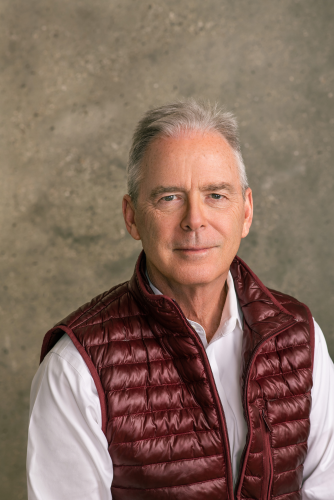 Matt OConnellOperating PartnerDCVCMatt joined DCVC in 2020 as an Operating Partner. He focuses on companies in the Defense, Intelligence and Space sectors. He spends most of his time helping those companies grow through strategic advice and introductions. His goal is to help the defense and intelligence sectors achieve their missions and to make the world safer by using innovative technologies. Matt has also served on several Government and industry advisory commissions. He is currently a member of the Boards of Fortem Technologies and Jupiter Intelligence. He was Chairman of Capella Space from 2022 until its sale in 2025. Matt has had a number of leadership roles in the satellite, digital mapping and intelligence industries. He founded GeoEye, a leading global provider of satellite and aerial imagery and digital mapping information, in 2006. GeoEye was publicly traded (GEOY). In January, 2013, he concluded its sale for $1.3B to DigitalGlobe. He was CEO of OneWeb from October 2015 to July 2016. Matt holds a law degree from Univ. of Virginia School of Law and a B.A. in Classics from Trinity College.
Matt OConnellOperating PartnerDCVCMatt joined DCVC in 2020 as an Operating Partner. He focuses on companies in the Defense, Intelligence and Space sectors. He spends most of his time helping those companies grow through strategic advice and introductions. His goal is to help the defense and intelligence sectors achieve their missions and to make the world safer by using innovative technologies. Matt has also served on several Government and industry advisory commissions. He is currently a member of the Boards of Fortem Technologies and Jupiter Intelligence. He was Chairman of Capella Space from 2022 until its sale in 2025. Matt has had a number of leadership roles in the satellite, digital mapping and intelligence industries. He founded GeoEye, a leading global provider of satellite and aerial imagery and digital mapping information, in 2006. GeoEye was publicly traded (GEOY). In January, 2013, he concluded its sale for $1.3B to DigitalGlobe. He was CEO of OneWeb from October 2015 to July 2016. Matt holds a law degree from Univ. of Virginia School of Law and a B.A. in Classics from Trinity College. -
Real World Vulnerabilities in Satellite Ground Systems
Cyber attacks on the satellite ground segment are both real and more common than one might expect. As more ground stations are pressed into extended service lives, the industry has created a target-rich environment. In this keynote presentation, Daniel Gizinski, President of Satellite & Space Communications Segment at Comtech explores threats and techniques being leveraged against satellite systems, best practices to ensure that systems remain well protected, and long term viewpoints to help ensure that the industry, academia, and government work together effectively.
 Daniel GizinskiPresident of Satellite & Space Communications SegmentComtechDaniel Gizinski was named President of Comtech's Satellite & Space Communications Segment in November of 2024. Previously, Daniel served as Chief Strategy Officer and President of the Comtech Satellite Network Technologies ("CSNTI") division. Daniel also held prior appointments as the Company's Chief Strategy Officer from 2022-2024 and President of CSNTI in 2022. During his tenure at Comtech, he has held various senior management positions, including serving as Vice President of Product and Strategy for Comtech Systems, Inc. Earlier in his career, Gizinski held program management and leadership roles at General Electric, Sierra Nevada Corporation, and L3Harris Technologies. Gizinski holds a bachelor's degree in electrical engineering from the University of Virginia and a master's degree from Duke University.
Daniel GizinskiPresident of Satellite & Space Communications SegmentComtechDaniel Gizinski was named President of Comtech's Satellite & Space Communications Segment in November of 2024. Previously, Daniel served as Chief Strategy Officer and President of the Comtech Satellite Network Technologies ("CSNTI") division. Daniel also held prior appointments as the Company's Chief Strategy Officer from 2022-2024 and President of CSNTI in 2022. During his tenure at Comtech, he has held various senior management positions, including serving as Vice President of Product and Strategy for Comtech Systems, Inc. Earlier in his career, Gizinski held program management and leadership roles at General Electric, Sierra Nevada Corporation, and L3Harris Technologies. Gizinski holds a bachelor's degree in electrical engineering from the University of Virginia and a master's degree from Duke University.Enabling Interoperable SatCom with DIFI
Typical SatCom ground system deployments rely on single vendor solutions that involve complicated and time-consuming integration work when looking to support other vendors and other satellite network operators. The mission of the Digital Intermediate Frequency Interoperability (DIFI) Consortium is to provide a simple, open, interoperable Digital IF/RF standard that replaces the natural interoperability of analog IF signals and helps prevent such vendor lock-in. In this presentation, we will examine the DIFI standard, its implementation to enable the virtualization of ground-system infrastructure, and demonstrate a multi-vendor solution for showcasing DIFI in action. This paper will discuss the DIFI ecosystem converter test with our radio frequency (RF) and network emulation solutions. In the RF domain of the DIFI RF/IF converter (IFC), Keysight's M9484C VXG vector signal generator will be used to generate a "golden" RF signal. On the other side of the IFC, we have the Ethernet domain. This is where Keysight's Pathwave Vector Signal Analysis (VSA) software comes into play. Keysight's PathWave Vector Signal Analysis software offers a comprehensive set of tools for demodulation and vector signal analysis of modern custom modulation, DVB-S2X, and 5G communication standards, and more. The VSA software can demodulate the DIFI signal coming from the IFC in the Ethernet domain, showing the "health" of the waveform that's being transferred, the RF signal that is being transferred through the converter via DIFI/VITA49. Keysight's Ixia BreakingPoint software runs on a traffic generator for network security test, then acts as the "golden" modem response and upstream source that provides the stateful entity on the other side of the IFC to send DIFI packets upstream to the converter. Therefore, Keysight provides two sides (downstream RF and upstream DIFI Ethernet) to the IFC. This paper will also discuss Ethernet traffic test scenarios for integrators. These examples represent real-world, planned implementations of DIFI in satellite communications (SatCom) signal services. using real-world examples.
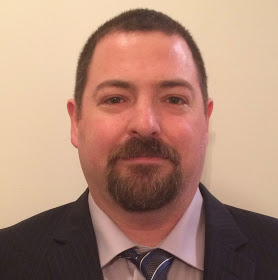 Marty HoffmannSystems EngineerKeysight Technologies
Marty HoffmannSystems EngineerKeysight Technologies
Tuesday, March 24
-
Room: Ballroom A/B
SATShow Week's Tuesday Opening Keynote Address
-
Room: Ballroom A/B
SATShow Week's Tuesday Opening General Session: Industry Leaders Forecast
The marquee event of SATShow Week brings CEOs of the world's leading operators together for a discussion that sets the tone for the industry and establishes benchmarks for the year. This session historically sets the stage for new technologies, new solutions, and new directions for satellite services. This is the reason our Tuesday Opening General Session is described as SATShow Week's "can't miss" event. This session is open to all attendees.
 Ali Al HashemiCEO of Space Services and Chairman of GSOASpace42Ali Al Hashemi is the Chief Executive Officer of Space Services at Space42, the leading AI-powered SpaceTech company in the UAE. He leads the company's satellite infrastructure strategy and drives efforts to build sovereign space capabilities for the UAE and beyond. Prior to the merger of Bayanat and Yahsat to form Space42, Ali served as Group CEO of Yahsat, where he played a key role in the company's transformation and growth. He led Yahsat's successful listing on the Abu Dhabi Securities Exchange (ADX) in 2021, and the strategic acquisition and integration of Thuraya. With over 20 years of experience in the satellite and telecommunications sectors, Ali has delivered commercial growth, strengthened government and global partnerships, and enabled infrastructure innovation across the industry. He is Chairman of the Global Satellite Operators Association (GSOA) and the Arab Satellite Communications Organization (JOSOA). He also serves on the boards of the UAE Space Agency and the National Space Science and Technology Center. Ali holds an MBA from London Business School and has been recognized by Forbes as one of the Middle East's Top 100 CEOs and a sustainability leader.
Ali Al HashemiCEO of Space Services and Chairman of GSOASpace42Ali Al Hashemi is the Chief Executive Officer of Space Services at Space42, the leading AI-powered SpaceTech company in the UAE. He leads the company's satellite infrastructure strategy and drives efforts to build sovereign space capabilities for the UAE and beyond. Prior to the merger of Bayanat and Yahsat to form Space42, Ali served as Group CEO of Yahsat, where he played a key role in the company's transformation and growth. He led Yahsat's successful listing on the Abu Dhabi Securities Exchange (ADX) in 2021, and the strategic acquisition and integration of Thuraya. With over 20 years of experience in the satellite and telecommunications sectors, Ali has delivered commercial growth, strengthened government and global partnerships, and enabled infrastructure innovation across the industry. He is Chairman of the Global Satellite Operators Association (GSOA) and the Arab Satellite Communications Organization (JOSOA). He also serves on the boards of the UAE Space Agency and the National Space Science and Technology Center. Ali holds an MBA from London Business School and has been recognized by Forbes as one of the Middle East's Top 100 CEOs and a sustainability leader.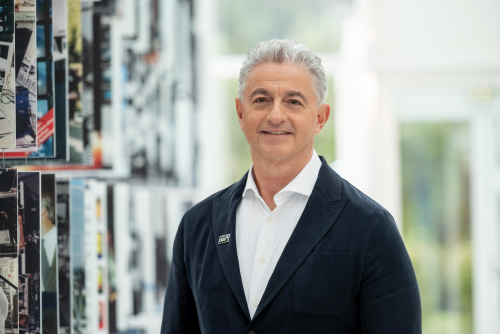 Adel Al-SalehCEOSESWith more than 30 years of experience working in senior management roles at leading IT and telecommunication companies, Adel Al-Saleh was appointed Chief Executive Officer of SES in February 2024. Adel joined SES from T-Systems, the IT subsidiary of leading European Telecommunication provider Deutsche Telekom, where he was CEO since 2018. He was also a Board Member of Deutsche Telekom. Before that, he was the CEO for Northgate Information Solutions (NIS) Group from 2011-2018. Adel also held a variety of senior leadership roles at IMS Health and IBM for the first 25 years of his professional life. Adel graduated from Boston University with a Bachelor of Science degree in Electrical Engineering and holds a Master of Business Administration from Florida Atlantic University. Adel is a US and UK national.
Adel Al-SalehCEOSESWith more than 30 years of experience working in senior management roles at leading IT and telecommunication companies, Adel Al-Saleh was appointed Chief Executive Officer of SES in February 2024. Adel joined SES from T-Systems, the IT subsidiary of leading European Telecommunication provider Deutsche Telekom, where he was CEO since 2018. He was also a Board Member of Deutsche Telekom. Before that, he was the CEO for Northgate Information Solutions (NIS) Group from 2011-2018. Adel also held a variety of senior leadership roles at IMS Health and IBM for the first 25 years of his professional life. Adel graduated from Boston University with a Bachelor of Science degree in Electrical Engineering and holds a Master of Business Administration from Florida Atlantic University. Adel is a US and UK national. Jean-François FallacherCEOEutelsatJean-François Fallacher has been serving as Chief Executive Officer of Eutelsat Group since June 2025. With over 30 years of experience in the European telecommunications sector, he has held senior leadership positions across several national markets. Prior to joining Eutelsat, he served as CEO of Orange France, Orange Spain, Orange Poland, and Orange Romania. Throughout his career, he has led major industrial and infrastructure programs, including the nationwide deployment of fiber and 5G networks, as well as large-scale integrations involving both public and private stakeholders. A French national, Jean-François Fallacher is a graduate of École Polytechnique and Télécom Paris.
Jean-François FallacherCEOEutelsatJean-François Fallacher has been serving as Chief Executive Officer of Eutelsat Group since June 2025. With over 30 years of experience in the European telecommunications sector, he has held senior leadership positions across several national markets. Prior to joining Eutelsat, he served as CEO of Orange France, Orange Spain, Orange Poland, and Orange Romania. Throughout his career, he has led major industrial and infrastructure programs, including the nationwide deployment of fiber and 5G networks, as well as large-scale integrations involving both public and private stakeholders. A French national, Jean-François Fallacher is a graduate of École Polytechnique and Télécom Paris.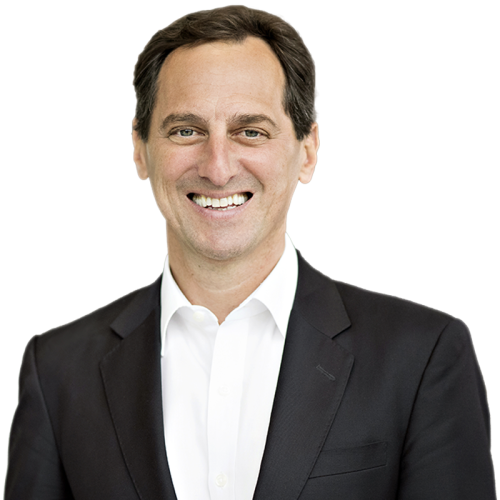 Daniel S. GoldbergPresident and Chief Executive OfficerTelesatDan Goldberg has served as President and Chief Executive Officer of Telesat since 2006, leading one of the world's largest and most innovative satellite operators. Under his leadership, Telesat expanded its global footprint and made a strategic pivot to develop an advanced Low Earth Orbit (LEO) satellite constellation--Telesat Lightspeed--designed to meet the evolving broadband connectivity needs of enterprise and government customers worldwide. Prior to joining Telesat, Mr. Goldberg was CEO of SES New Skies, following its acquisition by SES, where he also sat on the SES Executive Committee. Before the acquisition, he held successive leadership roles at New Skies, including CEO, Chief Operating Officer, and General Counsel. Earlier in his career, Mr. Goldberg held senior legal and regulatory positions at PanAmSat, serving as Associate General Counsel and Vice President of Government and Regulatory Affairs. He began his legal career in Washington, D.C., practicing at Covington & Burling and later served as a Deputy Prosecutor in the Ada County Prosecutor's Office in Boise, Idaho, and then as an associate lawyer at Goldberg, Godles, Wiener & Wright in Washington, D.C. Mr. Goldberg served as the inaugural Chair of the Space Canada board of directors and was Chairman of the Board of the Global Satellite Operators Association (GSOA) from 2023 to 2025. He earned his undergraduate degree with highest honors from the University of Virginia and holds a law degree from Harvard Law School, graduating cum laude.
Daniel S. GoldbergPresident and Chief Executive OfficerTelesatDan Goldberg has served as President and Chief Executive Officer of Telesat since 2006, leading one of the world's largest and most innovative satellite operators. Under his leadership, Telesat expanded its global footprint and made a strategic pivot to develop an advanced Low Earth Orbit (LEO) satellite constellation--Telesat Lightspeed--designed to meet the evolving broadband connectivity needs of enterprise and government customers worldwide. Prior to joining Telesat, Mr. Goldberg was CEO of SES New Skies, following its acquisition by SES, where he also sat on the SES Executive Committee. Before the acquisition, he held successive leadership roles at New Skies, including CEO, Chief Operating Officer, and General Counsel. Earlier in his career, Mr. Goldberg held senior legal and regulatory positions at PanAmSat, serving as Associate General Counsel and Vice President of Government and Regulatory Affairs. He began his legal career in Washington, D.C., practicing at Covington & Burling and later served as a Deputy Prosecutor in the Ada County Prosecutor's Office in Boise, Idaho, and then as an associate lawyer at Goldberg, Godles, Wiener & Wright in Washington, D.C. Mr. Goldberg served as the inaugural Chair of the Space Canada board of directors and was Chairman of the Board of the Global Satellite Operators Association (GSOA) from 2023 to 2025. He earned his undergraduate degree with highest honors from the University of Virginia and holds a law degree from Harvard Law School, graduating cum laude. -
Room: SATELLITE Unveiled Theater
10th Annual Startup Space Entrepreneur Pitch Contest
SATShow's rock star startup competition returns! Ten entrepreneurs from ten startup companies will engage in a battle of business pitches before a panel of the space industry's most active and influential investors. They will compete for a prize package that includes guaranteed investor pitch meetings and a chance to win millions in financing. Since its launch in 2016, our Startup Space Entrepreneur Pitch Contest has helped transform breakout companies such as LeoLabs, Orbit Fab, Astroscale, Ursa Space, and more than 120 other space startups from around the world into market leaders. Join us to celebrate Startup Space's 10-year anniversary with ten new competitors revealing bleeding edge solutions that will revolutionize our industry! Startup Space is generously sponsored by JSAT and produced in partnership with Rafferty Jackson of Jack Industries.
 Rama AfulloFounder & CEOSatlytRama Afullo is the Founder & CEO of Satlyt, the Above Cloud Service Provider™ building an AI-powered, decentralized cloud platform for satellites. A former product leader at SpaceX (Starlink), Google (AI Startups & Cloud), and Tesla (Energy Access), Rama brings a decade of experience in building systems that scale across both Earth and orbit. Under his leadership, Satlyt has been awarded a NASA STTR grant, partnered with national space agencies, and secured VC backing from leading early-stage investors. He holds degrees in Mechanical Engineering and Business Management, and paused a Space Systems Engineering program at Johns Hopkins to launch Satlyt full-time.
Rama AfulloFounder & CEOSatlytRama Afullo is the Founder & CEO of Satlyt, the Above Cloud Service Provider™ building an AI-powered, decentralized cloud platform for satellites. A former product leader at SpaceX (Starlink), Google (AI Startups & Cloud), and Tesla (Energy Access), Rama brings a decade of experience in building systems that scale across both Earth and orbit. Under his leadership, Satlyt has been awarded a NASA STTR grant, partnered with national space agencies, and secured VC backing from leading early-stage investors. He holds degrees in Mechanical Engineering and Business Management, and paused a Space Systems Engineering program at Johns Hopkins to launch Satlyt full-time.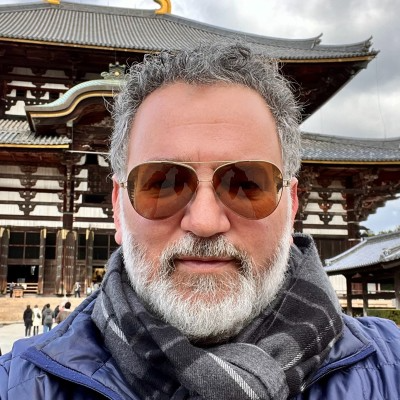 David AndermanCo-Founder & Operating PartnerStellar Ventures
David AndermanCo-Founder & Operating PartnerStellar Ventures Mark BoggettCEOSeraphim SpaceMark is the CEO and co-founder of Seraphim Space, an investment firm exclusively focused on SpaceTech domain globally. Seraphim launched the world's first Space VC fund in 2016. On top this, it now operates its Seraphim Space Accelerator and a space growth fund, listed on the London Stock Exchange. Across these three elements Seraphim has built a portfolio of well over 100 SpaceTech startups - the world's most prolific investor in the space domain.
Mark BoggettCEOSeraphim SpaceMark is the CEO and co-founder of Seraphim Space, an investment firm exclusively focused on SpaceTech domain globally. Seraphim launched the world's first Space VC fund in 2016. On top this, it now operates its Seraphim Space Accelerator and a space growth fund, listed on the London Stock Exchange. Across these three elements Seraphim has built a portfolio of well over 100 SpaceTech startups - the world's most prolific investor in the space domain. Naman ChawlaChief Executive OfficerOrbitArchNaman Chawla is the Founder & CEO of Orbitarch, a deep-tech startup pioneering AI-powered autonomous satellite systems for space debris avoidance. With a background in aerospace innovation and strategic leadership, Naman has represented his company at global forums including ESA's Zero Debris Symposium and is actively collaborating with regional space agencies. He has experience leading multi-disciplinary teams across AI modeling, orbital simulation, and LiDAR integration, and has negotiated partnerships across India, UAE, and Japan. As a passionate advocate for sustainable space, Naman brings a unique blend of technical insight and entrepreneurial drive to the global stage.
Naman ChawlaChief Executive OfficerOrbitArchNaman Chawla is the Founder & CEO of Orbitarch, a deep-tech startup pioneering AI-powered autonomous satellite systems for space debris avoidance. With a background in aerospace innovation and strategic leadership, Naman has represented his company at global forums including ESA's Zero Debris Symposium and is actively collaborating with regional space agencies. He has experience leading multi-disciplinary teams across AI modeling, orbital simulation, and LiDAR integration, and has negotiated partnerships across India, UAE, and Japan. As a passionate advocate for sustainable space, Naman brings a unique blend of technical insight and entrepreneurial drive to the global stage.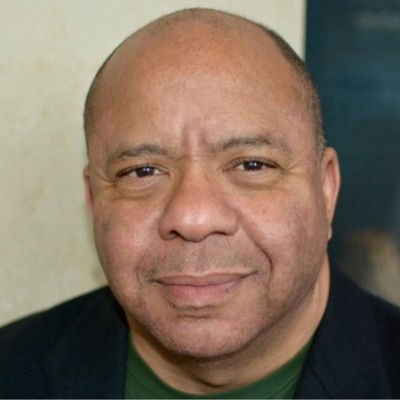 Terence CraigChief Investment Office, The Impact Seat & AdvisorToyota VenturesTerence Craig is the chief investment officer for The Impact Seat, where he leads investment activities and provides post-investment support for over 60 portfolio companies and monitors LP investments in several venture funds. An experienced technologist, speaker and author, Terence has founded multiple companies and has served as the chief technology officer at multiple venture-backed companies, including the Mayfield-funded Consensys Software and several pioneering enterprise and big data software companies. Terence was one of the earliest Black CEOs and founders to raise venture capital, and he uses that experience and expertise to improve the startup ecosystem. His goal has been to support other "non-traditional" founders in navigating the startup landscape. His efforts to increase inclusion in the startup ecosystem led Terence to join the executive team at Astia Angels, where he ran a pilot investment program to support women of color.
Terence CraigChief Investment Office, The Impact Seat & AdvisorToyota VenturesTerence Craig is the chief investment officer for The Impact Seat, where he leads investment activities and provides post-investment support for over 60 portfolio companies and monitors LP investments in several venture funds. An experienced technologist, speaker and author, Terence has founded multiple companies and has served as the chief technology officer at multiple venture-backed companies, including the Mayfield-funded Consensys Software and several pioneering enterprise and big data software companies. Terence was one of the earliest Black CEOs and founders to raise venture capital, and he uses that experience and expertise to improve the startup ecosystem. His goal has been to support other "non-traditional" founders in navigating the startup landscape. His efforts to increase inclusion in the startup ecosystem led Terence to join the executive team at Astia Angels, where he ran a pilot investment program to support women of color. Connie ErlangerCEOGoKnown LLC
Connie ErlangerCEOGoKnown LLC Negar FeherCEOSpacedock
Negar FeherCEOSpacedock Shoaib IqbalCo-Founder and CEOEsper Satellite Imagery
Shoaib IqbalCo-Founder and CEOEsper Satellite Imagery Rafferty JacksonBoard Member, Advisor, InvestorJack IndustriesRafferty Jackson helps founders, leaders, and investors tell complex deep tech stories to broader audiences through universal storytelling techniques. As an operator, she has taken technology and CPG companies through hyper-growth scaling, investments, global expansion, mergers, acquisitions, and IPO including selling Beats by Dr. Dre to Apple for $3B. Now, she is the Non-Executive Director at Opteran Technologies, neuromorphic autonomy software for machines, and she is an advisor to Xona Space Systems, resilient precision PNT through a LEO constellation, to Eartheye Space, SAAS on demand earth imagery delivered near real time with business insights, and to New Vista Capital, strategy and network connections for aerospace and national security startups. In 2024, Rafferty was appointed to the Independent Investment Committee of Seraphim Space Ventures Fund II and 2025 marks her 9th year at Satellite with the Startup Space Competition.
Rafferty JacksonBoard Member, Advisor, InvestorJack IndustriesRafferty Jackson helps founders, leaders, and investors tell complex deep tech stories to broader audiences through universal storytelling techniques. As an operator, she has taken technology and CPG companies through hyper-growth scaling, investments, global expansion, mergers, acquisitions, and IPO including selling Beats by Dr. Dre to Apple for $3B. Now, she is the Non-Executive Director at Opteran Technologies, neuromorphic autonomy software for machines, and she is an advisor to Xona Space Systems, resilient precision PNT through a LEO constellation, to Eartheye Space, SAAS on demand earth imagery delivered near real time with business insights, and to New Vista Capital, strategy and network connections for aerospace and national security startups. In 2024, Rafferty was appointed to the Independent Investment Committee of Seraphim Space Ventures Fund II and 2025 marks her 9th year at Satellite with the Startup Space Competition.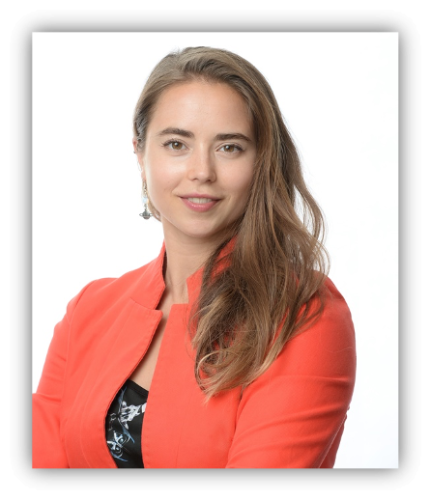 Scarlett KollerCEOMithril Technologies, Inc.After five years in systems integration and test at SpaceX and JPL, Scarlett returned to MIT to arm herself with an MS in Aerospace Engineering and an MBA from MIT Sloan before co-founding Mithril Technologies. Mithril is now developing and commercializing a new type of satellite antenna to expand the capabilities of satellites in GEO for a wide range of industry verticals in defense, communications and earth observation.
Scarlett KollerCEOMithril Technologies, Inc.After five years in systems integration and test at SpaceX and JPL, Scarlett returned to MIT to arm herself with an MS in Aerospace Engineering and an MBA from MIT Sloan before co-founding Mithril Technologies. Mithril is now developing and commercializing a new type of satellite antenna to expand the capabilities of satellites in GEO for a wide range of industry verticals in defense, communications and earth observation.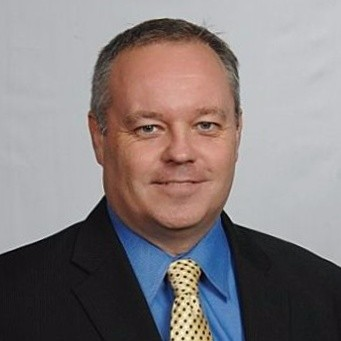 Michael MeallingGeneral PartnerStarbridge Venture CapitalMichael co-founded Masten Space Systems, was CTO of Seraph Group (a seed stage VC fund), is the CEO of the Waypaver Foundation, and the President of the Moon Society. He has helped build several startups over the years ranging from telecom consulting to social media. He received an MBA from Georgia Tech in 2011. His experience building companies and teams from scratch, raising money for those companies, and investing in similar companies has given Michael a view both the successes and failures at every stage of building sustainable companies.
Michael MeallingGeneral PartnerStarbridge Venture CapitalMichael co-founded Masten Space Systems, was CTO of Seraph Group (a seed stage VC fund), is the CEO of the Waypaver Foundation, and the President of the Moon Society. He has helped build several startups over the years ranging from telecom consulting to social media. He received an MBA from Georgia Tech in 2011. His experience building companies and teams from scratch, raising money for those companies, and investing in similar companies has given Michael a view both the successes and failures at every stage of building sustainable companies. Josephine MillwardPartnerOpAmp CapitalJosephine brings more than a decade of experience in investment/equity research following the aerospace industry. Her research coverage has included a wide range of small-to-mid cap Defence and Security Technology companies, such as space (DigitalGlobe and GeoEye), drones (AeroVironment) robots (iRobot), and threat detection. She worked most recently at the Benchmark Company, where she established a Washington D.C. office prior to relocating to Paris, France. She began her equity research career covering Global Communications at JP Morgan. Josephine received her MBA from Georgetown University and bachelor's degree from the University of California, Riverside.
Josephine MillwardPartnerOpAmp CapitalJosephine brings more than a decade of experience in investment/equity research following the aerospace industry. Her research coverage has included a wide range of small-to-mid cap Defence and Security Technology companies, such as space (DigitalGlobe and GeoEye), drones (AeroVironment) robots (iRobot), and threat detection. She worked most recently at the Benchmark Company, where she established a Washington D.C. office prior to relocating to Paris, France. She began her equity research career covering Global Communications at JP Morgan. Josephine received her MBA from Georgetown University and bachelor's degree from the University of California, Riverside. Matt OConnellOperating PartnerDCVCMatt joined DCVC in 2020 as an Operating Partner. He focuses on companies in the Defense, Intelligence and Space sectors. He spends most of his time helping those companies grow through strategic advice and introductions. His goal is to help the defense and intelligence sectors achieve their missions and to make the world safer by using innovative technologies. Matt has also served on several Government and industry advisory commissions. He is currently a member of the Boards of Fortem Technologies and Jupiter Intelligence. He was Chairman of Capella Space from 2022 until its sale in 2025. Matt has had a number of leadership roles in the satellite, digital mapping and intelligence industries. He founded GeoEye, a leading global provider of satellite and aerial imagery and digital mapping information, in 2006. GeoEye was publicly traded (GEOY). In January, 2013, he concluded its sale for $1.3B to DigitalGlobe. He was CEO of OneWeb from October 2015 to July 2016. Matt holds a law degree from Univ. of Virginia School of Law and a B.A. in Classics from Trinity College.
Matt OConnellOperating PartnerDCVCMatt joined DCVC in 2020 as an Operating Partner. He focuses on companies in the Defense, Intelligence and Space sectors. He spends most of his time helping those companies grow through strategic advice and introductions. His goal is to help the defense and intelligence sectors achieve their missions and to make the world safer by using innovative technologies. Matt has also served on several Government and industry advisory commissions. He is currently a member of the Boards of Fortem Technologies and Jupiter Intelligence. He was Chairman of Capella Space from 2022 until its sale in 2025. Matt has had a number of leadership roles in the satellite, digital mapping and intelligence industries. He founded GeoEye, a leading global provider of satellite and aerial imagery and digital mapping information, in 2006. GeoEye was publicly traded (GEOY). In January, 2013, he concluded its sale for $1.3B to DigitalGlobe. He was CEO of OneWeb from October 2015 to July 2016. Matt holds a law degree from Univ. of Virginia School of Law and a B.A. in Classics from Trinity College.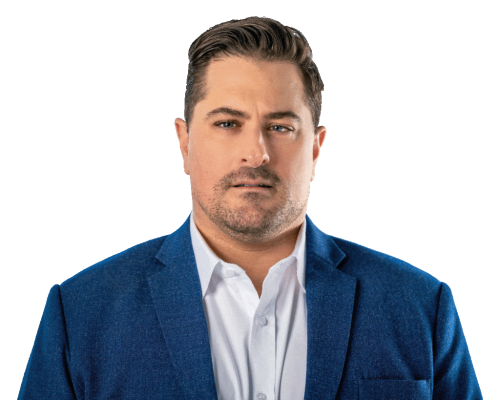 Michael PalankGeneral PartnerMaC Venture CapitalMichael Palank has been General Partner at MaC Venture Capital since its inception in January 2019. At MaC, Michael focuses on seed-stage consumer and enterprise startup investing across a number of sectors. Prior, he was General Partner at M Ventures, a Los Angeles and Bay Area based early-stage venture fund. Michael was a member of the founding team of MACRO Media, a disruptive media company founded by Charles D. King and focused on the multicultural market where he led digital strategy and operations. Michael has six and a half years experience working both inside and alongside early-stage startups in the media and technology sector. He ran business development and became GM of TopFloor, a venture-backed e-commerce startup formed out of technology studio Science. Additionally, Michael has consulted with over two dozen startups aiding in business model development, financial modeling and early-stage fundraising strategy. Michael worked closely with LA-based media and events company BeautyCon on their initial seed round which included investments from Hearst, Raptor Group, CAA, Maker Studios (now with Disney) and Fullscreen (now with AT&T). Michael entered the LA tech ecosystem in 2012 as a new business consultant for Amplify, one of LA's top incubators turned early-stage venture capital firms. Prior to working in startups, Michael spent eight years working in media and entertainment, first as an agent trainee and agent at The William Morris Agency and then as Director of Business Development at Will Smith's production company, Overbrook Entertainment. Michael started his career as a financial analyst at the Chicago-based hedge fund Coghill Capital Management. He has degrees in finance, accounting and psychology from DePaul University where he graduated with honors in the top 5% of his class. He lives in Los Angeles with his wife Kottie and their two kids, Teddy and Lola.
Michael PalankGeneral PartnerMaC Venture CapitalMichael Palank has been General Partner at MaC Venture Capital since its inception in January 2019. At MaC, Michael focuses on seed-stage consumer and enterprise startup investing across a number of sectors. Prior, he was General Partner at M Ventures, a Los Angeles and Bay Area based early-stage venture fund. Michael was a member of the founding team of MACRO Media, a disruptive media company founded by Charles D. King and focused on the multicultural market where he led digital strategy and operations. Michael has six and a half years experience working both inside and alongside early-stage startups in the media and technology sector. He ran business development and became GM of TopFloor, a venture-backed e-commerce startup formed out of technology studio Science. Additionally, Michael has consulted with over two dozen startups aiding in business model development, financial modeling and early-stage fundraising strategy. Michael worked closely with LA-based media and events company BeautyCon on their initial seed round which included investments from Hearst, Raptor Group, CAA, Maker Studios (now with Disney) and Fullscreen (now with AT&T). Michael entered the LA tech ecosystem in 2012 as a new business consultant for Amplify, one of LA's top incubators turned early-stage venture capital firms. Prior to working in startups, Michael spent eight years working in media and entertainment, first as an agent trainee and agent at The William Morris Agency and then as Director of Business Development at Will Smith's production company, Overbrook Entertainment. Michael started his career as a financial analyst at the Chicago-based hedge fund Coghill Capital Management. He has degrees in finance, accounting and psychology from DePaul University where he graduated with honors in the top 5% of his class. He lives in Los Angeles with his wife Kottie and their two kids, Teddy and Lola.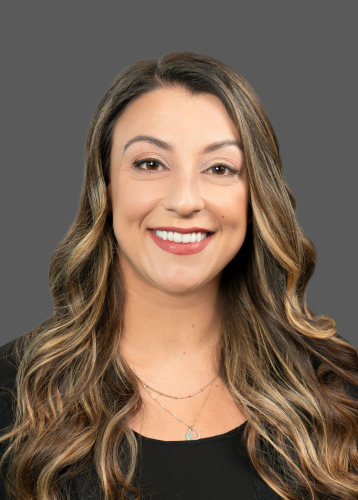 Dr. Alison Perez PhDSenior Investment ManagerLockheed Martin VenturesDr. Ali Perez joined Lockheed Martin Ventures in 2021. Ali is responsible for investments in space, AI, human potential, biotechnology, man-unmanned teaming, digital transformation, and advanced manufacturing. Her role also supports post-deal integration and transition of technology from the Ventures portfolio into Lockheed pursuits and programs. She runs the Ventures Internal Research and Development program that provides LM engineers with opportunities to collaborate with start-up companies that Lockheed Martin Ventures has invested in. Ali received an M.S and Ph.D. in Cognitive Neuroscience from the University of Texas at Dallas. Ali also received her B.A in Experimental Psychology from the University of South Carolina.
Dr. Alison Perez PhDSenior Investment ManagerLockheed Martin VenturesDr. Ali Perez joined Lockheed Martin Ventures in 2021. Ali is responsible for investments in space, AI, human potential, biotechnology, man-unmanned teaming, digital transformation, and advanced manufacturing. Her role also supports post-deal integration and transition of technology from the Ventures portfolio into Lockheed pursuits and programs. She runs the Ventures Internal Research and Development program that provides LM engineers with opportunities to collaborate with start-up companies that Lockheed Martin Ventures has invested in. Ali received an M.S and Ph.D. in Cognitive Neuroscience from the University of Texas at Dallas. Ali also received her B.A in Experimental Psychology from the University of South Carolina.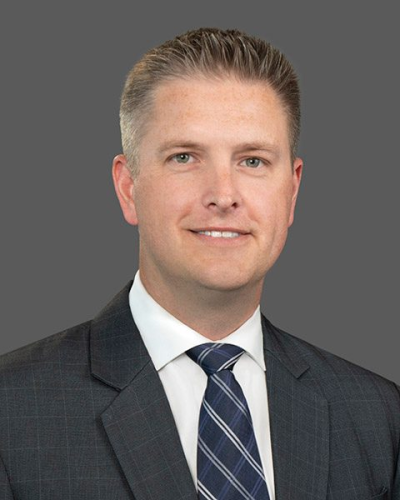 John RichmondInvestment ManagerLockheed Martin VenturesJohn Richmond is an Investment Manager with Lockheed Martin Ventures, the Venture Capital arm of Lockheed Martin Corporation. Mr. Richmond is responsible for identifying and investing in startup companies whose technologies fit within an array of investment landscapes and strategically align with Lockheed's four business areas. Mr. Richmond has advised startup founders as an independent consultant helping them grow through financing, team building, technology maturation, and bringing products to market. Mr. Richmond has over 12 years of experience as an active-duty Air Force officer, where he was an Astronautical Engineer and Program Manager for a wide range of DoD and IC space acquisition programs. He has managed large technical teams and supported senior joint and coalition leadership on the employment of combat weapon systems globally. Mr. Richmond continues to serve as an Air Force reserve officer. John graduated from the U.S. Air Force Academy as a distinguished graduate with a B.S. in Astronautical Engineering and a minor in Mandarin Chinese. He went on to complete an M.S. in Aeronautical and Astronautical Engineering at the Massachusetts Institute of Technology and an MBA at the University of Virginia Darden School of Business.
John RichmondInvestment ManagerLockheed Martin VenturesJohn Richmond is an Investment Manager with Lockheed Martin Ventures, the Venture Capital arm of Lockheed Martin Corporation. Mr. Richmond is responsible for identifying and investing in startup companies whose technologies fit within an array of investment landscapes and strategically align with Lockheed's four business areas. Mr. Richmond has advised startup founders as an independent consultant helping them grow through financing, team building, technology maturation, and bringing products to market. Mr. Richmond has over 12 years of experience as an active-duty Air Force officer, where he was an Astronautical Engineer and Program Manager for a wide range of DoD and IC space acquisition programs. He has managed large technical teams and supported senior joint and coalition leadership on the employment of combat weapon systems globally. Mr. Richmond continues to serve as an Air Force reserve officer. John graduated from the U.S. Air Force Academy as a distinguished graduate with a B.S. in Astronautical Engineering and a minor in Mandarin Chinese. He went on to complete an M.S. in Aeronautical and Astronautical Engineering at the Massachusetts Institute of Technology and an MBA at the University of Virginia Darden School of Business. Lennon SugaDirector, Overseas Business DepartmentOcean Solution Technology Co.
Lennon SugaDirector, Overseas Business DepartmentOcean Solution Technology Co. Issei SuzukiHead of Innovation & Business DevelopmentJSAT International Inc.
Issei SuzukiHead of Innovation & Business DevelopmentJSAT International Inc. Yasuhito UtoCEO and FounderBULL Co. Ltd.
Yasuhito UtoCEO and FounderBULL Co. Ltd.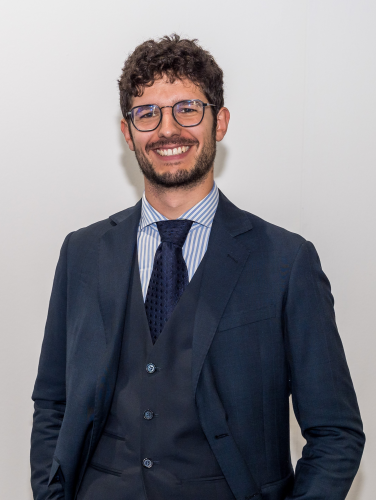 Matteo VismaraFounder & CEOSatEnlightMatteo Vismara is the CEO and Co-Founder of SatEnlight, a deep-tech startup pioneering high-speed and ultra-secure optical satellite communications. Matteo holds a Master's degree with honors in Physics from the University of Milan, where he specialized in light propagation through turbulent media. He is part of a research group for optical communications and is co-author of several upcoming scientific papers on atmospheric turbulence characterization and integrated photonic systems. Before founding SatEnlight, Matteo served as President of the Italian Association of Physics Students for four years, where he led the organization of national and international scientific events. Passionate about innovation and leadership, Matteo is a Silicon Valley Fellow, a program through which he built valuable connections across San Francisco's startup ecosystem. To deepen his expertise in the space economy and corporate innovation, he has completed a course on the New Space Economy at the Massachusetts Institute of Technology (MIT) and is currently pursuing an MBA in Business Innovation at MIB Trieste School of Management. Driven by curiosity and a vision for the future of space communications, Matteo leads SatEnlight in bridging advanced photonics research with real-world applications for the space, telecom, and defense sectors.Room: Orbit Theater
Matteo VismaraFounder & CEOSatEnlightMatteo Vismara is the CEO and Co-Founder of SatEnlight, a deep-tech startup pioneering high-speed and ultra-secure optical satellite communications. Matteo holds a Master's degree with honors in Physics from the University of Milan, where he specialized in light propagation through turbulent media. He is part of a research group for optical communications and is co-author of several upcoming scientific papers on atmospheric turbulence characterization and integrated photonic systems. Before founding SatEnlight, Matteo served as President of the Italian Association of Physics Students for four years, where he led the organization of national and international scientific events. Passionate about innovation and leadership, Matteo is a Silicon Valley Fellow, a program through which he built valuable connections across San Francisco's startup ecosystem. To deepen his expertise in the space economy and corporate innovation, he has completed a course on the New Space Economy at the Massachusetts Institute of Technology (MIT) and is currently pursuing an MBA in Business Innovation at MIB Trieste School of Management. Driven by curiosity and a vision for the future of space communications, Matteo leads SatEnlight in bridging advanced photonics research with real-world applications for the space, telecom, and defense sectors.Room: Orbit TheaterCTO Forum: Harnessing the Full Potential of Satellite Spectrum in an Era of Rapid Change
SATShow Week's Exhibit Hall conference program opens with our annual CTO Forum - a panel session bringing engineering leadership from across the satellite supply chain to discuss the biggest technological opportunities challenges facing the industry. In this year's CTO Forum, our speakers will share how satellite companies are unlocking the full potential of satellite bandwidth resources to meet the evolving needs of their customers. Learn how modern spectrum sharing and reuse techniques enable powerful applications in the age of multi-orbit satellite services and integration with terrestrial networks. Attendees will also learn how advancements in signal processing and virtualization are driving 5G over satellite, Direct-to-Device, and even powerful imagery and data services.
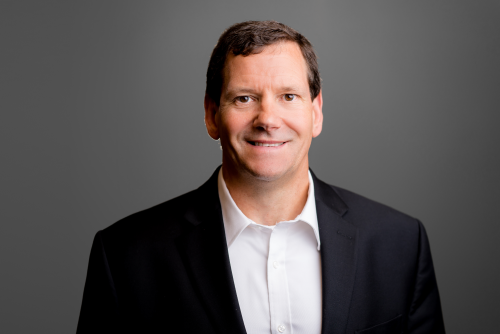 Moderator
Stuart DaughtridgeVice President Advanced TechnologyKratos Defense and Security SolutionsMr. Daughtridge has been with Kratos-Integral Systems since 1999, and in the satellite and aerospace industry since 1986. Prior to his current role, he held several senior management positions, including SVP & GM of the Integral Systems Products Group, SVP & GM of the Integral Systems Commercial Group, as well as Program Manager of several major commercial programs. Before joining the Company, Mr. Daughtridge held various management positions with Orion Satellite Corporation, and was a satellite systems engineer for both Intelsat and Spacecom.
Moderator
Stuart DaughtridgeVice President Advanced TechnologyKratos Defense and Security SolutionsMr. Daughtridge has been with Kratos-Integral Systems since 1999, and in the satellite and aerospace industry since 1986. Prior to his current role, he held several senior management positions, including SVP & GM of the Integral Systems Products Group, SVP & GM of the Integral Systems Commercial Group, as well as Program Manager of several major commercial programs. Before joining the Company, Mr. Daughtridge held various management positions with Orion Satellite Corporation, and was a satellite systems engineer for both Intelsat and Spacecom.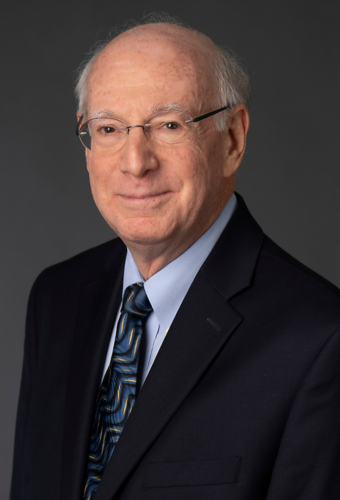 Dr. Joseph BravmanChief EngineerLynk GlobalDr. Joseph S. Bravman is a highly talented and experienced engineering and business executive who has served in a number of roles over his decades-long career. In his current role at Lynk, he uses his extensive expertise to direct and inform work and strategy in various electronics, communications, and space technologies, program management, regulatory, and national security fields. His diverse knowledge and experience are especially useful when many of these disciplines interact with each other as occurs with a space-based telecommunications business. He is also a resource to mentor personnel who are at earlier stages of their careers, and brings his many relationships to enhance the company's objectives. Dr. Joseph S. Bravman joined Lynk in 2018 and serves as its Chief Engineer. Lynk is an entrepreneurial company that is developing, building and launching a constellation of pLEO satellites that serve as "cell towers in space". These satellites will connect unmodified cellular devices to provide global cell phone capabilities without the need for terrestrial infrastructure. In 2012 he co-founded Omnispace, LLC, and until 2016 served as its CEO. Omnispace is the owner and operator of an on-orbit MEO communications satellite, a global ground network, and S-Band spectrum. He is also the founder of Omnisat, LLC, a satellite data transmission services and consulting company that leased GEO satellite radio capacity to deliver high value digital content over most of Europe, Asia, and Africa. Dr. Bravman previously held several positions at Orbital Science Corporation (now Northrop Grumman). He was Orbital's Senior Vice President/Corporate Development until May 2000 and prior to that served as Corporate Chief Engineer, Senior Vice President of Orbital's Advanced Systems Group, and Senior Vice President for Engineering and Operations of the company's Space and Electronic Systems Group. During his time at Orbital, Dr. Bravman executed several remote sensing and communications satellite programs and managed the redesign and construction of the ORBCOMM satellite constellation and Orbital's role as provider of the ORBCOMM space segment. Prior to Orbital's acquisition of Fairchild Space and Defence Corporation in 1994, Dr. Bravman was Corporate Executive Vice President of Fairchild, and President of its Defense Electronics division that produced avionics, satellite communications, and mission planning ground support systems. He joined Fairchild in 1974. Dr. Bravman received his B.S. degree in electrical engineering from the Massachusetts Institute of Technology and his M.S. and Ph.D. degrees in electrical engineering from Cornell University. He was awarded the Silver Night of Management in 1991 and was granted 3 US patents for Ka-Band store and forward gigabit per second data delivery satellite systems. Dr. Bravman has served on several boards including the National Defense Industrial Association, Syntonics LLC, and the Arthur C. Clarke Foundation. He has been a member of Cornell's student nano-satellite project advisory team, the Maryland High-Technology Council Board, the Maryland Angels Council investment group, NSTAC Executive Subcommittee, and a representative to the ITU's WRC-15. He has served on several advisory boards to the US Government. He is also a member of many professional associations, publishes and lectures on numerous management and technical subjects, and has been an expert witness.
Dr. Joseph BravmanChief EngineerLynk GlobalDr. Joseph S. Bravman is a highly talented and experienced engineering and business executive who has served in a number of roles over his decades-long career. In his current role at Lynk, he uses his extensive expertise to direct and inform work and strategy in various electronics, communications, and space technologies, program management, regulatory, and national security fields. His diverse knowledge and experience are especially useful when many of these disciplines interact with each other as occurs with a space-based telecommunications business. He is also a resource to mentor personnel who are at earlier stages of their careers, and brings his many relationships to enhance the company's objectives. Dr. Joseph S. Bravman joined Lynk in 2018 and serves as its Chief Engineer. Lynk is an entrepreneurial company that is developing, building and launching a constellation of pLEO satellites that serve as "cell towers in space". These satellites will connect unmodified cellular devices to provide global cell phone capabilities without the need for terrestrial infrastructure. In 2012 he co-founded Omnispace, LLC, and until 2016 served as its CEO. Omnispace is the owner and operator of an on-orbit MEO communications satellite, a global ground network, and S-Band spectrum. He is also the founder of Omnisat, LLC, a satellite data transmission services and consulting company that leased GEO satellite radio capacity to deliver high value digital content over most of Europe, Asia, and Africa. Dr. Bravman previously held several positions at Orbital Science Corporation (now Northrop Grumman). He was Orbital's Senior Vice President/Corporate Development until May 2000 and prior to that served as Corporate Chief Engineer, Senior Vice President of Orbital's Advanced Systems Group, and Senior Vice President for Engineering and Operations of the company's Space and Electronic Systems Group. During his time at Orbital, Dr. Bravman executed several remote sensing and communications satellite programs and managed the redesign and construction of the ORBCOMM satellite constellation and Orbital's role as provider of the ORBCOMM space segment. Prior to Orbital's acquisition of Fairchild Space and Defence Corporation in 1994, Dr. Bravman was Corporate Executive Vice President of Fairchild, and President of its Defense Electronics division that produced avionics, satellite communications, and mission planning ground support systems. He joined Fairchild in 1974. Dr. Bravman received his B.S. degree in electrical engineering from the Massachusetts Institute of Technology and his M.S. and Ph.D. degrees in electrical engineering from Cornell University. He was awarded the Silver Night of Management in 1991 and was granted 3 US patents for Ka-Band store and forward gigabit per second data delivery satellite systems. Dr. Bravman has served on several boards including the National Defense Industrial Association, Syntonics LLC, and the Arthur C. Clarke Foundation. He has been a member of Cornell's student nano-satellite project advisory team, the Maryland High-Technology Council Board, the Maryland Angels Council investment group, NSTAC Executive Subcommittee, and a representative to the ITU's WRC-15. He has served on several advisory boards to the US Government. He is also a member of many professional associations, publishes and lectures on numerous management and technical subjects, and has been an expert witness. Greg PeltonChief Technology OfficerIridium CommunicationsGreg Pelton is the Chief Technology Officer at Iridium Communications Inc., the only satellite communications company that offers truly global voice and data coverage. In this role, he drives innovation and oversees the technical aspects of Iridium's products and services, while managing the day-to-day activities of the company's systems teams. This includes technical roadmaps and strategy, system architecture and design, engineering design and process, performance and analysis, and system integration, verification, and validation. Pelton joined Iridium from a venture-backed AI company focused on natural language understanding for the enterprise, where he served as Chief Development Officer. Prior to that he was Vice President of Collaboration and Devices at Avaya, where he managed a $400M portfolio of voice and video endpoints, soft clients, and collaboration services. Before Avaya, Pelton served as CTO and Vice President for Infrastructure Engineering at Polycom and led Cisco's corporate Technology Center where he incubated new technology growth areas for Cisco including satellite networking.
Greg PeltonChief Technology OfficerIridium CommunicationsGreg Pelton is the Chief Technology Officer at Iridium Communications Inc., the only satellite communications company that offers truly global voice and data coverage. In this role, he drives innovation and oversees the technical aspects of Iridium's products and services, while managing the day-to-day activities of the company's systems teams. This includes technical roadmaps and strategy, system architecture and design, engineering design and process, performance and analysis, and system integration, verification, and validation. Pelton joined Iridium from a venture-backed AI company focused on natural language understanding for the enterprise, where he served as Chief Development Officer. Prior to that he was Vice President of Collaboration and Devices at Avaya, where he managed a $400M portfolio of voice and video endpoints, soft clients, and collaboration services. Before Avaya, Pelton served as CTO and Vice President for Infrastructure Engineering at Polycom and led Cisco's corporate Technology Center where he incubated new technology growth areas for Cisco including satellite networking.Pioneering mmWave Radar for Space Situational Awareness
In this technical presentation, Richard Jacklin will examine cutting-edge radar developments, focusing on the distinctive implementation of mmWave technology within the 30-300 GHz frequency range for space-based applications. Imagine the need to retrieve a non-functional satellite or rocket body from orbit, or ensuring the safe rendezvous of two spacecraft for an extended mission - precise "sight" in all conditions is crucial. Non-geostationary orbits present challenges; the eclipses leave spacecraft in darkness, creating obstacles for visible light cameras. When a craft is directed towards the sun, LiDAR systems struggle due to solar interference in the laser spectrum. To prevent space accidents and ensure mission success, it is evident that additional sensor capabilities are imperative. Enter radar - a familiar technology in radio-based detection and ranging, extensively utilised in space endeavours from docking to historic lunar landings during the Apollo missions. This presentation will review the state-of-the-art in radar advancements, specifically the unique application of mmWave solutions operating within the 30 - 300 GHz spectrum for space application. It will explore radar's fundamental principles, the technological advancements enabling compact and efficient radar systems for both small satellites and larger spacecraft, and its role in complementing existing sensors through "sensor fusion" for AI-driven guidance and navigation systems. The discussion will extend to the potential application of radar sensors in lunar environments, where dust poses a significant challenge - where mmWave radar excels. Key takeaways for the audience: 1. Introducing an innovative sensor for In-Space Operations and Services along with space debris mitigation. 2. Understanding the complexities of spatial perception and the limitations of current sensor technology, including the survival requirements of delicate sensors in varied environmental and launch conditions. 3. Exploring diverse applications, such as the detection of micro-meteoroid debris of millimeter size and its potential implications beyond conventional orbits, including lunar and martian exploration.
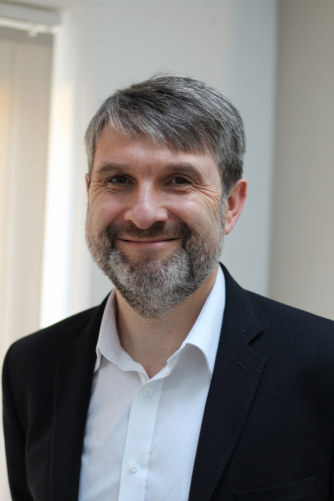 Richard JacklinSpace & Satellite Commercial LeadPLEXTEKRichard Jacklin is Space & Satellite Commercial Lead for Plextek, helping customers design and produce highly innovative electronic, radar and radio communications enabled solutions in the Space and Satellite market. In the last 12 months, he has been invited to speak about the introduction of millimetre wave radar technology into space at events including CONFERS (Washington DC), Ignite Space (UK Space Centre), AI for Space Sustainability (University of Strathclyde), and In Orbit Servicing Assembly & Manufacturing Conference 2025 (Belfast). His career in wireless electronics, now over 30 years, has included roles in companies including Ericsson, Samsung, UL, Keysight, PPM and NI. He has presented and contributed to many forums including Cambridge Wireless, GSMA working groups, and Satellite Innovation Group. Richard graduated from the University of Portsmouth with a degree in Electronic Engineering, he was also awarded Chartered Engineer status and Fellow of the Institute of Engineering and Technology (IET).
Richard JacklinSpace & Satellite Commercial LeadPLEXTEKRichard Jacklin is Space & Satellite Commercial Lead for Plextek, helping customers design and produce highly innovative electronic, radar and radio communications enabled solutions in the Space and Satellite market. In the last 12 months, he has been invited to speak about the introduction of millimetre wave radar technology into space at events including CONFERS (Washington DC), Ignite Space (UK Space Centre), AI for Space Sustainability (University of Strathclyde), and In Orbit Servicing Assembly & Manufacturing Conference 2025 (Belfast). His career in wireless electronics, now over 30 years, has included roles in companies including Ericsson, Samsung, UL, Keysight, PPM and NI. He has presented and contributed to many forums including Cambridge Wireless, GSMA working groups, and Satellite Innovation Group. Richard graduated from the University of Portsmouth with a degree in Electronic Engineering, he was also awarded Chartered Engineer status and Fellow of the Institute of Engineering and Technology (IET). -
CAM Drive: the Future of Advanced Propellantless Propulsion
The Conservation of Angular Momentum (CAM) Drive is a technological breakthrough with propellantless orbit transfer capability. The CAM Drive concept has been developed for over 10 years through model fabrication, measurements, test data, and analyses. In demonstrating CAM Drive concept, VSS made a significant discovery with physical measurements of inverted force couples by throttling Electric Ducted Fan (EDF) motors, which provides inertial forces for Hyper Transfer Vehicles (HTV). CAM Drive enables efficient and rapid hyper transfer orbits by using clean, non-toxic solar electric power. The experimental data and HTV predictions from CAM analyses provide a new and exciting way of looking at fundamental conservation, and the 1st principle of aeronautics, which is circulation. In 2023, a concept development was sponsored by the National Science Foundation (NSF). This Phase I Small Business Technology Transfer (STTR) grant to Vortex Space Systems (VSS) was performed in collaboration with the Georgia Institute of Technology in Atlanta. The successful NSF Phase I showed a single HTV mission for orbital debris removal resulted in a cost metric reduction of $210/kg for 1200 existing orbit debris rocket bodies in 5 years. This is compared to a 2023 NASA cost benefit study using seven servicing vehicles with bi-propellant orbit debris remediation at $7,464/kg for 160 objects over 5 years. HTV is 7.5 times more efficient than NASA's bi-propellant system due to refueling the servicing vehicle after two orbit/deorbit debris removal cycles. The NSF results for HTV are available in the online video link: Propellant-Free Spacecraft: Orbital Mobility - SciTube (https://scitube.io/dennis-lee-propellant-free-spacecraft-the-future-of-debris-removal-and-orbital-mobility/). This presentation provides examples of high velocity geosynchronous and lunar hyper transfer orbits, i.e., greater than Hohmann transfer velocity. Hyper transfer orbits are based on known hyperbolic orbital dynamics. These first order approximations provide continuous hyper transfer orbital momentum along the velocity vector, which is possible using CAM Drive technology. There is value in fuel-free and propellantless thrusting, especially with geosynchronous telecommunication satellites. For a 15-year comsats, the launch services cost are reduced by removing 3000kg of Xenon ($15M), reducing Geosynch transfer time by 3 months ($3M), and 5-years of mission extension at $20M per year for a total lifecycle savings of $118M. CAM Drive technology implemented on HTV can provide continuous constant thrust acceleration maneuvers and save substantial orbital operational resources. CAM Drive technology accomplishes this performance with solar electric power without expendable propellants. The paper/presentation addresses the CAM Drive theory of operations, engineering used for concept development, and demonstration. VSS is developing a commercialized Minimum Viable Product (MVP) CAM Drive for smallsat applications. Under an active grant from Montgomery County (Maryland) Technology Innovation Fund, VSS is designing, building, and testing a suite of MVP CAM drive pathfinders for commercialization. These pathfinder MVP designs are being developed with University of Maryland mechanical engineering students working on Summer and Fall internships for VSS and will be presented at Satellite 2026 Conference. The MVP test results will be presented at Satellite 2026. The spaceflight qualified MVP was proposed to an NSF 2-year Phase II SBIR.
 Dennis LeeCEOVortex Space Systems, LLCVortex Space Systems (VSS) company founder, Dennis S. Lee, is the NSF Phase I Principal Investigator (PI), currently manages and operates VSS. He is an honorably discharged veteran of the US Air Force. He holds a Bachelor of Science degree in aeronautical & astronautical engineering (University of Washington,'77). Mr. Lee has 48 years of extensive systems engineering and flight hardware project management experience with NASA and USAF spaceflight missions. VSS company project management has the necessary credentials for taking the CAM Drive innovation to market.
Dennis LeeCEOVortex Space Systems, LLCVortex Space Systems (VSS) company founder, Dennis S. Lee, is the NSF Phase I Principal Investigator (PI), currently manages and operates VSS. He is an honorably discharged veteran of the US Air Force. He holds a Bachelor of Science degree in aeronautical & astronautical engineering (University of Washington,'77). Mr. Lee has 48 years of extensive systems engineering and flight hardware project management experience with NASA and USAF spaceflight missions. VSS company project management has the necessary credentials for taking the CAM Drive innovation to market. -
Room: Orbit Theater
Shopping for your Satellite Network: A Guide for New Customers
Are you building a satellite service network for your organization, but don't know where to start? This session is designed to help you navigate the intimidating maze of vendors and technologies at SATShow Week. Learn from satellite technology experts about how to piece together a satellite service that meets your needs. Our speakers will help you identify your most crucial hardware, software, and bandwidth needs based on your requirements. Learn the lingo swirling around the latest tech and how to engage with the right people who will help you build your system. Talk to our experts and make the most out of your time at SATELLITE!
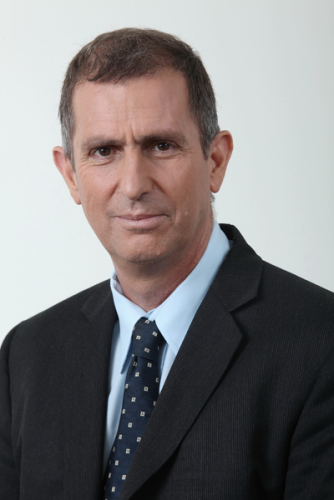 Hagay KatzChief Product and Marketing OfficerGilat Satellite NetworksHagay serves as Gilat's Chief Product and Marketing Officer. Prior to joining Gilat, Hagay served as VP Strategic Accounts - Cyber Security at Allot Communications (Nasdaq - ALLT) where he was instrumental in transforming Allot to be the market leader of network-based cyber-security as-a-service for communication Service Providers. Previously he served as Gilat's Head of the VSAT Line of Business. In this period Gilat became the world leader for LTE cellular and commercial In-Flight broadband Connectivity over satellite. Earlier in his career, Hagay held senior positions in Sales, Marketing and Product Management at Modu Mobile, PacketLight Networks, which he co-founded (Acquired) and Telstra Research Laboratories. Hagay started his career in an elite technology unit of the IDF and is the co-author of nine granted patents. Hagay holds a BSc and MSc in Electronic Engineering from Tel-Aviv University and an MBA from Monash University.
Hagay KatzChief Product and Marketing OfficerGilat Satellite NetworksHagay serves as Gilat's Chief Product and Marketing Officer. Prior to joining Gilat, Hagay served as VP Strategic Accounts - Cyber Security at Allot Communications (Nasdaq - ALLT) where he was instrumental in transforming Allot to be the market leader of network-based cyber-security as-a-service for communication Service Providers. Previously he served as Gilat's Head of the VSAT Line of Business. In this period Gilat became the world leader for LTE cellular and commercial In-Flight broadband Connectivity over satellite. Earlier in his career, Hagay held senior positions in Sales, Marketing and Product Management at Modu Mobile, PacketLight Networks, which he co-founded (Acquired) and Telstra Research Laboratories. Hagay started his career in an elite technology unit of the IDF and is the co-author of nine granted patents. Hagay holds a BSc and MSc in Electronic Engineering from Tel-Aviv University and an MBA from Monash University. Ms. Nikola KromerVP Product MarketingSTE iDirect, Inc.Nikola Kromer is the Vice President of Product Marketing at ST Engineering iDirect, where she is responsible for developing and implementing product portfolio positioning and guiding vertical marketing strategies across mobility, enterprise, and global government markets. She is also directly involved in effectively communicating iDirect's product technology and innovation strategies to customers and industry stakeholders. With over 25 years of industry experience, Kromer leads a diverse team of product marketers dedicated to understanding customer needs, collaborating with product management to launch innovative solutions, and delivering impactful marketing campaigns that connect with partners and customers. Before joining ST Engineering iDirect, Kromer spent more than a decade at Intelsat, where she worked in several Sales & Marketing roles, including Product Management of Intelsat's first managed VSAT services and various roles in Regional Channel and Account Management. She holds a dual-master degree in international management and business of the Ecole Superieure de Commerce in Grenoble, France and the Bremen University of Applied Science in Germany.
Ms. Nikola KromerVP Product MarketingSTE iDirect, Inc.Nikola Kromer is the Vice President of Product Marketing at ST Engineering iDirect, where she is responsible for developing and implementing product portfolio positioning and guiding vertical marketing strategies across mobility, enterprise, and global government markets. She is also directly involved in effectively communicating iDirect's product technology and innovation strategies to customers and industry stakeholders. With over 25 years of industry experience, Kromer leads a diverse team of product marketers dedicated to understanding customer needs, collaborating with product management to launch innovative solutions, and delivering impactful marketing campaigns that connect with partners and customers. Before joining ST Engineering iDirect, Kromer spent more than a decade at Intelsat, where she worked in several Sales & Marketing roles, including Product Management of Intelsat's first managed VSAT services and various roles in Regional Channel and Account Management. She holds a dual-master degree in international management and business of the Ecole Superieure de Commerce in Grenoble, France and the Bremen University of Applied Science in Germany.Sovereign SATCOM Networks: Maintaining Control of Your Data in Tumultuous Times
Governments around the world recognize the value that alliances deliver when it comes to satellite communications (SATCOM). However, today's geopolitical environment and rapidly evolving threats are causing allied nations to determine ways to maintain the sovereignty of their data and eliminate their dependence on information sharing by other countries. As such, they are implementing advanced communications services that deliver secure, resilient global connectivity and enhance warfighters' situational awareness and operational effectiveness. For example, the U.S. Space Force Space Systems Command's Protected Tactical SATCOM-Global (PTS-G) program is focused on providing military users around the world with resilient, agile communications through proliferated small satellites. These satellites operate in Geosynchronous orbit and offer anti-jamming capabilities to enhance the warfighters' situational awareness and operational effectiveness to meet emerging threats. This panel discussion will outline the steps that governments and commercial providers around the world are taking to build and maintain sovereign networks that provide the resilience and agility required to effectively operate. The panel will also discuss the collaboration between these nations and commercial industry to develop these capabilities.
Space Business Model 360: Repositioning in a Rapidly Changing Ecosystems
With such a massive amount of change - new players, new technologies, new markets, new scale - many space players have spent the last few years pivoting and adjusting old business models that once worked and continue to do so. This session will do a 360 tour on recent changes and where we think business models will go as ever more transformation occurs. The session will also explore the role of boards and investors in this big reconfiguration.
 Moderator
Antoine GrenierPartnerAnalysys Mason
Moderator
Antoine GrenierPartnerAnalysys MasonDigital Twin-Enabled Design of 5G & 6G Satellite Links
Integrating non-terrestrial networks into 5G/6G demands rigorous cross-domain modelling. This presentation shares Keysight's work in creating a digital-twin platform, SystemVue, where RF impairments, phased arrays and realistic space channels co-simulate with baseband algorithms. Engineers can link-budget, evaluate EVM/SINR and iterate hardware-in-the-loop before fabrication. Use cases span NB-IoT, direct-to-device broadband and AI-assisted beamforming. Advanced tools--digital predistortion, phased-array calibration, predictive analytics--streamline compliance with 3GPP and emerging 6G specs. SystemVue's links to EM solvers and cloud HPC scale simulations to full constellations efficiently, delivering robust, energy-efficient and future-proof satellite systems.
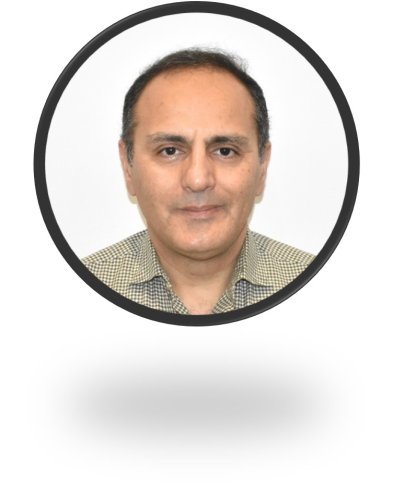 Sassan AhmadiProduct ManagerKeysight TechnologiesDr. Sassan Ahmadi is a leading expert in wireless communications with over 35 years of experience driving innovation across 3G, 4G, 5G, and emerging 6G technologies. He has held senior leadership and technical roles at major companies including Keysight Technologies, AMD/Xilinx, Apple, Intel, and Nokia, where he has contributed to advancements in Open RAN, private 5G, cloud-native RAN architecture, and RF system design. He is the author of three widely cited books on wireless systems and holds more than 100 patents, many of which are essential to 4G and 5G standards. He is a former lecturer at Stanford University and a recognized voice in the development of next-generation wireless networks.
Sassan AhmadiProduct ManagerKeysight TechnologiesDr. Sassan Ahmadi is a leading expert in wireless communications with over 35 years of experience driving innovation across 3G, 4G, 5G, and emerging 6G technologies. He has held senior leadership and technical roles at major companies including Keysight Technologies, AMD/Xilinx, Apple, Intel, and Nokia, where he has contributed to advancements in Open RAN, private 5G, cloud-native RAN architecture, and RF system design. He is the author of three widely cited books on wireless systems and holds more than 100 patents, many of which are essential to 4G and 5G standards. He is a former lecturer at Stanford University and a recognized voice in the development of next-generation wireless networks. -
Accelerating Ecosystem Innovation Through Open-Source Network Orchestration APIs
Aalyria has developed publicly available, open-source, and production-validated APIs for network orchestration that every player in the ecosystem can leverage and contribute to. Our goal is to create a developer ecosystem around this open-source repository, and to that end, Aalyria has contributed these APIs to the Outernet Council, a neutral non-profit organization, which manages the project's open governance structure (outernetcouncil.org). This presentation will explain the technical foundations of these APIs, demonstrate how they solve orchestration challenges across the ecosystem, and invite participation from everyone in the industry. Satellite operators can use these APIs to orchestrate first-party assets with out-of-the-box support for next-generation architectures, like digital ground segments, highly configurable software-defined payloads, and free-space optical link modeling. Equipment vendors can build a single integration to these APIs to make their hardware instantly deployable in any commercial, government, or hybrid network. Mobile and satellite network operators can bring the vision of 5G/6G NTN to life by dynamically enacting seamless handovers across the terrestrial and non-terrestrial network through these APIs.
 Nihar AgrawalSoftware EngineerAalyriaFormer Google software engineer, Payload Pioneers award recipient (2024)
Nihar AgrawalSoftware EngineerAalyriaFormer Google software engineer, Payload Pioneers award recipient (2024) -
Room: Unveiled Theater, Exhibit Hall
Partner Session sponsored by Radeus Labs, Inc.
-
Multi-Layer ISR from Space: Fusing Optical Imagery, RF, and SAR
Combining unique remote sensing datasets from orbit delivers a more complete operational picture for defense, intelligence, and civil agency missions. This discussion will explore how fusing data from different space-based phenomenologies improves operations and unlocks new insights by using optical imagery, RF, and SAR data together. Produced in Partnership with SIA.
Battle of the Big Rockets: Competitive Heavy-Lift Launch Services
It's no secret why today's launch service sector is firing off rockets at breakneck speed - mega-constellations for global connectivity and increased government activity in space are driving demand. At the same time, customer needs are also evolving. Costs are also rising due to a number of factors, some outside of the launch sector's control. In this session, speakers from launch services building and flying some of the world's biggest rockets will outline their approach to remaining cost-effective and,flexible, the importance of reusability in reducing risk, and future offerings to attract new customers. The panel will also address the viability of lunar and Mars missions, which require massive investments in manufacturing and in-space infrastructure. Will these investments pay off? Join us for this lively launch-centric debate!
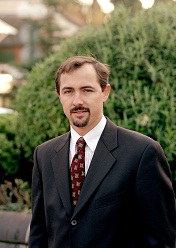 Moderator
Mr. David HartshornHartshorn ConsultingDavid Hartshorn has more than 35 years of experience in the satellite communications industry. He most recently served as CEO of Geeks Without Frontiers, a non-profit technology-neutral organization that applies financially sustainable innovation to solve connectivity challenges worldwide.
Moderator
Mr. David HartshornHartshorn ConsultingDavid Hartshorn has more than 35 years of experience in the satellite communications industry. He most recently served as CEO of Geeks Without Frontiers, a non-profit technology-neutral organization that applies financially sustainable innovation to solve connectivity challenges worldwide.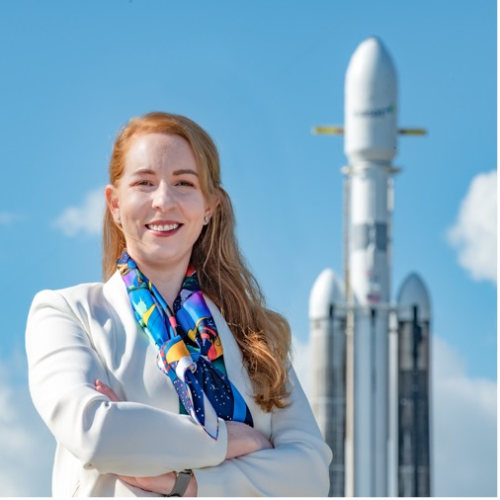 Stephanie BednarekVP Commercial SalesSpaceXStephanie Bednarek is the Vice President of Commercial Sales at SpaceX. She oversees the company's global relationships with launch customers and satellite manufacturers. She manages a team of sales directors and account managers and is responsible for domestic and international commercial space launch business. Previously, Stephanie led commercial launch sales in the Americas and closed over $2B in new business. Stephanie also worked as the Government Affairs Manager, and was responsible for United States government executive branch, legislative, state, and federal agency affairs related to SpaceX's civil space activities including strategy, policy development, and research. Prior to starting at SpaceX in 2008, Stephanie held positions at the George Washington University Space Policy Institute, Space Foundation, Space Studies Board at the National Research Council, Aerospace Industries Association, and Orbital Sciences. Stephanie is on the board of the of Space and Satellite Professionals International (SSPI) and a mentor for the Brooke Owens Fellowship Program. Previously, Stephanie served on the Board of the Mid-Atlantic Chapter of SSPI, American Astronautical Society, National Space Society, and the Economic Development Commission of Florida's Space Coast. Her other volunteer positions include serving as the Public Policy Chair of the AIAA National Capital Section, the Vice President of Programs for Women in Aerospace, and the Commercial Space Chair of the Aerospace Industries Association.
Stephanie BednarekVP Commercial SalesSpaceXStephanie Bednarek is the Vice President of Commercial Sales at SpaceX. She oversees the company's global relationships with launch customers and satellite manufacturers. She manages a team of sales directors and account managers and is responsible for domestic and international commercial space launch business. Previously, Stephanie led commercial launch sales in the Americas and closed over $2B in new business. Stephanie also worked as the Government Affairs Manager, and was responsible for United States government executive branch, legislative, state, and federal agency affairs related to SpaceX's civil space activities including strategy, policy development, and research. Prior to starting at SpaceX in 2008, Stephanie held positions at the George Washington University Space Policy Institute, Space Foundation, Space Studies Board at the National Research Council, Aerospace Industries Association, and Orbital Sciences. Stephanie is on the board of the of Space and Satellite Professionals International (SSPI) and a mentor for the Brooke Owens Fellowship Program. Previously, Stephanie served on the Board of the Mid-Atlantic Chapter of SSPI, American Astronautical Society, National Space Society, and the Economic Development Commission of Florida's Space Coast. Her other volunteer positions include serving as the Public Policy Chair of the AIAA National Capital Section, the Vice President of Programs for Women in Aerospace, and the Commercial Space Chair of the Aerospace Industries Association.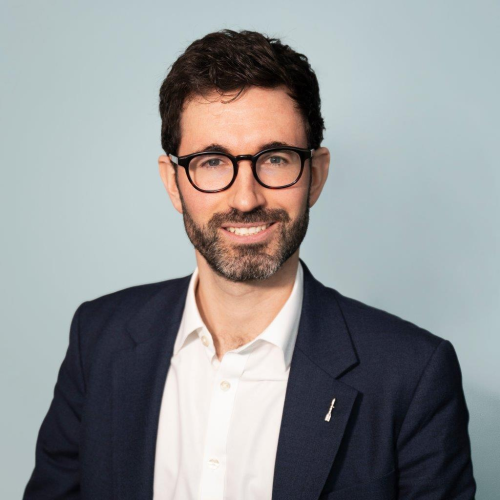 David CavaillolèsCEOArianespaceDavid Cavaillolès Arianespace Chief Executive Officer ArianeGroup Executive Committee Member David Cavaillolès is the Chief Executive Officer of Arianespace. He is also a member of the Executive Committee of ArianeGroup, Arianespace's parent company. David Cavaillolès began his career in the French public sector holding positions of responsibility in the finance, innovation and industry sectors. He was appointed ministerial advisor for French space policy in 2017, working notably on securing the Ariane programme and preparing the future of space launchers in Europe. He then joined Capgemini in 2019 where he held various management positions contributing to the company's business development, with a specific focus on technology. He is a graduate of prestigious French higher education institutes Ecole Polytechnique and ENSAE Paris.
David CavaillolèsCEOArianespaceDavid Cavaillolès Arianespace Chief Executive Officer ArianeGroup Executive Committee Member David Cavaillolès is the Chief Executive Officer of Arianespace. He is also a member of the Executive Committee of ArianeGroup, Arianespace's parent company. David Cavaillolès began his career in the French public sector holding positions of responsibility in the finance, innovation and industry sectors. He was appointed ministerial advisor for French space policy in 2017, working notably on securing the Ariane programme and preparing the future of space launchers in Europe. He then joined Capgemini in 2019 where he held various management positions contributing to the company's business development, with a specific focus on technology. He is a graduate of prestigious French higher education institutes Ecole Polytechnique and ENSAE Paris. Laura MaginnisVice President, New GlennBlue Origin
Laura MaginnisVice President, New GlennBlue Origin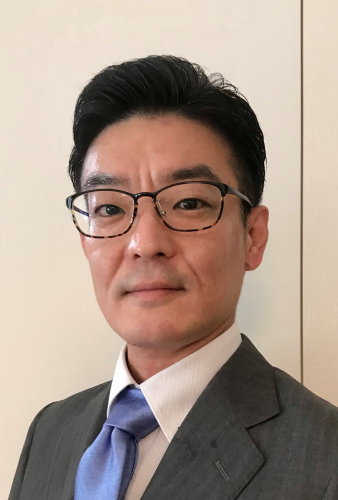 Nobuyuki ShiinaDeputy General ManagerMitsubishi Heavy Industries, Ltd.Nobuyuki Shiina is the Deputy General Manager at Busness Development Department, Space Systems Division at Mitsubishi Heavy Industries, Ltd. (MHI). He is responsible for sales & marketing for the H3 Launch Service. In addition to the launch services, his role also covers business development for all of MHI's space products to overseas customer. From 2002 to 2009, Nobuyuki Shiina worked at Hitachi High-Technologies, Ltd. in a sales & marketing team for semiconductors and related electronics for consumer products. Since 2009, he has been leading the sales & marketing of MHI Launch Services at Space Systems Division in MHI. Shiina holds a Master of Science degree from Tohoku University.
Nobuyuki ShiinaDeputy General ManagerMitsubishi Heavy Industries, Ltd.Nobuyuki Shiina is the Deputy General Manager at Busness Development Department, Space Systems Division at Mitsubishi Heavy Industries, Ltd. (MHI). He is responsible for sales & marketing for the H3 Launch Service. In addition to the launch services, his role also covers business development for all of MHI's space products to overseas customer. From 2002 to 2009, Nobuyuki Shiina worked at Hitachi High-Technologies, Ltd. in a sales & marketing team for semiconductors and related electronics for consumer products. Since 2009, he has been leading the sales & marketing of MHI Launch Services at Space Systems Division in MHI. Shiina holds a Master of Science degree from Tohoku University.Digitized IF Transport Frameworks for Software-Defined Infrastructures
Digital Intermediate Frequency (Digital IF) is transforming satellite communications (SATCOM) and RF systems by replacing traditional analog signal paths with digitized signals that can be transmitted over standard IP networks. By moving the analog-to-digital conversion closer to the antenna, Digital IF allows signals to be packetized and routed across both local and wide-area networks using commercial off-the-shelf (COTS) Ethernet switches and fiber optics--eliminating the need for bulky analog cabling and costly RF switch matrices. This modernized architecture significantly reduces infrastructure complexity and cost, while also enhancing flexibility, scalability, and modularity. However, this innovation introduces a new challenge: massive data volumes. A single wideband signal (e.g., 500 MHz bandwidth) digitized at high resolution can exceed 30 Gbps, and many systems process multiple such channels simultaneously. Transmitting this data reliably across long distances places intense pressure on conventional IP networks, which were not designed for high-throughput, real-time signal transport. Compounding the challenge is the need for absolute data integrity. This presentation will unveil a next-generation software-defined data transport solution designed specifically for Digital IF environments. This project, funded through multiple DoD SBIR programs, has demonstrated significant performance advantages in live testing. By enabling secure, fast, and reliable digital IF transport over standard IP networks, this technology unlocks the full potential of digitized SATCOM systems--delivering enhanced performance, reduced costs, and increased agility for both defense and commercial applications. It represents a critical enabler for modern, software-driven RF systems operating at scale in today's data-intensive, latency-sensitive environments.
 Jing SongCo-Founder, Managing DirectorGenesis CodesJing Song is a technology entrepreneur and co-founder with extensive leadership experience across multiple technology companies. He currently leads Genesis Codes, advancing breakthrough data transmission technology that delivers 10X faster speed, 10% latency, and enhanced security and resiliency. As Principal Investigator on several Small Business Innovation Research (SBIR) projects, he drives cutting-edge innovation supported by government funding. Earlier in his career, Jing served as an executive at Xerox, where he oversaw the development of more than 10 technology products and solutions that generated over $2 billion in cumulative sales. His expertise spans business leadership, technology strategy, and product delivery. Jing holds a Master's degree in Electrical & Computer Engineering and an MBA from the University of Rochester.
Jing SongCo-Founder, Managing DirectorGenesis CodesJing Song is a technology entrepreneur and co-founder with extensive leadership experience across multiple technology companies. He currently leads Genesis Codes, advancing breakthrough data transmission technology that delivers 10X faster speed, 10% latency, and enhanced security and resiliency. As Principal Investigator on several Small Business Innovation Research (SBIR) projects, he drives cutting-edge innovation supported by government funding. Earlier in his career, Jing served as an executive at Xerox, where he oversaw the development of more than 10 technology products and solutions that generated over $2 billion in cumulative sales. His expertise spans business leadership, technology strategy, and product delivery. Jing holds a Master's degree in Electrical & Computer Engineering and an MBA from the University of Rochester. -
Room: Unveiled Theater, Exhibit Hall
Partner Session sponsored by Kratos
-
Electromagnetic Spectrum Operations in Space, Fighting Through Congestion and Interference
As space operations fight for spectrum, EMS has become a strategic tool. Interference detection, attribution and spectrum agility are critical capabilities for mission success. Space-based RF sensing expands electromagnetic awareness beyond the reach of terrestrial systems, ensuring decision advantage across contested domains. This discussion will highlight the role of edge processing - analyzing and acting on RF data directly at the point of collection to accelerate the decision loop and support strategic missions.
Agentic AI for Satellite Communications
The Artificial Intelligence (AI) agent market is projected to reach almost $50B by 2030. However, many satellite companies are wondering how to apply agentic AI to increase efficiency and solve problems in the space domain. This presentation outlines how AI can reason, plan and complete tasks in Geospatial Data Analysis, Space Manufacturing, Aerospace, and Satellite Communications. It features two practical SatCom AI demonstrations: a multi-agent system for link-budget and capacity planning, as well as an RF interference detection solution using multi-modal generative AI. Attendees will learn how AI technologies can address key challenges in the satellite industry, enhancing efficiency and innovation in space-based communications.
 Mr Alan CampbellPrincipal Space Specialist Solutions ArchitectAmazon Web ServicesAlan Campbell is a Principal Space Specialist Solutions Architect at Amazon Web Services (AWS). His focus is on empowering customers with innovative new Cloud-based scalable solutions for the Aerospace & Satellite segment. Alan specializes in Data Analytics and AI / ML enabling key insights in Satellite Communications, Earth Observation, and IoT platforms. Prior to joining AWS, Alan directed the Panasonic Avionics Satellite Engineering team, delivering premium QoE to Inflight passengers. He led a major Cloud & Data migration of 100+ applications resulting in $50M cost savings and SLA improvements. Alan's experience ranges from a Fellowship award at CERN, the European Organization for Nuclear Research, to authoring a book on Embedded Systems at Texas Instruments. He is a Founding Member of the Satcom WAVE consortium, and holds multiple Cloud certifications, satellite credentials and patents.
Mr Alan CampbellPrincipal Space Specialist Solutions ArchitectAmazon Web ServicesAlan Campbell is a Principal Space Specialist Solutions Architect at Amazon Web Services (AWS). His focus is on empowering customers with innovative new Cloud-based scalable solutions for the Aerospace & Satellite segment. Alan specializes in Data Analytics and AI / ML enabling key insights in Satellite Communications, Earth Observation, and IoT platforms. Prior to joining AWS, Alan directed the Panasonic Avionics Satellite Engineering team, delivering premium QoE to Inflight passengers. He led a major Cloud & Data migration of 100+ applications resulting in $50M cost savings and SLA improvements. Alan's experience ranges from a Fellowship award at CERN, the European Organization for Nuclear Research, to authoring a book on Embedded Systems at Texas Instruments. He is a Founding Member of the Satcom WAVE consortium, and holds multiple Cloud certifications, satellite credentials and patents.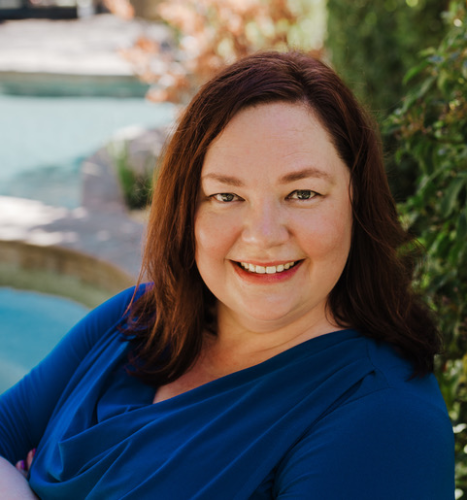 Kathy O'DonnellLeader of Space Solutions ArchitectureAmazon Web ServicesKathy O'Donnell is a Principal Solutions Architect at Amazon Web Services (AWS), helping companies in the Aerospace & Satellite industry develop innovative cloud computing solutions. She leads AWS's Generative AI for Space initiative, enabling organizations to harness the latest artificial intelligence and machine learning technologies in their space operations. Holding advanced degrees in Mathematics (BS, MA) and multiple cloud certifications, Kathy combines strong technical expertise in statistical analysis, ML, and AI with extensive experience across the defense, finance, and space sectors.
Kathy O'DonnellLeader of Space Solutions ArchitectureAmazon Web ServicesKathy O'Donnell is a Principal Solutions Architect at Amazon Web Services (AWS), helping companies in the Aerospace & Satellite industry develop innovative cloud computing solutions. She leads AWS's Generative AI for Space initiative, enabling organizations to harness the latest artificial intelligence and machine learning technologies in their space operations. Holding advanced degrees in Mathematics (BS, MA) and multiple cloud certifications, Kathy combines strong technical expertise in statistical analysis, ML, and AI with extensive experience across the defense, finance, and space sectors.VIP Session: Can Satellite D2D Move Beyond Niche Basic Messaging to Mainstream
The Satellite D2D market is making giant strides with D2D service available in 45+ countries with over 57 MNOs having launched or planning to launch D2D services imminently. Mobile Network Operators are leveraging D2D to differentiate their offerings, improve customer retention, attract subscribers from competitors and unlock new revenue streams. However, critical challenges remain to move beyond today's basic emergency and messaging services, and enable voice and data at scale. This panel will explore the key issues in scaling Satellite D2D from niche to mainstream. Topics include: • Cultivating the D2D ecosystem from chipsets and smartphones to infrastructure, MNOs and Apps • Access to spectrum, interference mitigation and spectrum sharing • Co-operation/competition with MNOs • Scaling supply and capabilities to deliver a seamless internet experience • Understanding subscriber interest and willingness to pay for satellite D2D services • Business models to optimize value capture • Standards evolution and the road to 6G • Enterprise, Government and Defense use cases This session is open only to premium pass holders and will be closed to press. Chatham House rules will be in place.
 Jeff GiardVice President of Strategic PartnershipsT-Mobile
Jeff GiardVice President of Strategic PartnershipsT-Mobile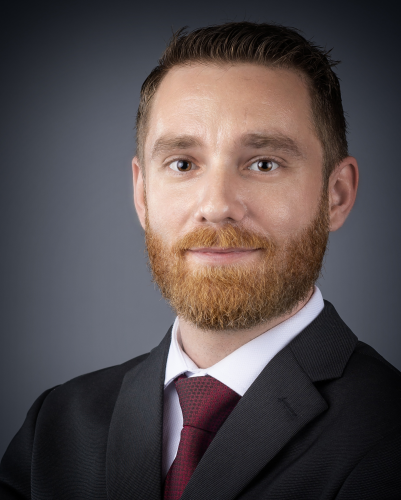 Lluc PalermResearch DirectorAnalysys Mason LtdMr. Palerm is Research Director at Analysys Mason, a global technology, media and telecoms consulting firm. He leads a team of analysts helping clients to shape, make and act on the decisions that steer progress in the Satellite Communications industry. Mr. Palerm supervises multiple research programs including: - Satellite Strategies for Telcos (D2D, 5G NTN, Broadband, IoT) - Satellite Capacity (Supply and Demand, LEO constellations, multi-orbit strategies) - Satellite Mobility (Aero, Maritime, Connected Vehicles) - Government and Military (MILSATCOM, COMSATCOM, PNT, Sovereign networks) - Ground Segment (Terminals, FPA, Virtualization, AI and Networking) He also participates and leads major consulting engagements related to market validation, Due Diligence, Satellite-Telco integration, opportunity mapping, etc. Mr. Palerm has been part of the team since 2015, playing a critical role in the transition after Analysys Mason acquired NSR. Prior to joining NSR, Mr. Palerm worked in technical and business roles for a startup. He worked in the mission analysis for the company's microsat launcher project and leaded the development of a rocket engine prototype successfully tested. He also contributed to the project's business plan with market research and financial assessment. Lluc undertook fund raising efforts and built the relation with customers. Graduated as an Aerospace Engineer from Universitat Politècnica de Catalunya (2011), he collaborated with one of its research centers developing CFD codes (CTTC). Afterwards, he received a Master's in Management from ESADE Business School (2012) specializing in Innovation and Entrepreneurship.
Lluc PalermResearch DirectorAnalysys Mason LtdMr. Palerm is Research Director at Analysys Mason, a global technology, media and telecoms consulting firm. He leads a team of analysts helping clients to shape, make and act on the decisions that steer progress in the Satellite Communications industry. Mr. Palerm supervises multiple research programs including: - Satellite Strategies for Telcos (D2D, 5G NTN, Broadband, IoT) - Satellite Capacity (Supply and Demand, LEO constellations, multi-orbit strategies) - Satellite Mobility (Aero, Maritime, Connected Vehicles) - Government and Military (MILSATCOM, COMSATCOM, PNT, Sovereign networks) - Ground Segment (Terminals, FPA, Virtualization, AI and Networking) He also participates and leads major consulting engagements related to market validation, Due Diligence, Satellite-Telco integration, opportunity mapping, etc. Mr. Palerm has been part of the team since 2015, playing a critical role in the transition after Analysys Mason acquired NSR. Prior to joining NSR, Mr. Palerm worked in technical and business roles for a startup. He worked in the mission analysis for the company's microsat launcher project and leaded the development of a rocket engine prototype successfully tested. He also contributed to the project's business plan with market research and financial assessment. Lluc undertook fund raising efforts and built the relation with customers. Graduated as an Aerospace Engineer from Universitat Politècnica de Catalunya (2011), he collaborated with one of its research centers developing CFD codes (CTTC). Afterwards, he received a Master's in Management from ESADE Business School (2012) specializing in Innovation and Entrepreneurship. -
Reshapable Reflectors to Enable Resilient Multi-Orbit SATCOM
Mithril Technologies is excited to present on our RF reflector steering and shaping capabilities, which will permit new satcom capabilities for higher orbits. We will be presenting on ongoing work which is building on our IEEE Phased Array paper from last year on using our reshapable reflectors for adaptive nulling of signal jammers. The presentation will include a video demonstration of how we have been able to demonstrate this capability in a lab environment and a rendering of how this will be used on-orbit for jamming-resilient satcom systems. This represents a next-generation RF situational awareness & satcom capability that can be used for robust multi-orbit satcom architectures, considering our ability to focus & steer our beam for dynamic switching between space-space and space-ground as well as null out adversarial jammers.
 Bruce HechtRF Technology LeadMithril Technologies, Inc.
Bruce HechtRF Technology LeadMithril Technologies, Inc. Scarlett KollerCEOMithril Technologies, Inc.After five years in systems integration and test at SpaceX and JPL, Scarlett returned to MIT to arm herself with an MS in Aerospace Engineering and an MBA from MIT Sloan before co-founding Mithril Technologies. Mithril is now developing and commercializing a new type of satellite antenna to expand the capabilities of satellites in GEO for a wide range of industry verticals in defense, communications and earth observation.
Scarlett KollerCEOMithril Technologies, Inc.After five years in systems integration and test at SpaceX and JPL, Scarlett returned to MIT to arm herself with an MS in Aerospace Engineering and an MBA from MIT Sloan before co-founding Mithril Technologies. Mithril is now developing and commercializing a new type of satellite antenna to expand the capabilities of satellites in GEO for a wide range of industry verticals in defense, communications and earth observation. -
Room: Unveiled Theater, Exhibit Hall
Partner Session sponsored by JSAT
Wednesday, March 25
-
Room: Ballroom A/B
Wednesday Opening General Session Keynote
SATShow Week invites all attendees to join us for our Wednesday Opening General session program, which kicks off with our opening keynote speaker. Speaker details will be announced soon!
-
Room: Ballroom A/B
The Space Economy: Navigating Market Volatility in Fair or Foul Weather
We invite all SATShow Week attendees to join us for our Wednesday Opening General Session - a detailed and interactive exploration of the state of the space economy and how geo-economic and technical trends will influence the satellite industry during a time of heightened market volatility. Moderators Karen Jones and Brian Weeden from Aerospace Corp. will lead the discussion with panelists from government, commercial space, investment, and advisory sectors. Speakers will be asked weigh in on a range of trends and events, including: the growing demand for sovereign space systems, impact of tariffs, industry consolidation, expanding direct to device services, competition for spectrum, and more. Panelists and audience members will vote on whether selected key trends add or detract from the space sector's current growth trajectory. Join us for a lively and interactive plenary session!
 Moderator
Karen JonesSr. Space Policy Analyst and Space EconomistCenter for Space Policy and StrategyKaren L. Jones is a senior space policy analyst and economist in the Center for Space Policy and Strategy at The Aerospace Corporation. In this role she analyzes space market trends and technologies that impact government missions and commercial markets. She has published numerous papers addressing: game changing technologies, direct-to-device satellite connectivity, disruptive innovation, public private partnerships, blockchain, undersea cables, wireless technologies and space based remote sensing strategies to address climate change and environmental accountability. Karen earned a Bachelor of Science degree in geology from Louisiana State University and a Master of Business Administration from Yale University.
Moderator
Karen JonesSr. Space Policy Analyst and Space EconomistCenter for Space Policy and StrategyKaren L. Jones is a senior space policy analyst and economist in the Center for Space Policy and Strategy at The Aerospace Corporation. In this role she analyzes space market trends and technologies that impact government missions and commercial markets. She has published numerous papers addressing: game changing technologies, direct-to-device satellite connectivity, disruptive innovation, public private partnerships, blockchain, undersea cables, wireless technologies and space based remote sensing strategies to address climate change and environmental accountability. Karen earned a Bachelor of Science degree in geology from Louisiana State University and a Master of Business Administration from Yale University. Moderator
Dr. Brian WeedenDirector of Civil and Commercial PolicyThe Aerospace CorporationDr. Brian Weeden is the Director of Civil and Commercial policy for the Center for Space Policy and Strategy at The Aerospace Corporation, where he serves as a senior analyst and team leader on topics that cut across policy, technology, and economics. A highly respected and connected professional with more than two decades of experience in space operations and space policy analysis, Weeden specializes in the integration and advancement of technical, policy, legal, security, commercial, and international aspects of space activities. Weeden is a former member and chair of the World Economic Forum's Council on the Future of Space Technologies, a former member of the Advisory Committee on Commercial Remote Sensing (ACCRES) to the National Oceanic and Atmospheric Administration (NOAA), and the former executive director of the Consortium for Execution of Rendezvous and Servicing Operations (CONFERS). Prior to joining Aerospace, Weeden was the chief program officer for Secure World Foundation, where he directed strategic planning for future-year projects to meet the Foundation's goals and objectives and conducted research on space sustainability issues. Weeden also served nine years on active duty as an officer in the United States Air Force in space and intercontinental ballistic missile (ICBM) operations. Weeden's research and analysis have been featured in The New York Times, The Washington Post, National Public Radio, USA Today, The BBC, Fox News, China Radio International, The Economist, the 54th Annual Meeting of The World Economic Forum in Davos-Klosters, Switzerland, academic journals, presentations to the United Nations, and testimony before the U.S. Congress. Weeden earned a bachelor's degree in electrical engineering from Clarkson University, a master's degree in space studies from the University of North Dakota, and a doctorate in public policy and administration from The George Washington University in the field of science and technology policy.
Moderator
Dr. Brian WeedenDirector of Civil and Commercial PolicyThe Aerospace CorporationDr. Brian Weeden is the Director of Civil and Commercial policy for the Center for Space Policy and Strategy at The Aerospace Corporation, where he serves as a senior analyst and team leader on topics that cut across policy, technology, and economics. A highly respected and connected professional with more than two decades of experience in space operations and space policy analysis, Weeden specializes in the integration and advancement of technical, policy, legal, security, commercial, and international aspects of space activities. Weeden is a former member and chair of the World Economic Forum's Council on the Future of Space Technologies, a former member of the Advisory Committee on Commercial Remote Sensing (ACCRES) to the National Oceanic and Atmospheric Administration (NOAA), and the former executive director of the Consortium for Execution of Rendezvous and Servicing Operations (CONFERS). Prior to joining Aerospace, Weeden was the chief program officer for Secure World Foundation, where he directed strategic planning for future-year projects to meet the Foundation's goals and objectives and conducted research on space sustainability issues. Weeden also served nine years on active duty as an officer in the United States Air Force in space and intercontinental ballistic missile (ICBM) operations. Weeden's research and analysis have been featured in The New York Times, The Washington Post, National Public Radio, USA Today, The BBC, Fox News, China Radio International, The Economist, the 54th Annual Meeting of The World Economic Forum in Davos-Klosters, Switzerland, academic journals, presentations to the United Nations, and testimony before the U.S. Congress. Weeden earned a bachelor's degree in electrical engineering from Clarkson University, a master's degree in space studies from the University of North Dakota, and a doctorate in public policy and administration from The George Washington University in the field of science and technology policy. -
Room: Unveiled Theater, Exhibit Hall
Partner Session sponsored by Kratos
-
Room: Orbit Theater
In-Flight Connectivity: New Developments in Interoperability, Performance, and Cost Control
Executives from the world of in-flight connectivity and mobile services share how they are adapting to new airline business models, the rapid rise of multi-orbit services, interoperability challenges, and increasing competition to deliver lightning-fast connectivity to passengers. The discussion will include an exploration of capacity supply and keeping costs low for airlines and their customers.
 Mike DeMarcoPresident, Aero VerticalSESMichael DeMarco is SES's President Aero Vertical and drives commercial activities in SES's dynamic aviation connectivity vertical. Before this, Michael was with Intelsat for about 25 years, beginning with PanAmSat in 2000 as Business Manager and assuming successive senior leadership positions in the following years. Prior to that, he was at Bresnan Communications, a US cable television operator. As a senior leader with deep domain expertise in the telecommunications and satellite industry, he is driving customer-centric growth and commercial strategy, supporting long-term value creation across evolving market landscapes. Michael holds a BS and MBA in Finance from Fairfield University in Connecticut and he has held several board positions within the Satellite Communications industry.
Mike DeMarcoPresident, Aero VerticalSESMichael DeMarco is SES's President Aero Vertical and drives commercial activities in SES's dynamic aviation connectivity vertical. Before this, Michael was with Intelsat for about 25 years, beginning with PanAmSat in 2000 as Business Manager and assuming successive senior leadership positions in the following years. Prior to that, he was at Bresnan Communications, a US cable television operator. As a senior leader with deep domain expertise in the telecommunications and satellite industry, he is driving customer-centric growth and commercial strategy, supporting long-term value creation across evolving market landscapes. Michael holds a BS and MBA in Finance from Fairfield University in Connecticut and he has held several board positions within the Satellite Communications industry.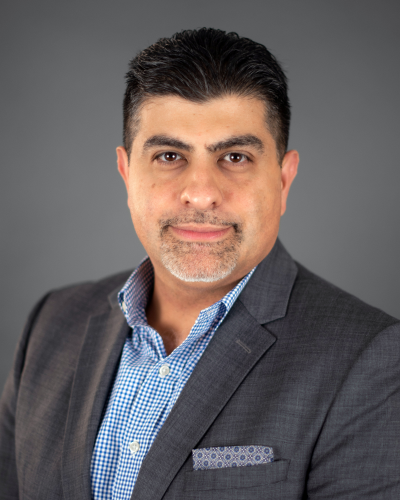 Reza RasoulianSenior Vice President, Hughes AviationHughesReza Rasoulian, vice president, broadband satellite services at Hughes Network Systems, LLC (HUGHES), leads the company's strategic planning and business development related to aeronautical and maritime satellite mobility services. Prior to joining Hughes in his current position, Mr. Rasoulian was vice president, global connectivity at Carnival Corporation. Before Carnival, Mr. Rasoulian worked at Comtech EF Data as senior vice president of mobility systems. In his current role, Mr. Rasoulian rejoins Hughes, where he previously held positions of increasing responsibility, from his early years in technical and management roles in global network engineering, mobile satellite systems, and spacecraft and network design and implementation.
Reza RasoulianSenior Vice President, Hughes AviationHughesReza Rasoulian, vice president, broadband satellite services at Hughes Network Systems, LLC (HUGHES), leads the company's strategic planning and business development related to aeronautical and maritime satellite mobility services. Prior to joining Hughes in his current position, Mr. Rasoulian was vice president, global connectivity at Carnival Corporation. Before Carnival, Mr. Rasoulian worked at Comtech EF Data as senior vice president of mobility systems. In his current role, Mr. Rasoulian rejoins Hughes, where he previously held positions of increasing responsibility, from his early years in technical and management roles in global network engineering, mobile satellite systems, and spacecraft and network design and implementation. Tracy TrentPresident, Gilat Stellar BluGilat Stellar BluTracy Trent serves as President of Gilat Stellar Blu. Leveraging decades of leadership experience in technology, innovation, and business growth, he was previously the CEO of Stellar Blu Solutions, where he successfully guided the company until its acquisition by Gilat Satellite Networks. Tracy has held numerous senior leadership roles throughout his career, including President of GDC Advanced Technology, Senior Vice President at GDC Technics, and CEO of Proximetry. He also served as President of CalAmp and Vytek, and CEO of Stellcom. Earlier in his career, Tracy held senior positions at SAIC and Science Application International Corp., contributing to strategic business development and operational excellence. Tracy began his career in sales and regional business development with roles at Sun Microsystems and Digital Equipment. He holds a degree from the MIT Sloan School of Management.
Tracy TrentPresident, Gilat Stellar BluGilat Stellar BluTracy Trent serves as President of Gilat Stellar Blu. Leveraging decades of leadership experience in technology, innovation, and business growth, he was previously the CEO of Stellar Blu Solutions, where he successfully guided the company until its acquisition by Gilat Satellite Networks. Tracy has held numerous senior leadership roles throughout his career, including President of GDC Advanced Technology, Senior Vice President at GDC Technics, and CEO of Proximetry. He also served as President of CalAmp and Vytek, and CEO of Stellcom. Earlier in his career, Tracy held senior positions at SAIC and Science Application International Corp., contributing to strategic business development and operational excellence. Tracy began his career in sales and regional business development with roles at Sun Microsystems and Digital Equipment. He holds a degree from the MIT Sloan School of Management. Mr John WadeVice President of Connectivity ServicesPanasonic Avionics CorporationAs Vice President of Connectivity Services at Panasonic Avionics Corporation, John Wade is responsible for the overall strategy, performance, and day-to-day operations of the Connectivity business unit. In his role, he serves as a key member of Panasonic Avionics' executive team and oversees a team of network capacity engineers and satellite experts, while working closely with sales, engineering, and product management to drive revenue and support airlines worldwide. He also has full P&L responsibility and the company's efforts in product strategy, investments, pricing, and customer commitments for Panasonic Avionics' global in-flight connectivity service. Prior to joining Panasonic, John served as the President of Intelsat Commercial Aviation, where he was responsible for all operational and commercial aspects of the division as well as it's P&L performance. While at Intelsat, John led the integration of the Gogo Commercial Aviation into Intelsat. Before Intelsat, John served as the President of Commercial Aviation at Gogo, where he was responsible for all aspects of Gogo's Commercial Aviation division including full P&L responsibility for all commercial and operational aspects of the division, sales and marketing, engineering and IT, program management, product management, manufacturing and production, network operations, finance, quality, customer support and product support. John was the Valedictorian at the University of Brighton where he received a Bachelor of Engineering, Electrical Engineering. He also earned a Finance and Accounting degree from Stanford University.
Mr John WadeVice President of Connectivity ServicesPanasonic Avionics CorporationAs Vice President of Connectivity Services at Panasonic Avionics Corporation, John Wade is responsible for the overall strategy, performance, and day-to-day operations of the Connectivity business unit. In his role, he serves as a key member of Panasonic Avionics' executive team and oversees a team of network capacity engineers and satellite experts, while working closely with sales, engineering, and product management to drive revenue and support airlines worldwide. He also has full P&L responsibility and the company's efforts in product strategy, investments, pricing, and customer commitments for Panasonic Avionics' global in-flight connectivity service. Prior to joining Panasonic, John served as the President of Intelsat Commercial Aviation, where he was responsible for all operational and commercial aspects of the division as well as it's P&L performance. While at Intelsat, John led the integration of the Gogo Commercial Aviation into Intelsat. Before Intelsat, John served as the President of Commercial Aviation at Gogo, where he was responsible for all aspects of Gogo's Commercial Aviation division including full P&L responsibility for all commercial and operational aspects of the division, sales and marketing, engineering and IT, program management, product management, manufacturing and production, network operations, finance, quality, customer support and product support. John was the Valedictorian at the University of Brighton where he received a Bachelor of Engineering, Electrical Engineering. He also earned a Finance and Accounting degree from Stanford University.How D2D Technology Can Enable New Use Cases for USG
This session will examine how Direct-to-Device (D2D) satellite technology can enable transformative capabilities for critical U.S. Government operations. Panelists will explore how delivering space-based broadband directly to devices creates new operational possibilities -- including tactical communications for military personnel in remote outposts and enhanced maritime domain awareness. Panelists will also explore increasing government interest, demonstrating clear demand for resilient and secure satellite connectivity solutions. Produced in partnership with SIA.
What the Raptor Engine Taught Me (That the Industry Still Hasn't Learned)
U.S. Air Force veteran Jeff Thornburg helped design one of the most advanced propulsion systems in history, SpaceX's Raptor Engine. Now, he's leading one of the fastest-rising next-gen spacecraft companies in the U.S. In this keynote, Jeff reflects on the lessons learned building breakthrough technologies at SpaceX, Kuiper, and Stratolaunch and how those insights are shaping a new generation of spacecraft - ones that are faster, smarter, and mission-ready from day one.
 Jeff ThornburgCo-Founder & CEOPortal Space SystemsJeff Thornburg is the CEO of Portal Space Systems. He started his career in the U.S. Air Force and earned his master's in aeronautical engineering from the Air Force Institute of Technology. While stationed at the Air Force Research Laboratory, Thornburg contributed to groundbreaking programs, including performing the world's first hydrogen full-flow staged combustion cycle engine demonstration. Thornburg has held key roles in most of the private sector's most prominent commercial space companies, including VP of propulsion engineering at SpaceX, director of mechanical engineering and manufacturing for Amazon's project Kuiper, vice president of propulsion engineering at Stratolaunch, senior vice president of engineering at Agility Robotics, and chief of engineering at Commonwealth Fusion Systems. As SpaceX's second-ever head of propulsion engineering, he architected and developed the Raptor Engine for the Starship and Starship Booster programs. He also oversaw the successful launches of six Falcon 9s and streamlined certification processes with government agencies like NASA and the U.S. Air Force. Throughout his career, Thornburg has been recognized with awards from NASA and the Air Force, including a NASA Space Flight Awareness award, the NASA Made It Happen award, the NASA Stennis Space Center Propulsion Test Director's Leadership Award, and an Air Force Research Laboratory Technical Program Manager of the Year.
Jeff ThornburgCo-Founder & CEOPortal Space SystemsJeff Thornburg is the CEO of Portal Space Systems. He started his career in the U.S. Air Force and earned his master's in aeronautical engineering from the Air Force Institute of Technology. While stationed at the Air Force Research Laboratory, Thornburg contributed to groundbreaking programs, including performing the world's first hydrogen full-flow staged combustion cycle engine demonstration. Thornburg has held key roles in most of the private sector's most prominent commercial space companies, including VP of propulsion engineering at SpaceX, director of mechanical engineering and manufacturing for Amazon's project Kuiper, vice president of propulsion engineering at Stratolaunch, senior vice president of engineering at Agility Robotics, and chief of engineering at Commonwealth Fusion Systems. As SpaceX's second-ever head of propulsion engineering, he architected and developed the Raptor Engine for the Starship and Starship Booster programs. He also oversaw the successful launches of six Falcon 9s and streamlined certification processes with government agencies like NASA and the U.S. Air Force. Throughout his career, Thornburg has been recognized with awards from NASA and the Air Force, including a NASA Space Flight Awareness award, the NASA Made It Happen award, the NASA Stennis Space Center Propulsion Test Director's Leadership Award, and an Air Force Research Laboratory Technical Program Manager of the Year.Ground Segment-as-a-Service: Unlocking the NaaS Model for Teleports
Virtualized ground infrastructure and Network-as-a-Service (NaaS) models are reshaping how satellite operators access global connectivity. With offerings such as AWS Ground Station, Azure Orbital, and KSATlite, the traditional model of dedicated antennas and fixed infrastructure is giving way to flexible, on-demand ground services. Yet many teleport operators remain hesitant, wary of cannibalizing existing business in favor of emerging service models. One analogy compares this hesitation to the early days of Airbnb, when property owners feared short-term rentals would undermine long-term leases--until the financial upside became undeniable. This panel will explore how teleports can embrace NaaS, the risks and opportunities of virtualization, and what lessons from other industries can teach us about adoption curves, business sustainability, and future growth in the ground segment. Produced in partnership with the World Teleport Association (WTA).
-
Robotic Satellites at the Tipping Point
Space has become the silent backbone of the 21�'century economy and security architecture. Every bank transfer, precision�'farming decision, climate model, missile�'warning alert, and humanitarian�'relief drop now depends on a distributed web of on�'orbit assets. Yet the majority of those spacecraft were never designed to be inspected, repaired, or upgraded once launched, exposing governments and businesses alike to mission�'ending single�'points�'of�'failure, escalating replacement costs, and a mounting debris hazard. Robotic satellites are no longer aspirational--they are operational, affordable, and urgently needed. Sho Nakanose will show how GITAI's proven hardware and imminent RSV deployment can transform the way we build, defend, and sustain the critical infrastructure of space. Join us as we examine a blueprint for integrating ISAM functions into both commercial business plans and military concepts of operations--without waiting for next�'generation spacecraft designs. Learn from three completed orbital demonstrations and a preview of 2026 milestones that position GITAI as the fastest path from prototype to operational robotic service.
 Sho NakanoseFounder & CEOGITAI USA Inc.Sho Nakanose the Founder and CEO of GITAI, the world's leading space robotics startup. Our goal is to provide safe and affordable labor in space while reducing operational costs by 100 times. We are proud to have successfully conducted a tech demo inside the ISS in 2021, a historic milestone for our team. Our innovative work has attracted contracts from major US space companies, TOYOTA, the Japanese government, JAXA, DARPA and US government agencies. I am honored to have been selected as one of the awardees by "Innovators Under 35 Japan 2020" hosted by MIT Technology Review. I am also proud to be the first Japanese to be selected for the main program (Global Solutions Program) of Singularity University at NASA Ames Research Center in the US. As a leader in the space industry, I am committed to driving innovation and creating a better future for humanity.
Sho NakanoseFounder & CEOGITAI USA Inc.Sho Nakanose the Founder and CEO of GITAI, the world's leading space robotics startup. Our goal is to provide safe and affordable labor in space while reducing operational costs by 100 times. We are proud to have successfully conducted a tech demo inside the ISS in 2021, a historic milestone for our team. Our innovative work has attracted contracts from major US space companies, TOYOTA, the Japanese government, JAXA, DARPA and US government agencies. I am honored to have been selected as one of the awardees by "Innovators Under 35 Japan 2020" hosted by MIT Technology Review. I am also proud to be the first Japanese to be selected for the main program (Global Solutions Program) of Singularity University at NASA Ames Research Center in the US. As a leader in the space industry, I am committed to driving innovation and creating a better future for humanity.The Relentless Pursuit of Ubiquitous Connectivity through 5G NTN Networks
In this presentation, ST Engineering iDirect CEO Don Claussen explores the critical theme of 'Seamless Connectivity Through Hybrid Networks' and how it applies to the evolving landscape of enterprise and telco-grade satellite communications. As users demand uninterrupted, high-performance connectivity across air, land, sea and remote environments, integrating terrestrial 5G with multi-orbit satellite systems is no longer aspirational - it's essential. Claussen's keynote will explore how the satellite industry and companies like ST Engineering iDirect are helping to shape that future with intelligent orchestration, open standards and AI-powered ground systems. Ultimately, attendees will walk away with a clear understanding of the design, operation and evolution of hybrid networks that are standards-based, software-defined, intelligent, and developed with the ecosystem mindset.
 Don ClaussenChief Executive OfficerST Engineering iDirectDon Claussen is Chief Executive Officer of ST Engineering iDirect, a global leader in satellite communications (satcom). Prior to joining ST Engineering iDirect, Claussen was a Vice President at Intelsat General Corporation responsible for strategy, business development, product management and service delivery. During his tenure at Intelsat General Corporation, he aligned the Product Development and Service Delivery teams to launch a Multi-Orbit SATCOM capability providing end users seamless access to GEO and LEO SATCOM services from a single user interface. With over 15 years of technology leadership positions, Claussen served as a general manager of portfolio businesses at Viasat and L3Harris Technologies where he successfully led business growth, organizational change, and business integration. He also has held technical positions in various technology companies and has designed and deployed SATCOM systems for commercial and government customers. A veteran of the U.S. Army with eight years of active service, Claussen holds an MBA from Northeastern University and a Bachelor of Science Degree from Colorado Technical University in Business Administration & Management, and has attended Executive Leadership Courses at the University of Southern California and the University of Pennsylvania.
Don ClaussenChief Executive OfficerST Engineering iDirectDon Claussen is Chief Executive Officer of ST Engineering iDirect, a global leader in satellite communications (satcom). Prior to joining ST Engineering iDirect, Claussen was a Vice President at Intelsat General Corporation responsible for strategy, business development, product management and service delivery. During his tenure at Intelsat General Corporation, he aligned the Product Development and Service Delivery teams to launch a Multi-Orbit SATCOM capability providing end users seamless access to GEO and LEO SATCOM services from a single user interface. With over 15 years of technology leadership positions, Claussen served as a general manager of portfolio businesses at Viasat and L3Harris Technologies where he successfully led business growth, organizational change, and business integration. He also has held technical positions in various technology companies and has designed and deployed SATCOM systems for commercial and government customers. A veteran of the U.S. Army with eight years of active service, Claussen holds an MBA from Northeastern University and a Bachelor of Science Degree from Colorado Technical University in Business Administration & Management, and has attended Executive Leadership Courses at the University of Southern California and the University of Pennsylvania. -
Room: Unveiled Theater, Exhibit Hall
Partner Session sponsored by Mavenir
-
Room: Unveiled Theater, Exhibit Hall
Partner Session sponsored by Kratos
-
Office of Space Commerce TraCSS Post-Production Release: An Overview & Update
This keynote will provide an overview and update of the Office of Space Commerce's Traffic Coordination System for Space (TraCSS), the U.S. civil space situational awareness system, months into its full-production release. Attendees will hear updates on how the system is progressing, its continuing agile development schedule, and how satellite owner/operators can sign up to access the system.
Satellite Industry in India & APAC: Trends, Opportunities, and Challenges
The satellite sector in India and Asia-Pacific (APAC) is expanding rapidly, driven by privatization, rising digital demand, and strategic investments. India's policy reforms through IN-SPACe have unlocked private sector participation, with startups like Skyroot and Pixxel driving innovation. The government's goal is to grow the space economy to $44 billion by 2033. Across APAC, nations like Japan, Australia, and Southeast Asian countries are also investing in satellite infrastructure for broadband, defense, disaster management, and environmental monitoring. LEO/MEO constellations, IoT, and Direct-to-Mobile (D2M) services are leading new deployments. In this session, we'll be exploring opportunities in rural connectivity, defense, satellite manufacturing, and analytics in India, as well as maritime, aviation, and remote area connectivity; launch and EO services across Asia-Pacific. We'll also address challenges such as regulatory uncertainty and spectrum allocation issues, dependence on imported satellite components, limited space situational awareness (SSA), and shortage of satellite and space-tech professionals.
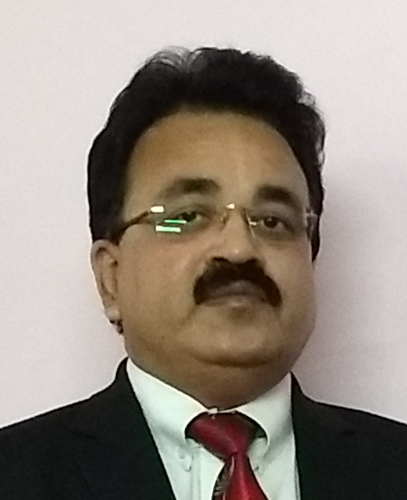 Moderator
Manesh SinghFounder & Principal ConsultantMDRM Consultants & Advisors / BYGSeasoned strategic business leader with over 25 years of experience across the satellite, telecom, and interconnect industries. Demonstrated expertise in setting up, scaling, and managing high-growth businesses across India and the APAC region, with a strong track record in strategy development, market expansion, and full P&L ownership. Held senior leadership roles at global technology firms including ND Satcom AG, Nortel Networks, PEI-Genesis Inc., AEG Power Solutions, and the Tata Group. Served at the board level for PEI-Genesis India and Venturi Wireless, contributing to strategic direction, corporate governance, and sustainable regional growth. Pioneered the introduction of DAMA-SCPC and TDMA-Frame Relay-based VSAT network technologies in India and APAC, significantly advancing satellite communication capabilities across the region.
Moderator
Manesh SinghFounder & Principal ConsultantMDRM Consultants & Advisors / BYGSeasoned strategic business leader with over 25 years of experience across the satellite, telecom, and interconnect industries. Demonstrated expertise in setting up, scaling, and managing high-growth businesses across India and the APAC region, with a strong track record in strategy development, market expansion, and full P&L ownership. Held senior leadership roles at global technology firms including ND Satcom AG, Nortel Networks, PEI-Genesis Inc., AEG Power Solutions, and the Tata Group. Served at the board level for PEI-Genesis India and Venturi Wireless, contributing to strategic direction, corporate governance, and sustainable regional growth. Pioneered the introduction of DAMA-SCPC and TDMA-Frame Relay-based VSAT network technologies in India and APAC, significantly advancing satellite communication capabilities across the region. Ashwin MahavadiSr Vice PresidentSkyroot AerospaceAshwin is a structural engineer by training.
Ashwin MahavadiSr Vice PresidentSkyroot AerospaceAshwin is a structural engineer by training.Terabit Optics, Cloud Agility, Digitization, and AI: The Modernization Roadmap for Satellite Networks
Satellite networks are being reshaped by a new class of transformational technologies. This panel explores how Terabit Class high-capacity optical ground systems, transport, waveform virtualization, and generative AI/ML are enabling more adaptive, efficient, and autonomous satellite systems--supporting applications such as signal classification, spectrum monitoring, and real-time network optimization. This session challenges industry stakeholders to accelerate the adoption of these technologies so that multi-orbit SATCOM remains an innovative, indispensable component of global connectivity well beyond 2030.
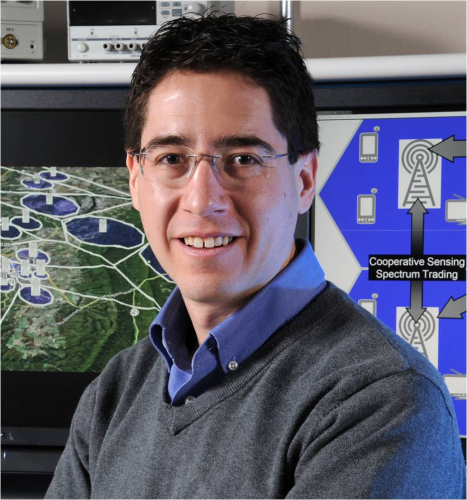 Moderator
Dr. Juan Deaton PhDWAVE Consortium Executive Director & Chief Alignment OfficerAlignmentDr. Juan Deaton is Executive Director of the Waveform Architecture for Virtualized Ecosystems (WAVE) Consortium, where he leads efforts to standardize waveform virtualization on common compute platforms. Under his leadership, WAVE has brought together the Department of Defense and major commercial SATCOM operators to enable an open, interoperable, and scalable architecture for waveform deployment. While employed as a senior research scientist at Apothym Technologies Group, Juan served as a board director of the Digital IF Interoperability (DIFI) Consortium and was a key contributor to the DIFI v1.1 specification. During this time, Juan started and chaired MILCOM's first "Digital Transformation of SATCOM," which is now in its fourth year. In his work as an author, he wrote the Defense Technology Information Center's report, Digital Transformation of Satellite Communication Networks and has published several articles in Constellations and Via Satellite. Most recently, he is serving on the inaugural Tech Seminar Advisory Committee for SATShow 2026. During most of his time, Juan runs Alignment Consulting & Engineering, where he advises satellite operators, startups, and government agencies on digital transformation, waveform strategy, and advanced signal processing. Juan earned his Ph.D. and M.S. from Virginia Tech, as well as a B.S. in Electrical Engineering from the University of Idaho.
Moderator
Dr. Juan Deaton PhDWAVE Consortium Executive Director & Chief Alignment OfficerAlignmentDr. Juan Deaton is Executive Director of the Waveform Architecture for Virtualized Ecosystems (WAVE) Consortium, where he leads efforts to standardize waveform virtualization on common compute platforms. Under his leadership, WAVE has brought together the Department of Defense and major commercial SATCOM operators to enable an open, interoperable, and scalable architecture for waveform deployment. While employed as a senior research scientist at Apothym Technologies Group, Juan served as a board director of the Digital IF Interoperability (DIFI) Consortium and was a key contributor to the DIFI v1.1 specification. During this time, Juan started and chaired MILCOM's first "Digital Transformation of SATCOM," which is now in its fourth year. In his work as an author, he wrote the Defense Technology Information Center's report, Digital Transformation of Satellite Communication Networks and has published several articles in Constellations and Via Satellite. Most recently, he is serving on the inaugural Tech Seminar Advisory Committee for SATShow 2026. During most of his time, Juan runs Alignment Consulting & Engineering, where he advises satellite operators, startups, and government agencies on digital transformation, waveform strategy, and advanced signal processing. Juan earned his Ph.D. and M.S. from Virginia Tech, as well as a B.S. in Electrical Engineering from the University of Idaho.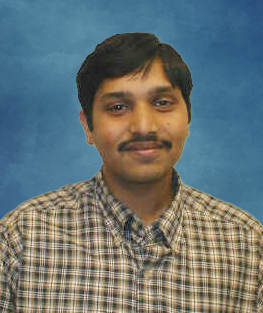 Raghunandan JanardhanVice President, Special Projects & Defense ProgramsHughes
Raghunandan JanardhanVice President, Special Projects & Defense ProgramsHughes -
Advancing Defense Capabilities with New Satellite Propulsion Technologies
The discussion will highlight the importance of new technologies in enhancing the capabilities of military satellites and spacecraft. Topics will include the role of additive manufacturing in creating more efficient and resilient propulsion systems, and the benefits of advanced green propellants for sustainable and safer space missions. The goal is to bring recent R&D developments to the forefront, summarizing their potential impact on defense strategies and operations. By engaging with the latest research and technological advancements, this panel aims to provide the GovMilSpace audience with a comprehensive understanding of how these innovations can be leveraged to strengthen national security and defense capabilities. The R&D is groundbreaking - but what does it mean for defense customers?
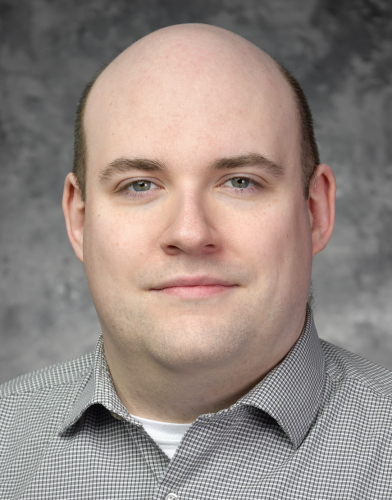 Moderator
Dr. Shae WilliamsStaff Project EngineerMoog Inc.Dr. Williams received his doctorate from Purdue University for work designing new RF microthermal electric propulsion thrusters. Since then, he has spent 13 years in industry at small and large companies focused on in-space propulsion, rising to Chief Engineer and head of the engineering division at Digital Solid State Propulsion in Reno, Nevada. There, he focused on liquid and solid propulsion enabled by novel new chemistry formulations, culminating in a successful flight of the Spinsat mission. Dr. Williams is currently a Staff Engineer in Moog's Engines group, with the portfolio of determining group strategy, developing new technologies in in-space propulsion, and bringing them to market.
Moderator
Dr. Shae WilliamsStaff Project EngineerMoog Inc.Dr. Williams received his doctorate from Purdue University for work designing new RF microthermal electric propulsion thrusters. Since then, he has spent 13 years in industry at small and large companies focused on in-space propulsion, rising to Chief Engineer and head of the engineering division at Digital Solid State Propulsion in Reno, Nevada. There, he focused on liquid and solid propulsion enabled by novel new chemistry formulations, culminating in a successful flight of the Spinsat mission. Dr. Williams is currently a Staff Engineer in Moog's Engines group, with the portfolio of determining group strategy, developing new technologies in in-space propulsion, and bringing them to market.Unlocking Commercial Value in Africa's Emerging Markets
As satellite operators seek growth beyond saturated markets, Africa is emerging as a key frontier -- commercially, strategically, and demographically. This panel will explore trends shaping commercial satellite expansion in the region, including rising demand from mobile operators and governments, evolving pricing models, regulatory shifts, and emerging partnership frameworks. Drawing on direct experience deploying satellite solutions across Africa, the session will unpack the challenges of market penetration, infrastructure integration, and local adaptation -- offering actionable insights for global players looking to navigate commercial growth in high-potential, underserved markets.
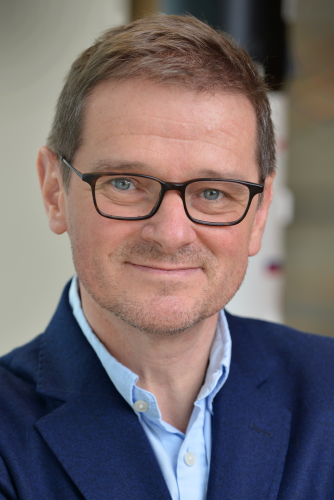 Jean-Philippe GilletSenior Vice President, Media, Mobility and NetworksSESJean-Philippe Gillet leads Intelsat's Networks business. He is responsible for the development of Intelsat's broadband strategy, product development and execution of Intelsat's broadband initiatives worldwide. Prior to his current position, Mr. Gillet served as Intelsat's Vice President for Europe, the Middle East and Africa from 2014-2017. From 2006-2013, he served as Intelsat's Vice President, Sales for Europe and the Middle East. From 2003-2006, he served as Intelsat's Vice President, Media Sales. Prior to joining Intelsat in 2003, Mr. Gillet served for five years as Vice President of International Sales for Globecast North America (France Telecom Group). Prior to that position, he served three years as Globecast's Director of Sales for Europe, the Middle East and North America. Before joining Globecast, Mr. Gillet served as Sales and Marketing Manager for France Telecom from 1990-1995. Mr. Gillet earned a Master of Science Degree in Information Technology from Ecole Superieure de Commerce in France. Prior to his Master's program, he studied at the Ecole Superieure d'Informatique Engineering School in France.
Jean-Philippe GilletSenior Vice President, Media, Mobility and NetworksSESJean-Philippe Gillet leads Intelsat's Networks business. He is responsible for the development of Intelsat's broadband strategy, product development and execution of Intelsat's broadband initiatives worldwide. Prior to his current position, Mr. Gillet served as Intelsat's Vice President for Europe, the Middle East and Africa from 2014-2017. From 2006-2013, he served as Intelsat's Vice President, Sales for Europe and the Middle East. From 2003-2006, he served as Intelsat's Vice President, Media Sales. Prior to joining Intelsat in 2003, Mr. Gillet served for five years as Vice President of International Sales for Globecast North America (France Telecom Group). Prior to that position, he served three years as Globecast's Director of Sales for Europe, the Middle East and North America. Before joining Globecast, Mr. Gillet served as Sales and Marketing Manager for France Telecom from 1990-1995. Mr. Gillet earned a Master of Science Degree in Information Technology from Ecole Superieure de Commerce in France. Prior to his Master's program, he studied at the Ecole Superieure d'Informatique Engineering School in France. Reuben OshomahRegional Director West AfricaAvanti Satellite CommunicationsReuben Oshomah is a business leader and strategist with two decades of experience driving digital infrastructure growth across Africa. As Regional Director for West & Central Africa at Avanti Communications, he leads the company's expansion across underserved and complex markets -- working with mobile operators, towercos, governments, and partners to deliver commercially viable satellite connectivity at scale. Reuben has played a pivotal role in deploying satellite solutions that enable real-world impact -- powering education, fintech, healthcare, and enterprise services across multiple African countries.. His work sits at the intersection of commercial strategy, public-private collaboration, and inclusive innovation in emerging regions. He has spoken on prominent platforms including: MWC Africa (Kigali) - on digital inclusion and rural connectivity ITW Africa (Nairobi) - on satellite's role in bridging infrastructure gaps Nigeria e-Government Summit - as a yearly panelist on telecom infrastructure for digital public services He is also a TEDx Speaker - delivering talks on taking bold action and creating change. Reuben was previously invited to speak at SatShow 2025 but was unavailable to attend. He now returns to the conversation with a deeper body of experience and fresh insights on unlocking commercial value through satellite in high-growth markets. LinkedIn: linkedin.com/in/reubenoshomah.
Reuben OshomahRegional Director West AfricaAvanti Satellite CommunicationsReuben Oshomah is a business leader and strategist with two decades of experience driving digital infrastructure growth across Africa. As Regional Director for West & Central Africa at Avanti Communications, he leads the company's expansion across underserved and complex markets -- working with mobile operators, towercos, governments, and partners to deliver commercially viable satellite connectivity at scale. Reuben has played a pivotal role in deploying satellite solutions that enable real-world impact -- powering education, fintech, healthcare, and enterprise services across multiple African countries.. His work sits at the intersection of commercial strategy, public-private collaboration, and inclusive innovation in emerging regions. He has spoken on prominent platforms including: MWC Africa (Kigali) - on digital inclusion and rural connectivity ITW Africa (Nairobi) - on satellite's role in bridging infrastructure gaps Nigeria e-Government Summit - as a yearly panelist on telecom infrastructure for digital public services He is also a TEDx Speaker - delivering talks on taking bold action and creating change. Reuben was previously invited to speak at SatShow 2025 but was unavailable to attend. He now returns to the conversation with a deeper body of experience and fresh insights on unlocking commercial value through satellite in high-growth markets. LinkedIn: linkedin.com/in/reubenoshomah. -
Room: Unveiled Theater, Exhibit Hall
Partner Session sponsored by Kratos
-
Battlefield to Cloud: Enabling Data-Driven Decisions at the Tactical Edge
In today's complex multi-domain battlespace, information dominance is becoming the key differentiator. Disconnected tactical systems and limited bandwidth have long prevented commanders from accessing, analyzing, and acting on critical data in real time. But emerging solutions are transforming how data is processed and delivered at the tactical edge. This panel will bring together senior representatives from the Army, the Navy, and the Space Force to explore how advanced analytics, tactical cloud infrastructure, and resilient connectivity are converging to shape the future of battlefield decision-making. Attendees will learn: - How emerging space-based networks are solving real-world challenges in multi-domain operations - The operational imperatives behind connectivity at the edge and the risks of delay - Perspectives from each service branch on modernization, interoperability, and mission impact
Small and Medium-Lift Launch Services: Flexibility and Customization
Small and Medium-Lift launch vehicles serve a wider range of customers, offering several advantages in flexibility and customization, as well as lower costs. These disruptive, dedicated rockets are also rapidly evolving to allow for more control over launch timing and orbital placement. In this session, launch sector leaders will outline upcoming new services that will be made available to customers during the next few years. The discussion will also include building new space ports, the impact of vertical integration, and how they plan to keep space accessible to everyone who needs it.
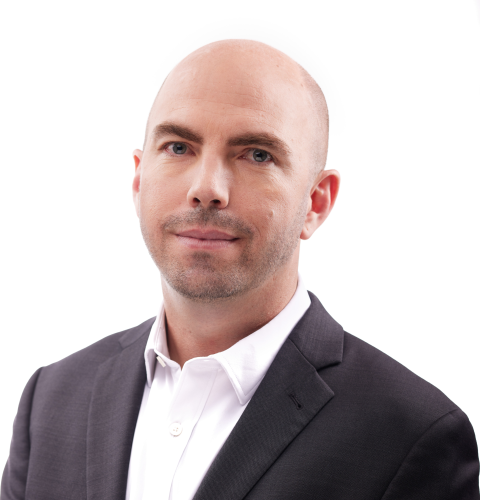 Adam OakesVice President of LaunchFirefly AerospaceAs Vice President of Launch Vehicles, Adam Oakes oversees Firefly's launch vehicle programs, including our small launch vehicle, Alpha, and our medium launch vehicle. This includes leading the vision and strategy, technology development, and key aspects of launch vehicle manufacturing, testing, integration, and operations. Prior to joining the team, Adam served in multiple roles over his 10 years working at SpaceX. He led several engine development and qualification campaigns for the Falcon/Merlin product line, supported construction of the rocket engine test stands as Director of Texas Production and Test at SpaceX's facility in McGregor, Texas, and served as the Director of Propulsion Production at SpaceX's Hawthorne facility. Adam started his career at ATK (Alliant Tech System), working as a design engineer on human-rated solid rocket motors before supporting the development of ATK's Booster Separation Motor program.
Adam OakesVice President of LaunchFirefly AerospaceAs Vice President of Launch Vehicles, Adam Oakes oversees Firefly's launch vehicle programs, including our small launch vehicle, Alpha, and our medium launch vehicle. This includes leading the vision and strategy, technology development, and key aspects of launch vehicle manufacturing, testing, integration, and operations. Prior to joining the team, Adam served in multiple roles over his 10 years working at SpaceX. He led several engine development and qualification campaigns for the Falcon/Merlin product line, supported construction of the rocket engine test stands as Director of Texas Production and Test at SpaceX's facility in McGregor, Texas, and served as the Director of Propulsion Production at SpaceX's Hawthorne facility. Adam started his career at ATK (Alliant Tech System), working as a design engineer on human-rated solid rocket motors before supporting the development of ATK's Booster Separation Motor program.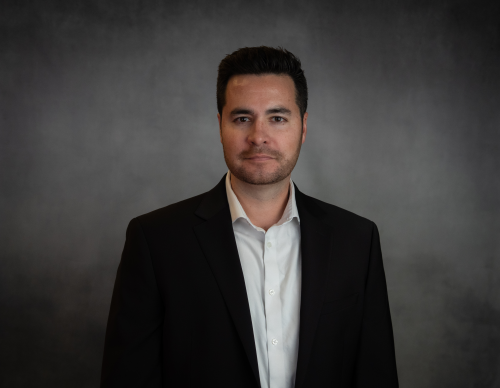 Brian RogersVP - Global Launch ServicesRocket LabAs Vice President - Global Launch Services, Brian is responsible for Rocket Lab's global defense and civil launch portfolios. With a career spanning space and launch segments, Brian brings a transformative perspective to U.S. Government and Allies' developmental and operational systems. Before joining Rocket Lab, Brian was Advanced Systems Manager at Ball Aerospace, leading technology development programs for Defense and Intelligence customers across spacecraft and remote sensing payloads. Brian's aerospace career includes leadership roles in launch vehicle design, manufacturing, and launch support of the Atlas V, Delta IV, and Vulcan-Centaur launch vehicles with United Launch Alliance, and systems engineering of the Ares launch vehicles at NASA Marshall Space Flight Center. Brian holds a Bachelor of Science in Mechanical Engineering from the University of Colorado, a Master of Science in Mechatronics Engineering from the University of Denver, a Master of Business Administration from Colorado State University, and was awarded a US Utility Patent in 2014.
Brian RogersVP - Global Launch ServicesRocket LabAs Vice President - Global Launch Services, Brian is responsible for Rocket Lab's global defense and civil launch portfolios. With a career spanning space and launch segments, Brian brings a transformative perspective to U.S. Government and Allies' developmental and operational systems. Before joining Rocket Lab, Brian was Advanced Systems Manager at Ball Aerospace, leading technology development programs for Defense and Intelligence customers across spacecraft and remote sensing payloads. Brian's aerospace career includes leadership roles in launch vehicle design, manufacturing, and launch support of the Atlas V, Delta IV, and Vulcan-Centaur launch vehicles with United Launch Alliance, and systems engineering of the Ares launch vehicles at NASA Marshall Space Flight Center. Brian holds a Bachelor of Science in Mechanical Engineering from the University of Colorado, a Master of Science in Mechatronics Engineering from the University of Denver, a Master of Business Administration from Colorado State University, and was awarded a US Utility Patent in 2014.VIP Session: CFO Forum: Factors that Shape Pricing Forecasts
This session is open only to Premium Pass holders and is closed to the press. Chatham House rules will be in effect. This year's CFO Forum will focus on the factors that CFOs believe to be the biggest influences on future pricing forecasts for services, manufacturing, hardware, and launch costs. How are CFOs planning for price fluctuations in the market? How is the changing dynamic of global trade impacting costs along the supply chain? How do all of these elements factor in to pricing satellite solutions and services to customers? Find out how the CFOs of the most successful companies in our industry are adapting business models to stay competitive and sustain long-term growth.
 Lisa PatakiCFOSES
Lisa PatakiCFOSES
Thursday, March 26
-
Room: Orbit Theater
AI-Enabled Cyber Defense for End-to-End Space Systems
The cybersecurity landscape for space systems is evolving rapidly, with threats now spanning the entire lifecycle of a mission - from initial design to data delivery. Artificial Intelligence (AI) has become a vital enabler of space system cybersecurity. AI enhances threat detection, automates anomaly recognition, accelerates incident response, and supports self-healing operations. In this session, you'll learn how AI delivers proactive defense where traditional methods fall short - especially in complex, distributed, and high-latency environments like space. We'll also address how the use of AI introduces its own set of security challenges. If not protected, AI models can be manipulated via adversarial attacks, poisoned training data, or compromised inference pipelines--leading to false positives, operational disruptions, or even satellite misbehavior. This makes AI cyber hardening essential. For space sector executives, this session focuses not just simply on a technical concern - but a strategic and reputational imperative.
 Dr. Rajeev GopalVice President, Advanced Programs, Government & Defense DivisionHughesDr. Rajeev Gopal, vice president, at Hughes Network Systems, LLC (HUGHES), leads the company's advanced engineering programs, developing innovative solutions for resilient and protected communications in defense applications. Dr. Gopal's work spans Low Earth Orbit (LEO) and Geostationary Orbit (GEO) High-Throughput Satellite (HTS) technologies, leveraging artificial intelligence (AI), machine learning (ML), cloud, and cyber security innovations. In more than 25 years at Hughes, Dr. Gopal has held a variety of leadership roles in satellite network systems engineering and software development. Most recently, he has focused on AI/ML, software-defined networking, 5G, and enterprise management architectures. Prior to joining Hughes, Dr. Gopal led automation projects for clinical and cancer research and development at CTIS. Dr. Gopal holds several patents and has published more than 40 technical papers. A member of the IEEE 5G World Forum, he serves on the editorial board of Wiley's International Journal of Satellite Communications and Networking (IJSCN). Dr. Gopal earned a Doctor of Philosophy Degree in Computer Science from Vanderbilt University in Nashville, Tennessee, and a Bachelor of Engineering Degree in Electrical Engineering from the Birla Institute of Technology & Science (BITS) in Pilani, India. Consumers, businesses, governments and communities around the world benefit from the connected experiences enabled by Hughes technologies and services. To learn more, visit our website at www.hughes.com or follow us on Twitter @HughesConnects and on LinkedIn at www.linkedin.com/company/HughesConnects.
Dr. Rajeev GopalVice President, Advanced Programs, Government & Defense DivisionHughesDr. Rajeev Gopal, vice president, at Hughes Network Systems, LLC (HUGHES), leads the company's advanced engineering programs, developing innovative solutions for resilient and protected communications in defense applications. Dr. Gopal's work spans Low Earth Orbit (LEO) and Geostationary Orbit (GEO) High-Throughput Satellite (HTS) technologies, leveraging artificial intelligence (AI), machine learning (ML), cloud, and cyber security innovations. In more than 25 years at Hughes, Dr. Gopal has held a variety of leadership roles in satellite network systems engineering and software development. Most recently, he has focused on AI/ML, software-defined networking, 5G, and enterprise management architectures. Prior to joining Hughes, Dr. Gopal led automation projects for clinical and cancer research and development at CTIS. Dr. Gopal holds several patents and has published more than 40 technical papers. A member of the IEEE 5G World Forum, he serves on the editorial board of Wiley's International Journal of Satellite Communications and Networking (IJSCN). Dr. Gopal earned a Doctor of Philosophy Degree in Computer Science from Vanderbilt University in Nashville, Tennessee, and a Bachelor of Engineering Degree in Electrical Engineering from the Birla Institute of Technology & Science (BITS) in Pilani, India. Consumers, businesses, governments and communities around the world benefit from the connected experiences enabled by Hughes technologies and services. To learn more, visit our website at www.hughes.com or follow us on Twitter @HughesConnects and on LinkedIn at www.linkedin.com/company/HughesConnects.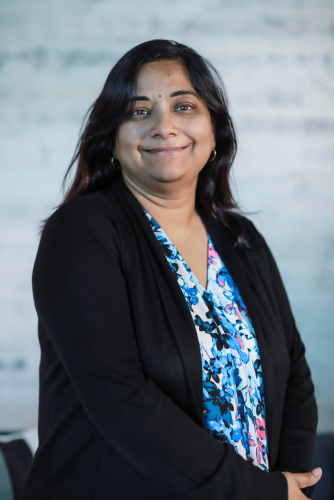 Ms Manjula SriramChief Information OfficerIridium CommunicationsManjula Sriram is the Chief Information Officer at Iridium Communications Inc., the only satellite communications company that offers truly global voice and data coverage. In this role, she focuses on driving strategic and tactical planning, development, evaluation, and coordination of Iridium's technology roadmap and provide the vision and leadership necessary to drive the company's network infrastructure into the future. This includes overseeing the implementation, maintenance and compliance of the entire enterprise-wide technology, security, business intelligence and analytics and billing systems undergirding the telecommunications services provided by Iridium. With her more that fourteen years of senior IT management experience, notable prior roles included Vice President in the role of CIO for The Joint Chiropractic where she was responsible for the commercial and enterprise IT infrastructure for the company's corporate and clinical operations, servicing approximately 700 standalone chiropractic offices. Prior to this, Ms. Sriram spent four years as the Director of Customer Implementation & Support for Early Warning Service, a financial systems company, to provide risk management solutions over a diverse network of 2,300 financial institutions, government entities and payment companies. Ms Sriram holds a Bachelor of Science degree in Computer Science & Electrical Engineering from the University of Wisconsin, an MBA from Keller Graduate School of Management at DeVry University.Room: Unveiled Theater, Exhibit Hall
Ms Manjula SriramChief Information OfficerIridium CommunicationsManjula Sriram is the Chief Information Officer at Iridium Communications Inc., the only satellite communications company that offers truly global voice and data coverage. In this role, she focuses on driving strategic and tactical planning, development, evaluation, and coordination of Iridium's technology roadmap and provide the vision and leadership necessary to drive the company's network infrastructure into the future. This includes overseeing the implementation, maintenance and compliance of the entire enterprise-wide technology, security, business intelligence and analytics and billing systems undergirding the telecommunications services provided by Iridium. With her more that fourteen years of senior IT management experience, notable prior roles included Vice President in the role of CIO for The Joint Chiropractic where she was responsible for the commercial and enterprise IT infrastructure for the company's corporate and clinical operations, servicing approximately 700 standalone chiropractic offices. Prior to this, Ms. Sriram spent four years as the Director of Customer Implementation & Support for Early Warning Service, a financial systems company, to provide risk management solutions over a diverse network of 2,300 financial institutions, government entities and payment companies. Ms Sriram holds a Bachelor of Science degree in Computer Science & Electrical Engineering from the University of Wisconsin, an MBA from Keller Graduate School of Management at DeVry University.Room: Unveiled Theater, Exhibit HallAdvanced On-Orbit Space Operations: Supporting ISAM, RPOD & ISTAR
As space missions grow in complexity, achieving persistent, reliable communications across Low Earth Orbit (LEO), cislunar space, and the lunar surface has become mission critical. From In-Space Assembly and Manufacturing (ISAM) to Rendezvous, Proximity Operations, and Docking (RPOD), and Intelligence, Surveillance, Target Acquisition, and Reconnaissance (ISTAR), tomorrow's orbital infrastructure will depend on always-on connectivity for safety, precision, and mission success. These are some of the biggest growth opportunities in the industry and will propel satellite and space into the future. In this session, we will explore the future of space-based communications that go beyond traditional ground station coverage. Our panel will share the latest developments in on-orbit Wi-Fi, network relays, and hybrid communications architectures that keep spacecraft, onboard equipment, space stations, and lunar infrastructure continuously connected. While also discussing recent and upcoming missions. Attendees will gain insights into: • How persistent in-space communications support ISAM and RPOD operations in LEO and cislunar orbits. • Technical and operational challenges of lunar communications both for cislunar and lunar surface communications. • Enabling autonomy, fault response, and data synchronization for orbital robotics and systems. • Use cases from emerging government and commercial missions, including NASA Artemis, DARPA's initiatives, and orbital service platforms. With the rise of sovereign space assets, defense needs, and private infrastructure development, this panel will provide a forward-looking roadmap for how persistent, secure, and scalable communications will underpin the next decade of in-space operations. We have access to panelists for this session including executives from Momentus Space, Solstar Space, and others. This session will be appropriate for engineers, program managers, mission architects, and technology strategists from NASA, DoD, DARPA, commercial satellite companies, spacecraft manufacturers, and orbital services firms.
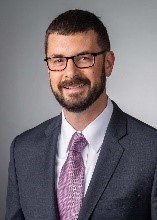 Joe LandonCo-Founder and PresidentRendezvous RoboticsJoe Landon is Co-Founder and President of Rendezvous Robotics, a breakthrough space infrastructure company pioneering modular, autonomous systems that are redefining how spacecraft are built and operated in orbit. Previously, Joe was CEO of Crescent Space, a Lockheed Martin subsidiary building commercial communications and navigation services for lunar missions. He also served as Vice President of Advanced Programs Development at Lockheed Martin Space, where he led R&D, strategy, and business development for the company's multibillion-dollar Commercial Civil Space portfolio. Earlier in his career, he was CFO of Planetary Resources, a pioneering commercial space company that helped catalyze private-sector interest in asteroid mining and space resources. Joe is an Associate Fellow of AIAA and a member of the International Academy of Astronautics. He holds an undergraduate degree in Engineering Physics from Embry-Riddle Aeronautical University, a master's degree in aerospace engineering from the University of Southern California, and an MBA from Harvard Business School
Joe LandonCo-Founder and PresidentRendezvous RoboticsJoe Landon is Co-Founder and President of Rendezvous Robotics, a breakthrough space infrastructure company pioneering modular, autonomous systems that are redefining how spacecraft are built and operated in orbit. Previously, Joe was CEO of Crescent Space, a Lockheed Martin subsidiary building commercial communications and navigation services for lunar missions. He also served as Vice President of Advanced Programs Development at Lockheed Martin Space, where he led R&D, strategy, and business development for the company's multibillion-dollar Commercial Civil Space portfolio. Earlier in his career, he was CFO of Planetary Resources, a pioneering commercial space company that helped catalyze private-sector interest in asteroid mining and space resources. Joe is an Associate Fellow of AIAA and a member of the International Academy of Astronautics. He holds an undergraduate degree in Engineering Physics from Embry-Riddle Aeronautical University, a master's degree in aerospace engineering from the University of Southern California, and an MBA from Harvard Business School -
Room: Orbit Theater
Sustaining the Shield: How Servicing Supports Proliferated Defense Architecture
As the United States accelerates its investment in defense constellations such as the Golden Dome for America, it faces a strategic inflection point: launching more satellites is no longer enough. To ensure space superiority in contested environments, military space systems must be logistically supported, just as terrestrial forces rely on robust sustainment infrastructure. This panel will explore the role of on-orbit servicing - including refueling, inspection and maneuvering - in enabling replenishable and resilient space architectures. Once considered aspirational, these capabilities are now becoming operational realities, enabling persistent coverage, rapid asset repositioning, and satellite lifecycle extension for critical defense infrastructure. This session will feature voices from government, industry, and national security who are shaping the future of sustainment in space. Panelists will discuss: • How space logistics build on terrestrial logistics as the next frontier of military advantage • How servicing supports the Space Layer of the Golden Dome and Proliferated Warfighter Space Architecture • Maneuver and refueling as force-multiplying capabilities Attendees will gain insight into how space logistics extend the U.S. military's historical edge in global sustainment, and why next-gen defense space architectures must include a servicing layer to unlock new levels of mission assurance, strategic deterrence, and operational readiness in an increasingly contested domain.
 Moderator
Dennis WilleSr. Director of Business Development, National SecurityAstroscale U.S.Dennis Wille is a national security space professional with a depth of experience in leadership, team building, communication, and problem solving. After nearly 29 years, Dennis recently retired from the United States Army having served initially as an Armor Officer, then transitioning into the Army's cadre of space operations professionals. Upon retirement, Dennis joined Astroscale U.S. where he works to grow the national security space community's adoption of on-orbit servicing policies and capabilities.Room: Unveiled Theater, Exhibit Hall
Moderator
Dennis WilleSr. Director of Business Development, National SecurityAstroscale U.S.Dennis Wille is a national security space professional with a depth of experience in leadership, team building, communication, and problem solving. After nearly 29 years, Dennis recently retired from the United States Army having served initially as an Armor Officer, then transitioning into the Army's cadre of space operations professionals. Upon retirement, Dennis joined Astroscale U.S. where he works to grow the national security space community's adoption of on-orbit servicing policies and capabilities.Room: Unveiled Theater, Exhibit HallThe Case for a Circular Space Economy
Today's space economy operates around a linear lifecycle model. However, the systems, standards, and CONOPS we rely on in this static and linear model don't work with the complex, multi-mission, and multi-user dynamic environment emerging today. This panel presents a new conceptual model, called the Circular Space Economy (CSE), which is a systems-level approach to how we design, build, and operate in space. The CSE is about enabling new markets, like in-space servicing, assembly, and manufacturing (ISAM), materials marketplaces, as well as shared infrastructure platforms, all while extending asset lifespans, lowering operational costs, and reducing risks associated with debris. This model aims to deliver a long-term competitive advantage, and not just a simple systems upgrade. This panel will present a high-level vision of what a circular future could offer the industry and the steps we can take to get there.
 Moderator
Daniel PorrasCorporate CounselRogue Space Systems CorporationDaniel Porras is a career space lawyer who currently serves as Corporate Counsel and Director of International, Government and Regulatory Affairs at Rogue Space Systems Corporation, a company building orbital robots for in-space logistical services. Daniel has spent much of his career focused on the development of international laws and policies for the long-term sustainability of human space activities. He formerly worked as the Space Security Fellow at the United Nations Institute for Disarmament Research in Geneva where he served the Conference on Disarmament, the official multilateral forum to negotiate disarmament and arms-control agreements. He was also Director of Strategic Partnerships at Secure World Foundation, and Associate Officer for the International Institute for the Unification of Private Law. Daniel is a member of the California Bar and holds a Masters in International Economics Law from Georgetown University.
Moderator
Daniel PorrasCorporate CounselRogue Space Systems CorporationDaniel Porras is a career space lawyer who currently serves as Corporate Counsel and Director of International, Government and Regulatory Affairs at Rogue Space Systems Corporation, a company building orbital robots for in-space logistical services. Daniel has spent much of his career focused on the development of international laws and policies for the long-term sustainability of human space activities. He formerly worked as the Space Security Fellow at the United Nations Institute for Disarmament Research in Geneva where he served the Conference on Disarmament, the official multilateral forum to negotiate disarmament and arms-control agreements. He was also Director of Strategic Partnerships at Secure World Foundation, and Associate Officer for the International Institute for the Unification of Private Law. Daniel is a member of the California Bar and holds a Masters in International Economics Law from Georgetown University. Brendan RosseauStrategy Manager - New GlennBlue OriginMatt Weinzierl is Senior Associate Dean for Faculty Research and Development at Harvard Business School, where he is the Joseph and Jacqueline Elbling Professor of Business Administration in the Business, Government, and the International Economy Unit, and a Research Associate at the National Bureau of Economic Research. From 2022 through 2025, he served as Faculty Chair of the MBA Program at HBS, where he also teaches courses on economic policy and the space sector. His research focuses on the optimal design of economic policy, in particular taxation, with an emphasis on better understanding the philosophical principles underlying policy choices, and on the commercialization of the space sector and its economic implications. Prior to completing his PhD in economics at Harvard University in 2008, Professor Weinzierl served as the Staff Economist for Macroeconomics on the President's Council of Economic Advisers and worked in the New York office of McKinsey & Company.
Brendan RosseauStrategy Manager - New GlennBlue OriginMatt Weinzierl is Senior Associate Dean for Faculty Research and Development at Harvard Business School, where he is the Joseph and Jacqueline Elbling Professor of Business Administration in the Business, Government, and the International Economy Unit, and a Research Associate at the National Bureau of Economic Research. From 2022 through 2025, he served as Faculty Chair of the MBA Program at HBS, where he also teaches courses on economic policy and the space sector. His research focuses on the optimal design of economic policy, in particular taxation, with an emphasis on better understanding the philosophical principles underlying policy choices, and on the commercialization of the space sector and its economic implications. Prior to completing his PhD in economics at Harvard University in 2008, Professor Weinzierl served as the Staff Economist for Macroeconomics on the President's Council of Economic Advisers and worked in the New York office of McKinsey & Company.




